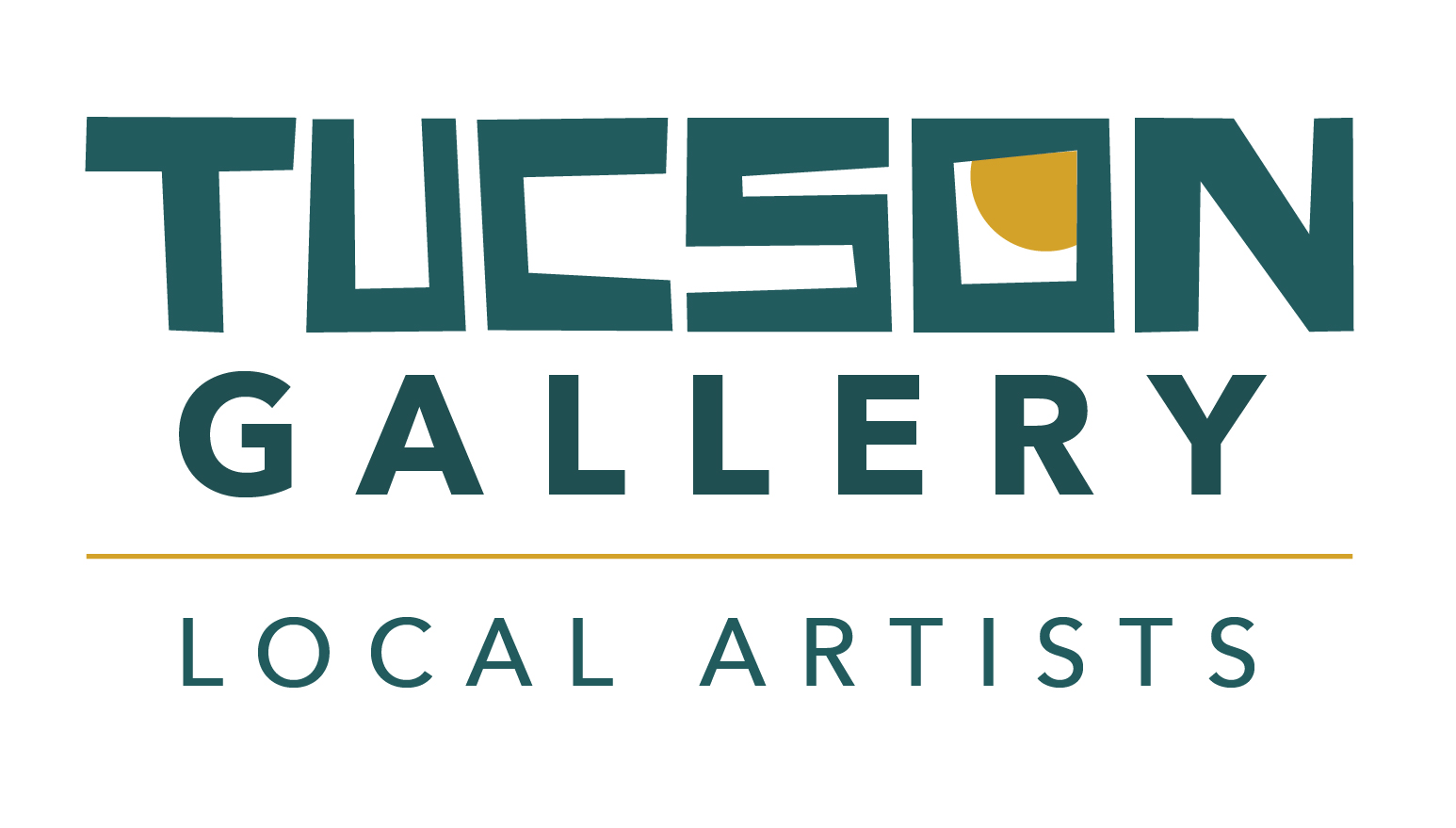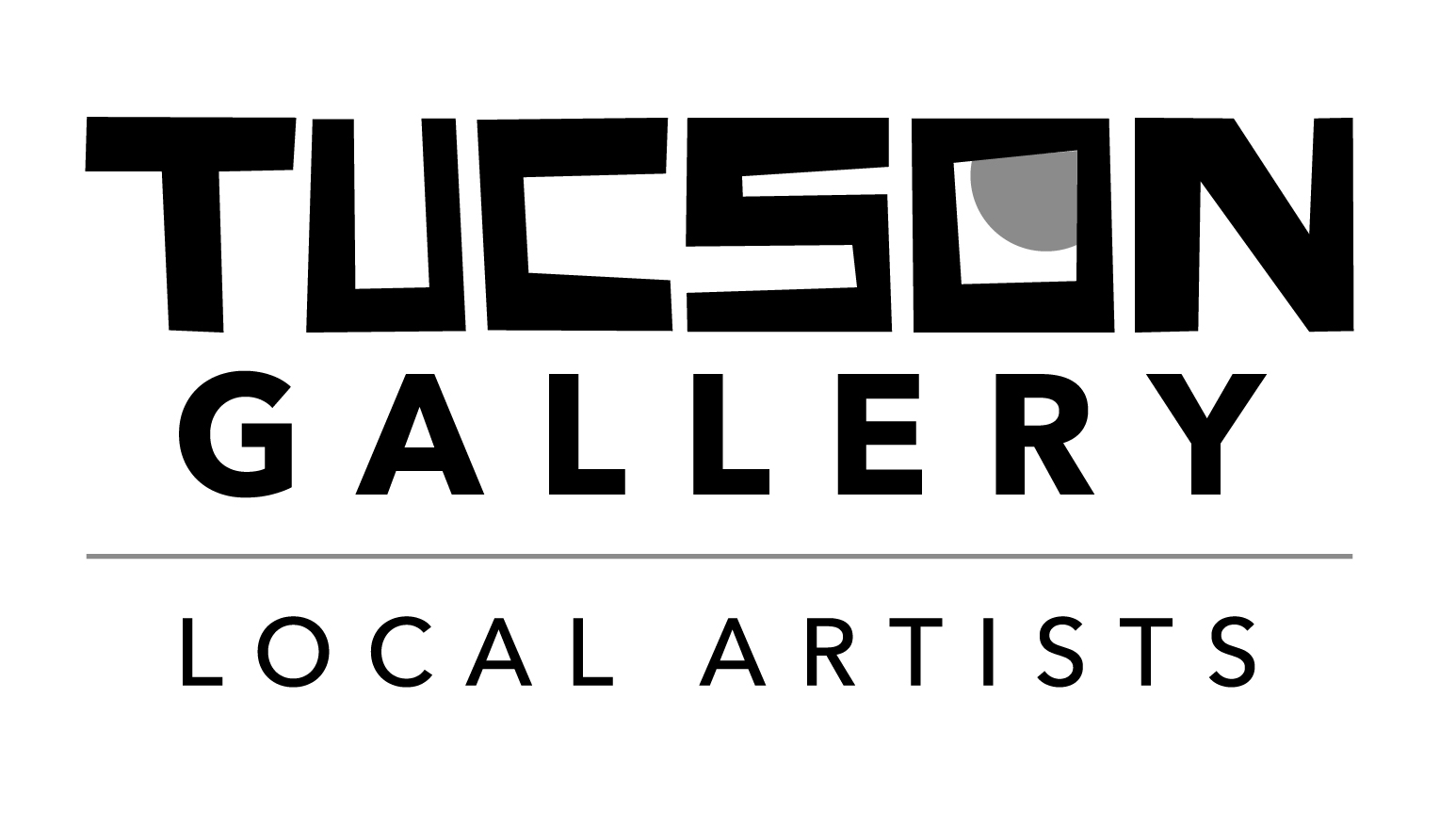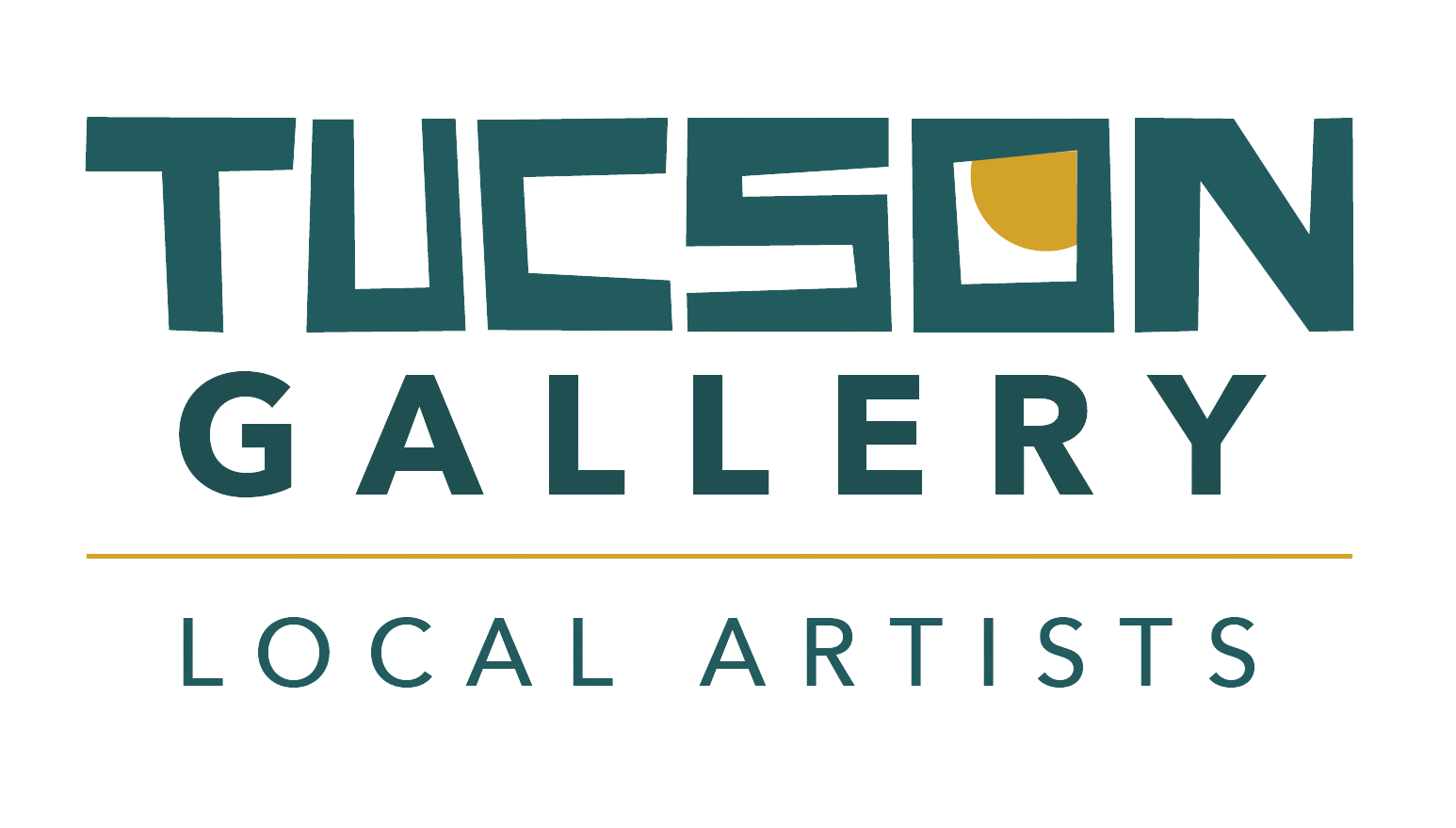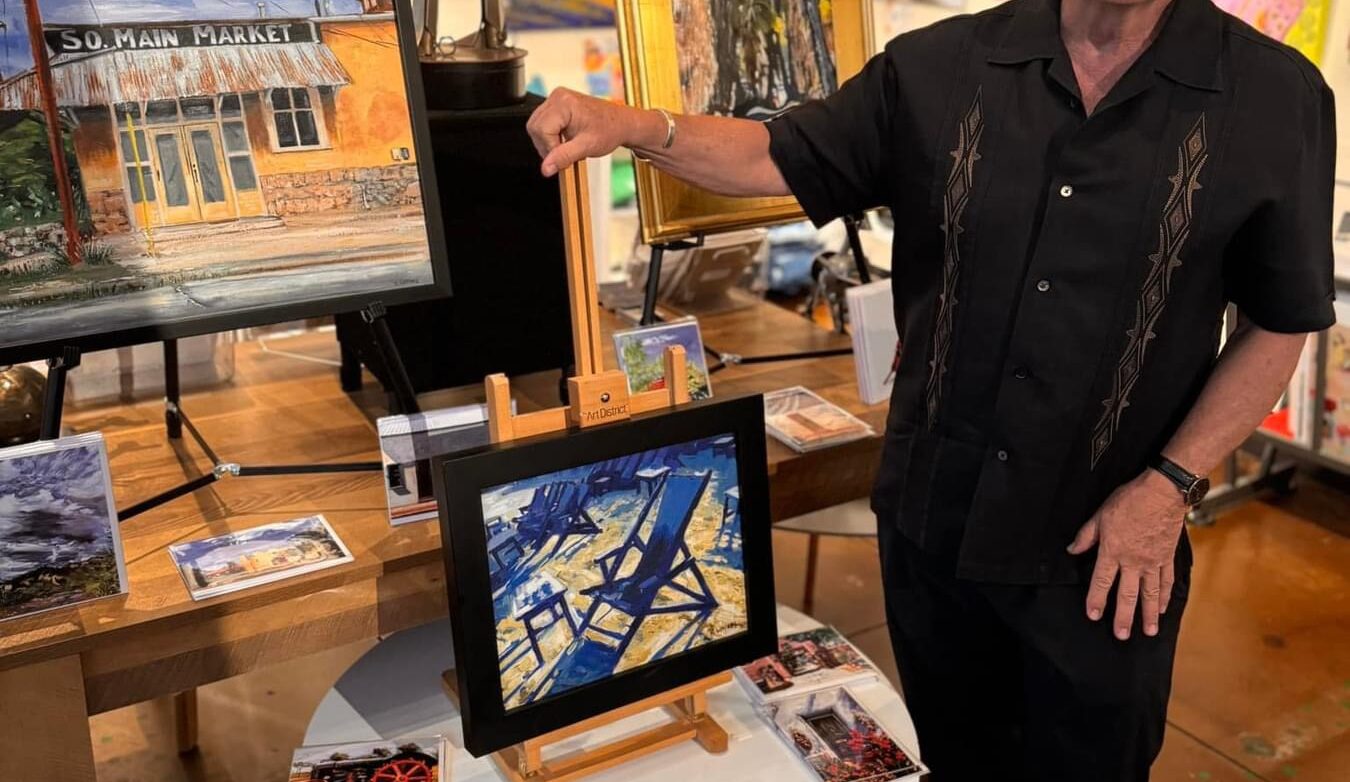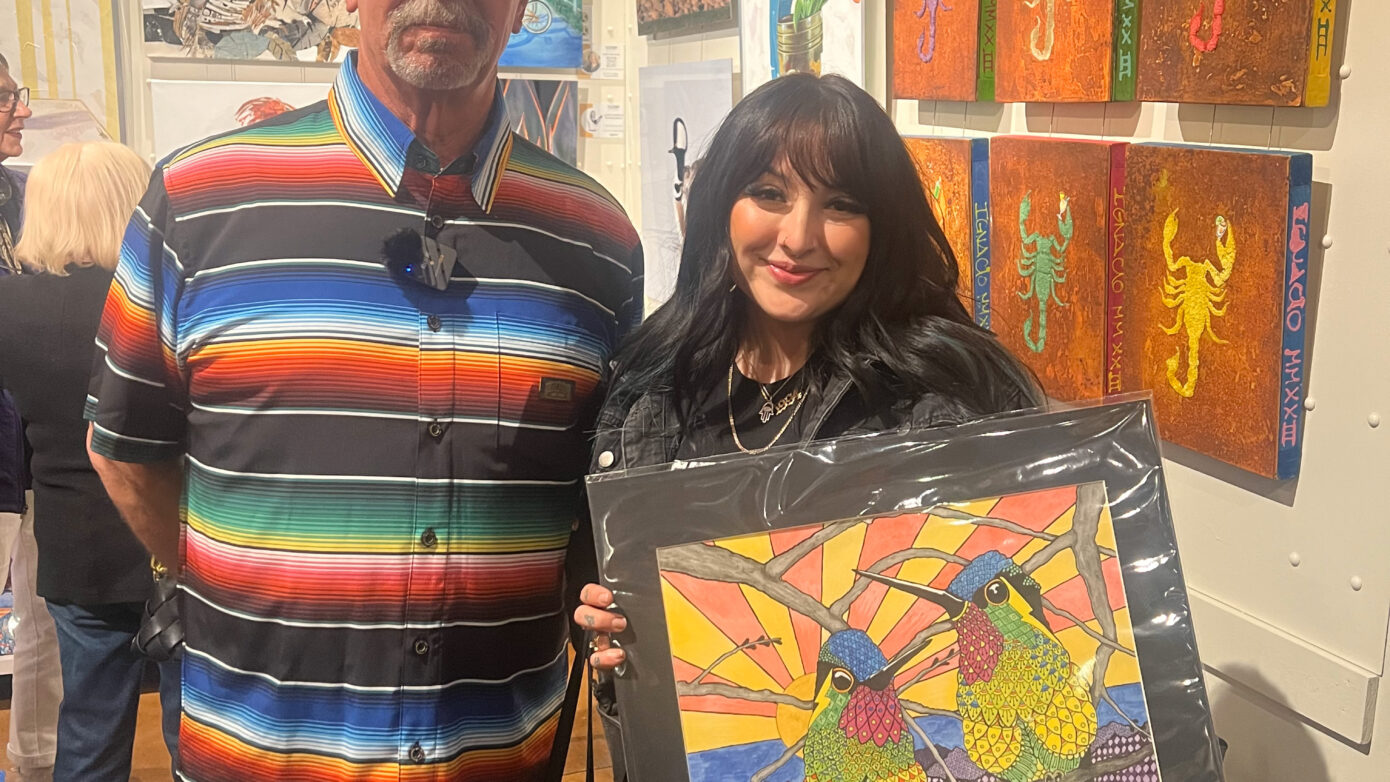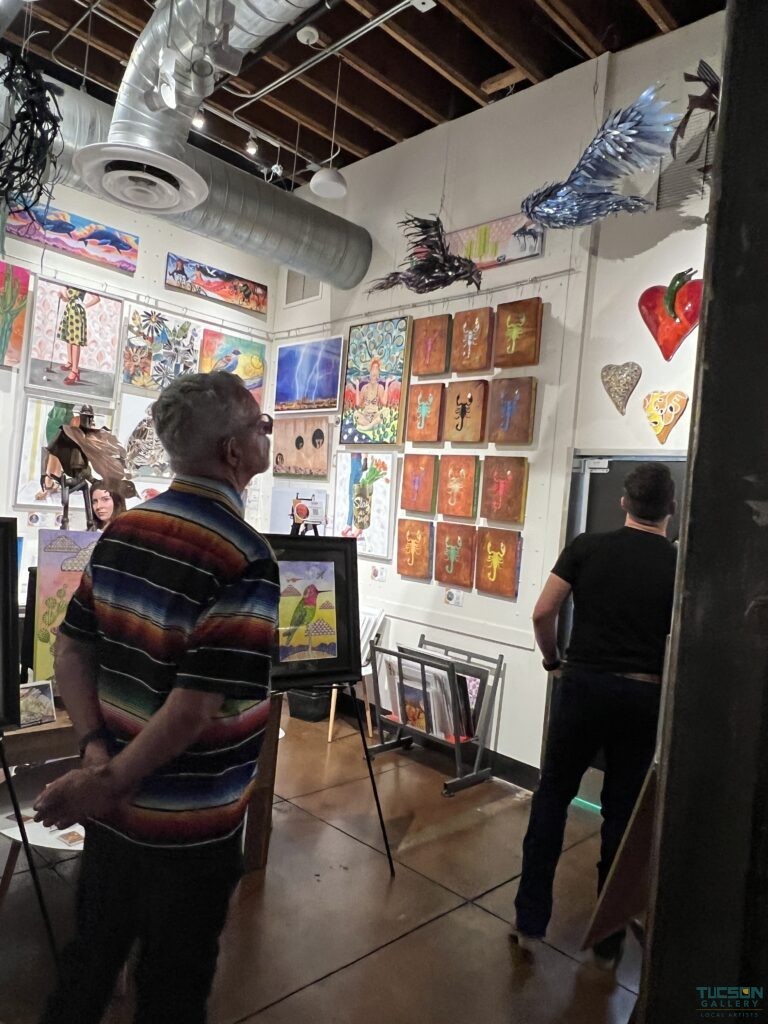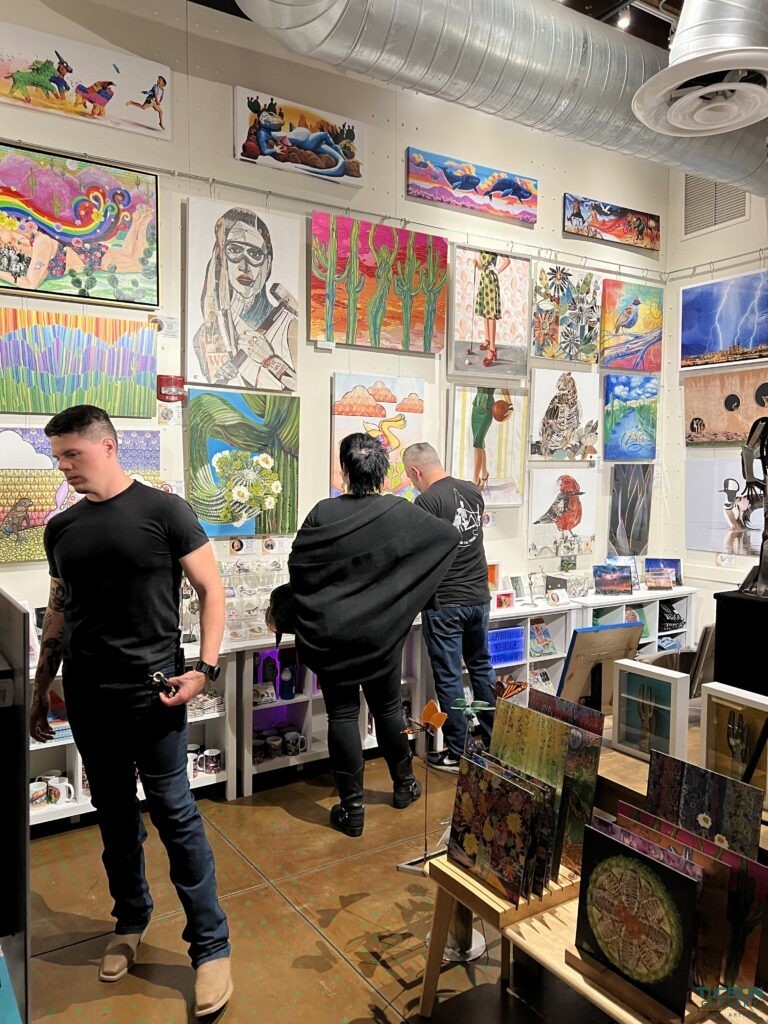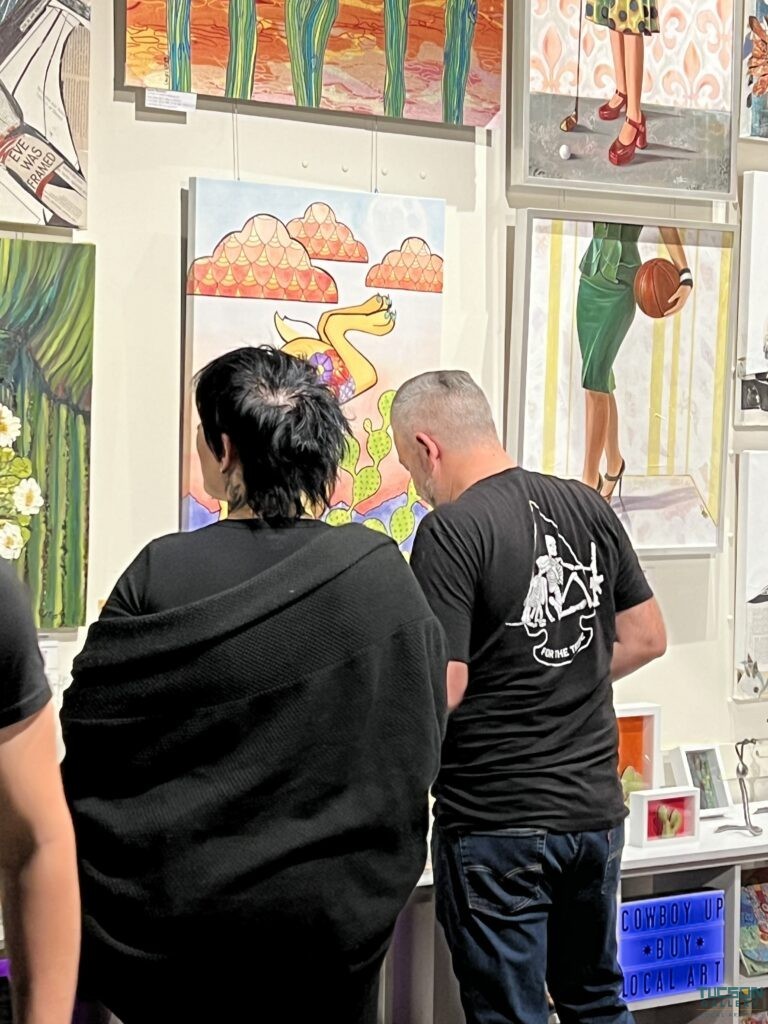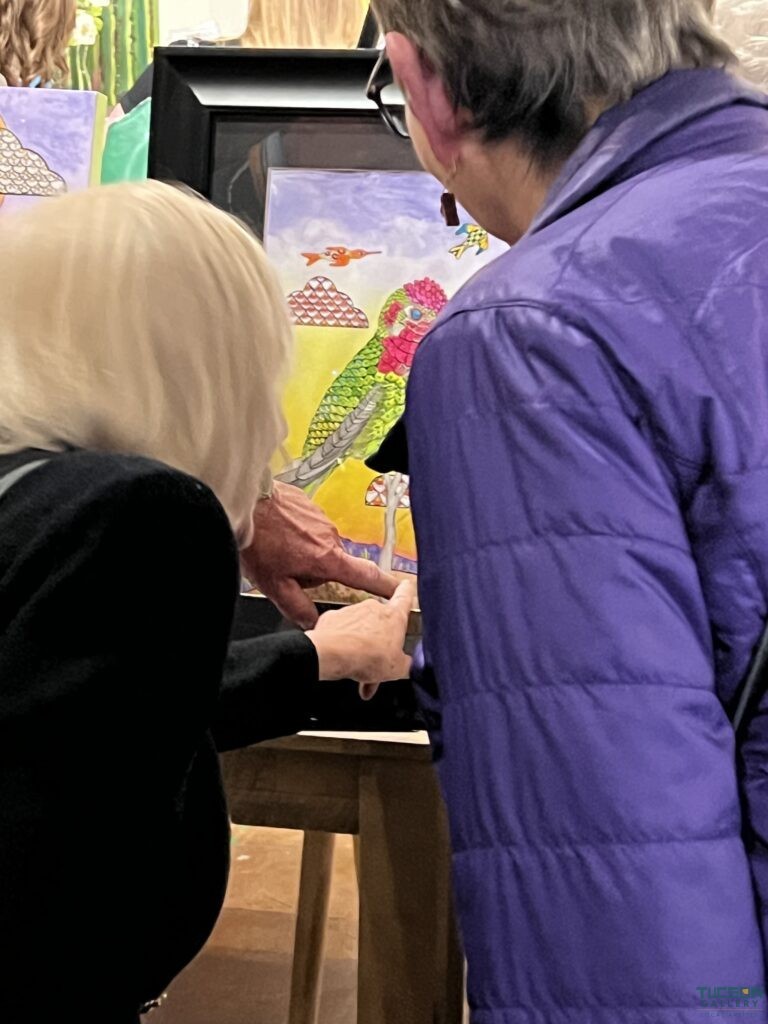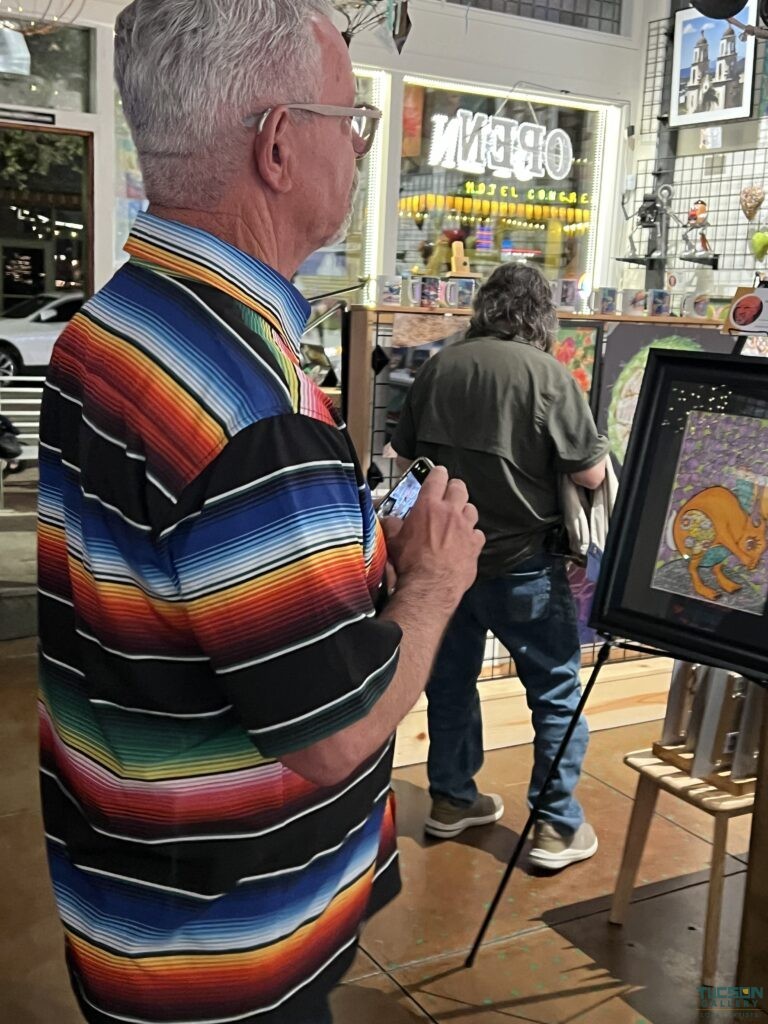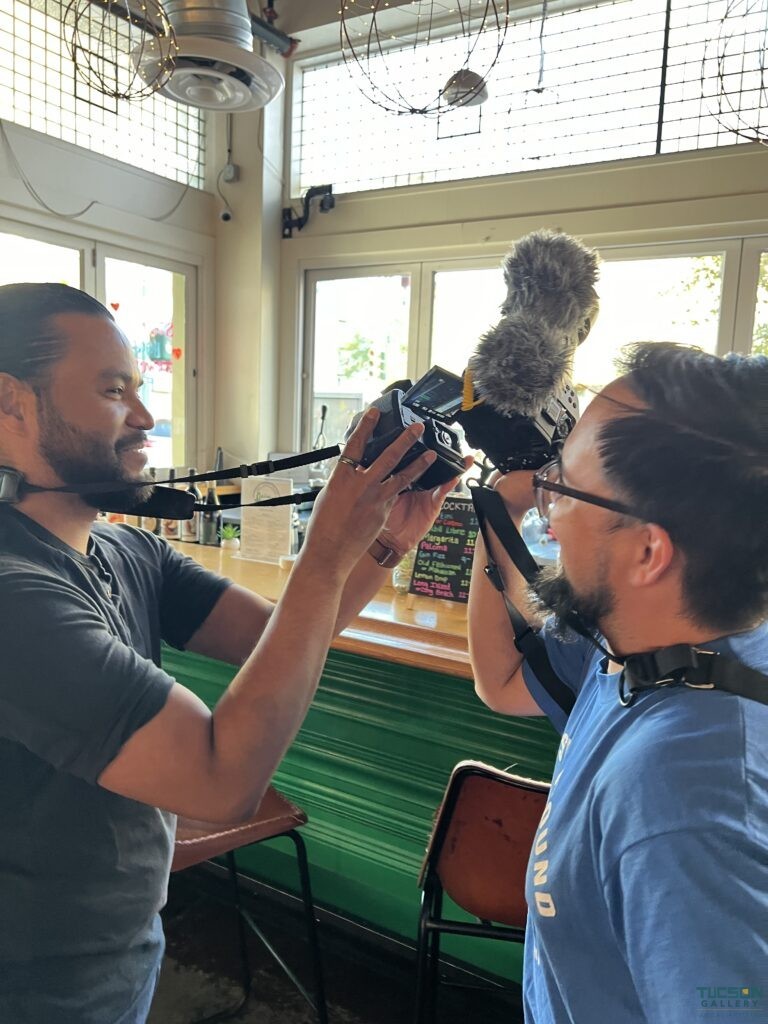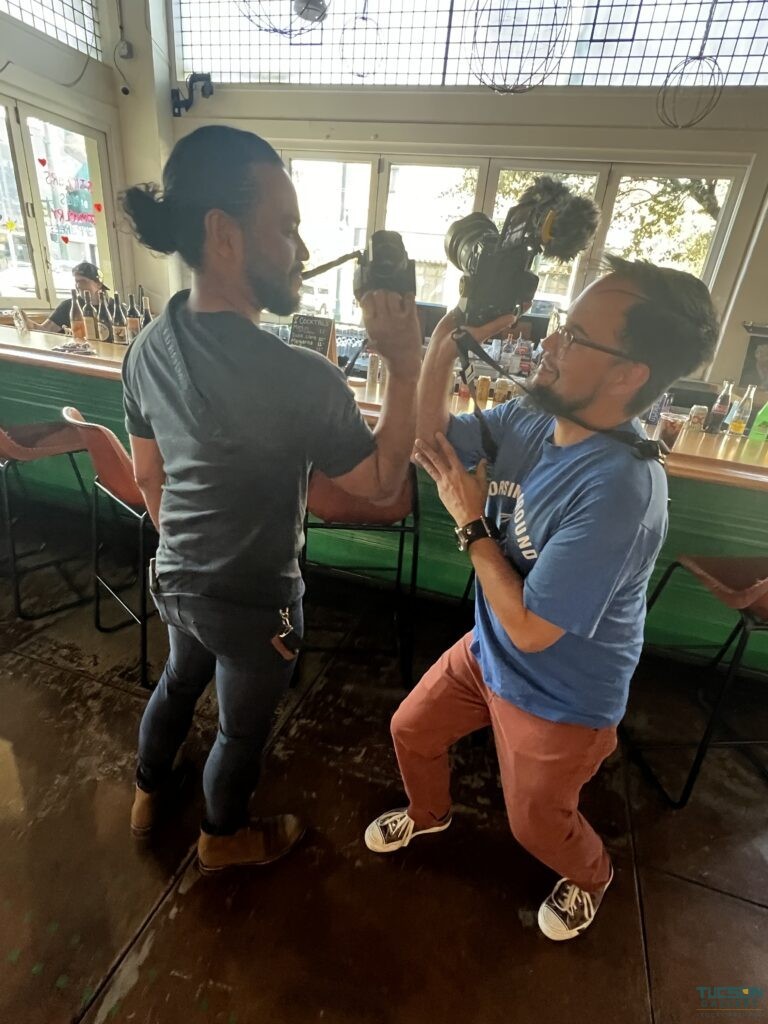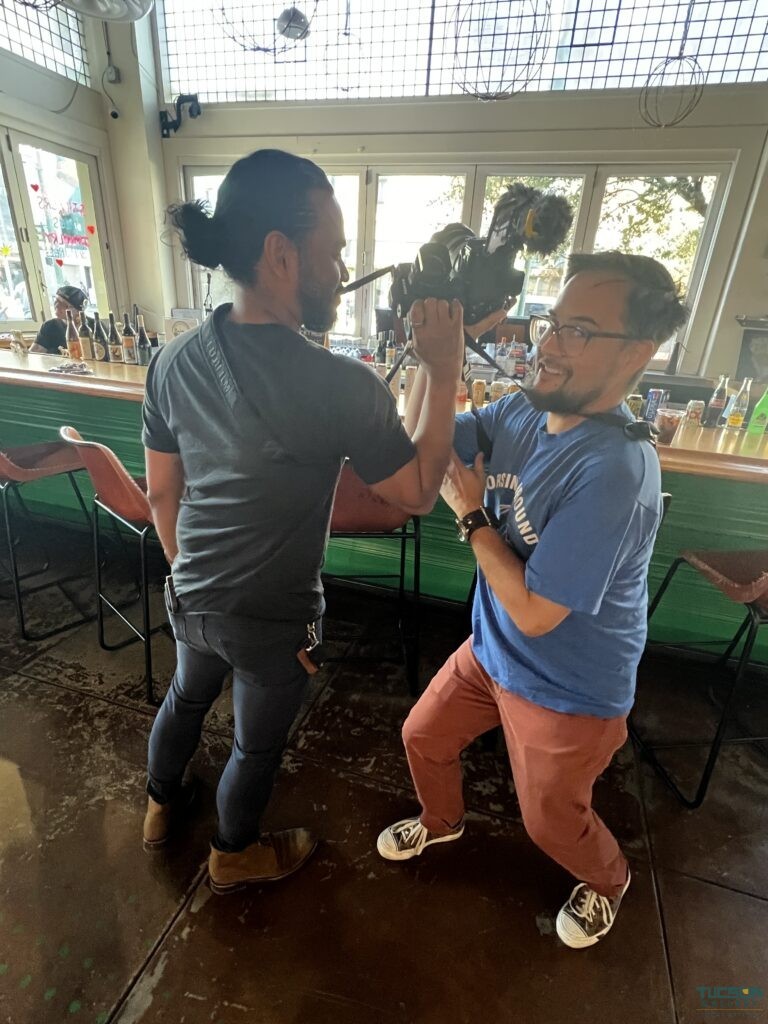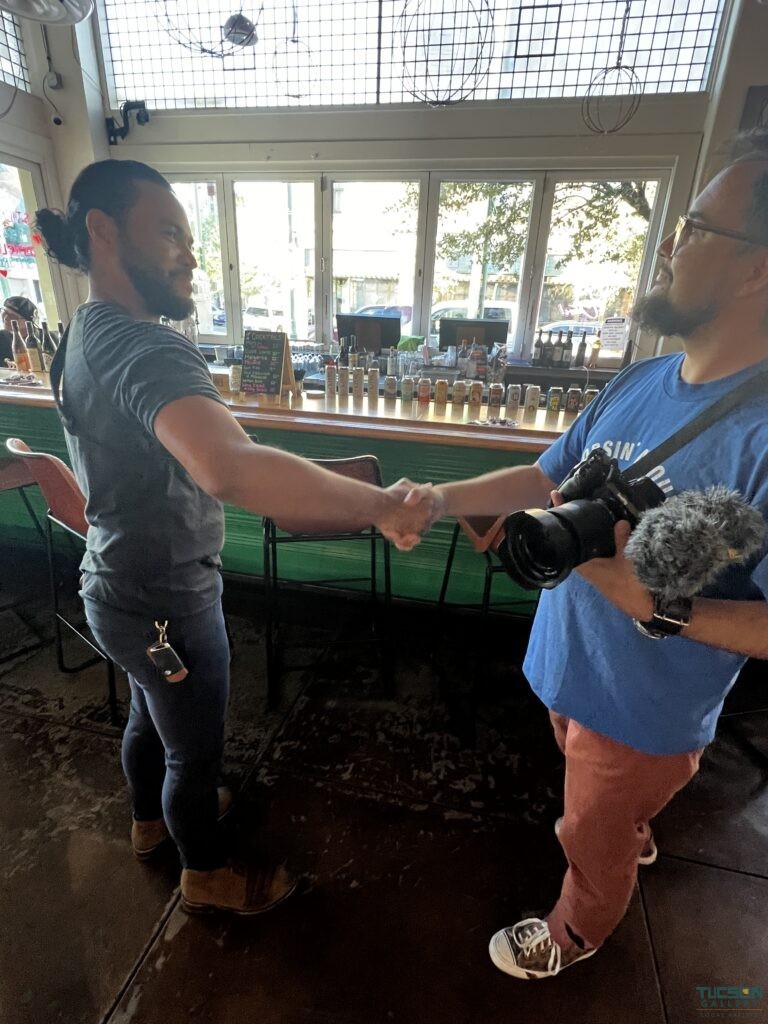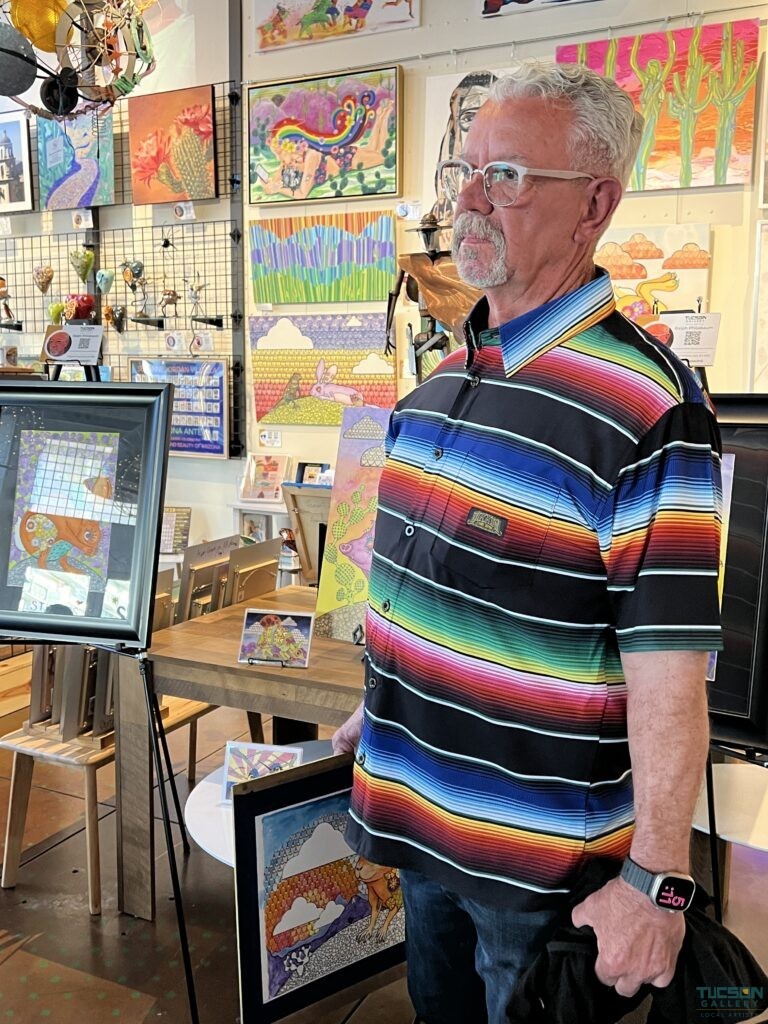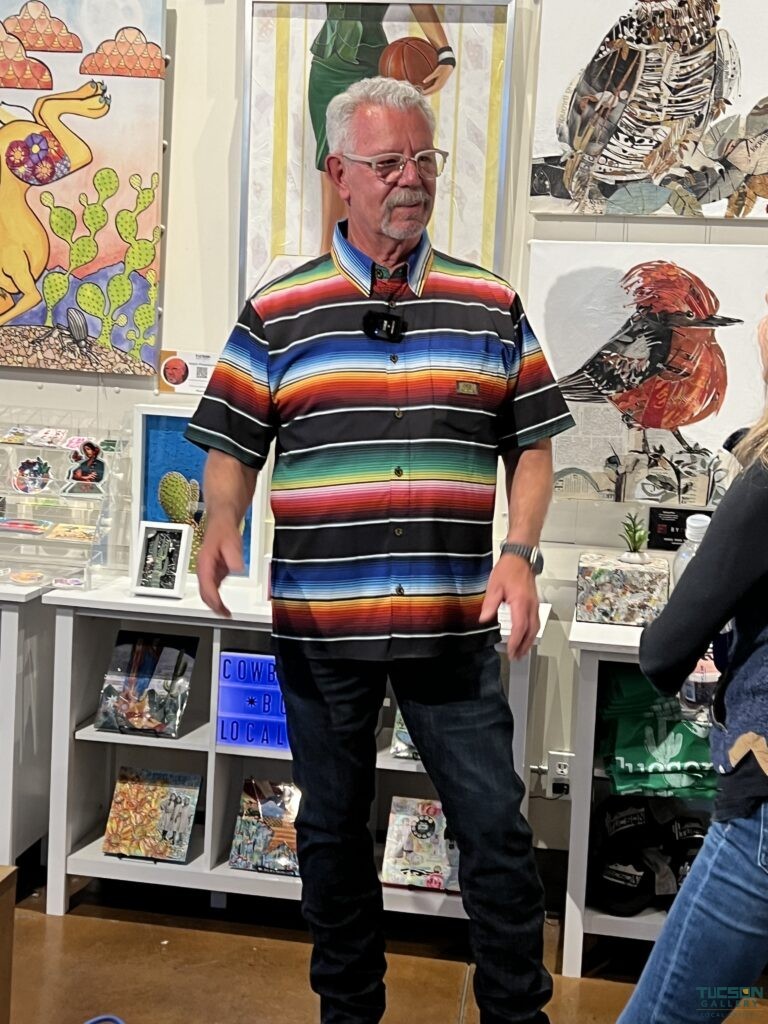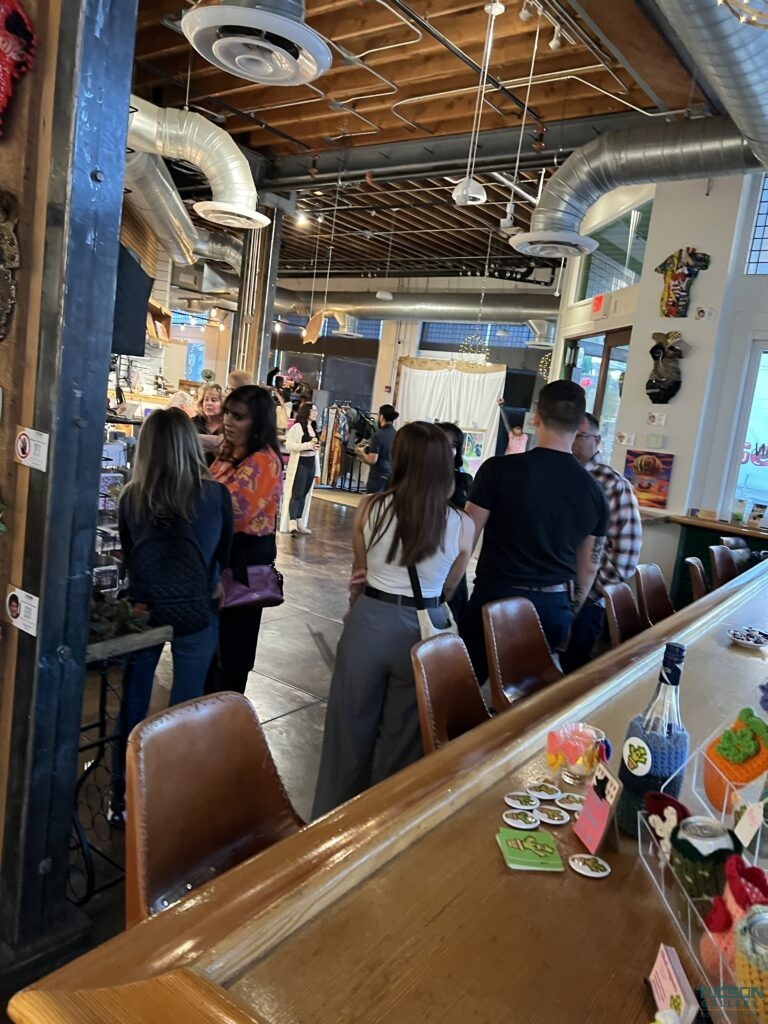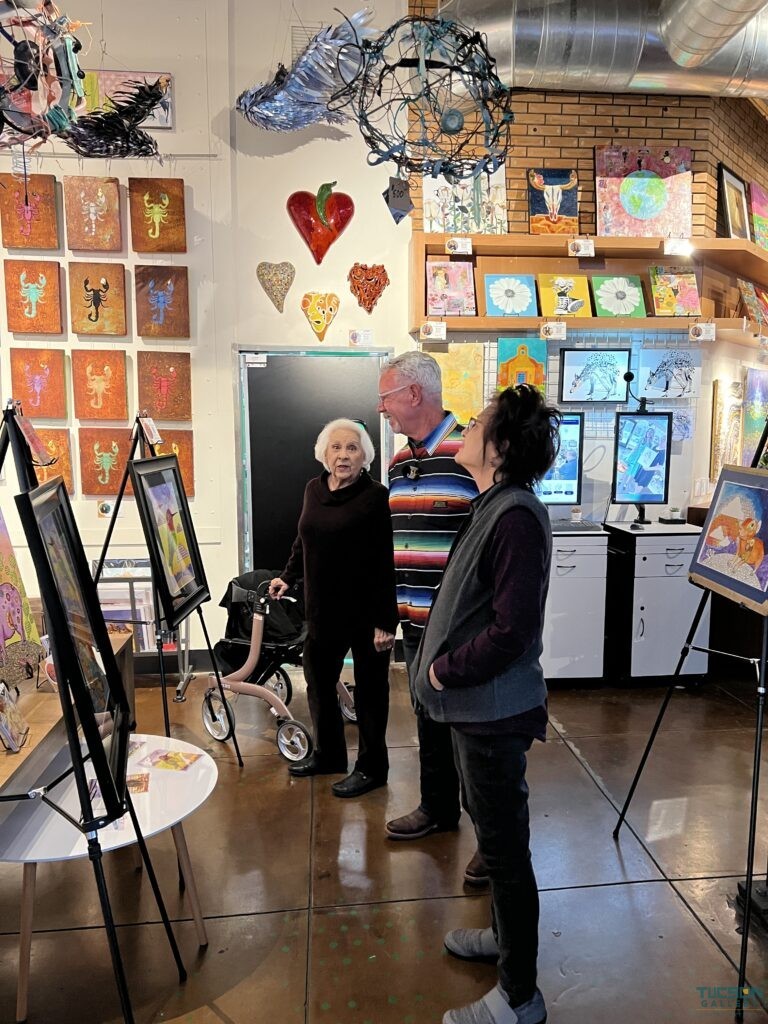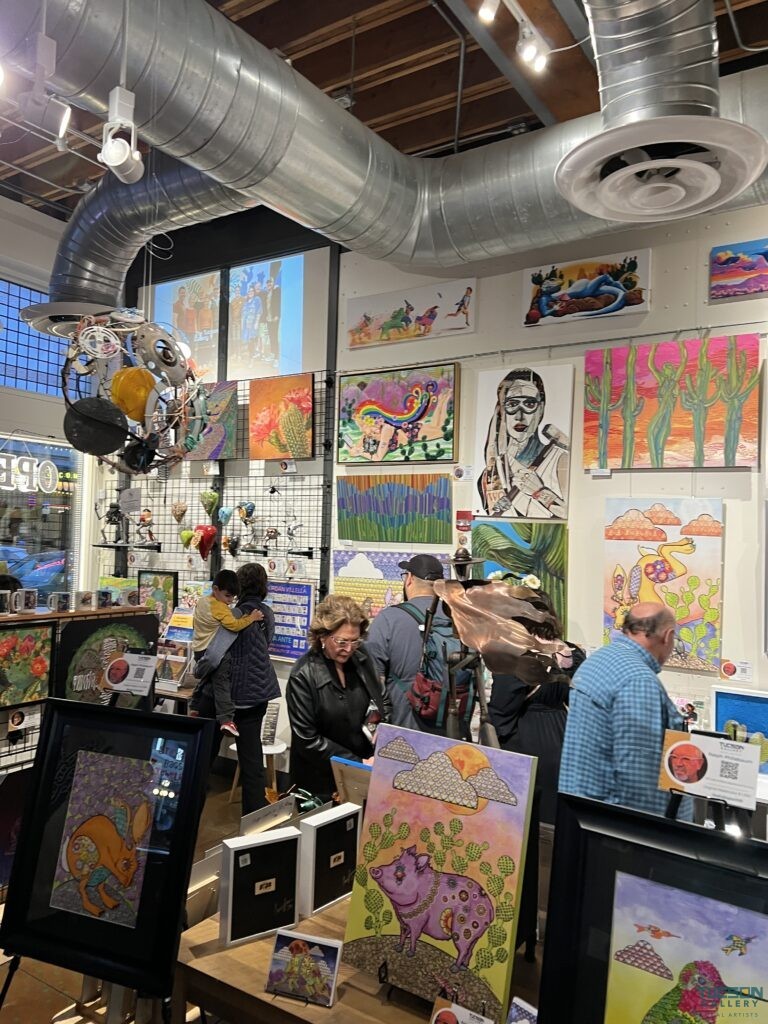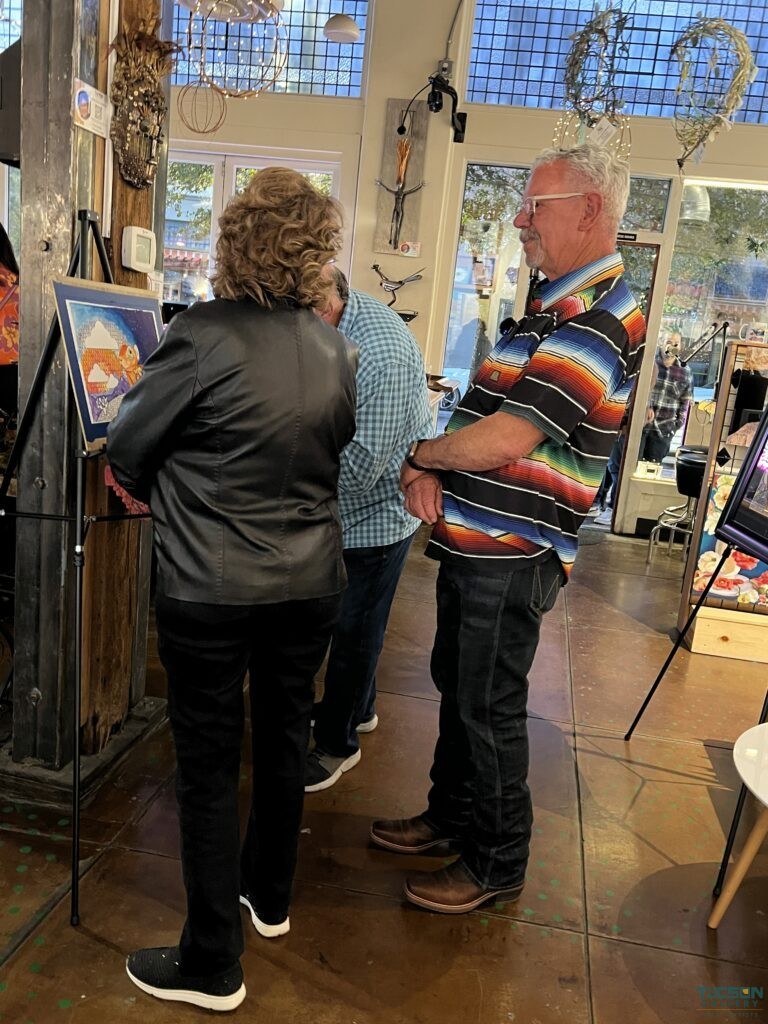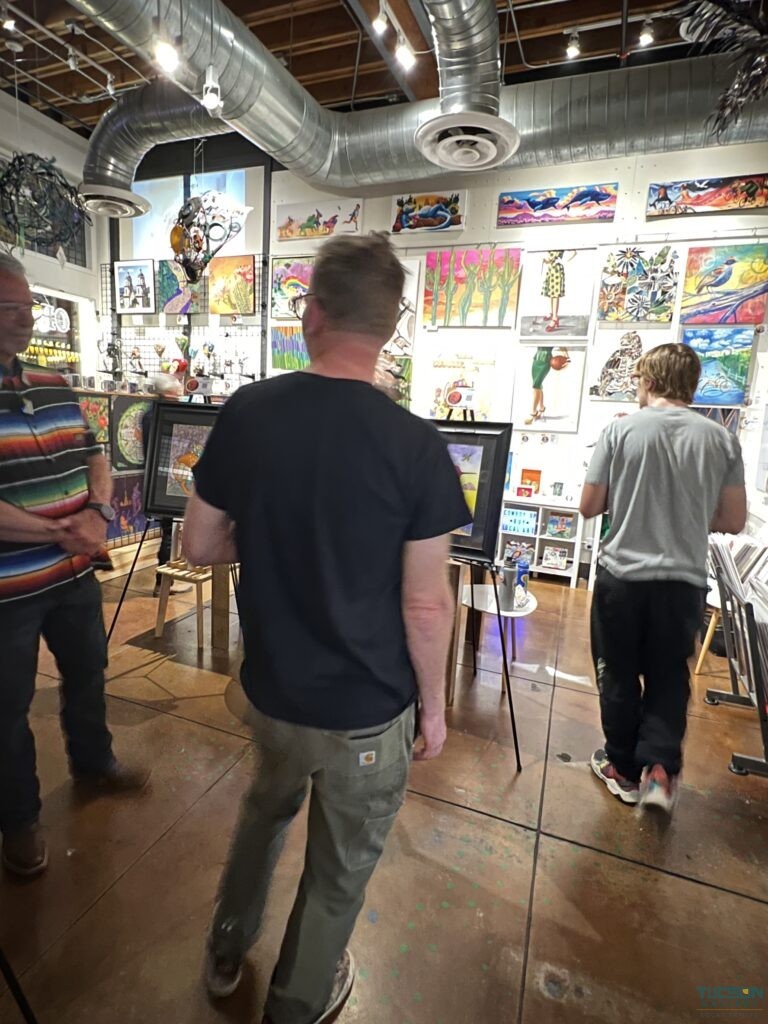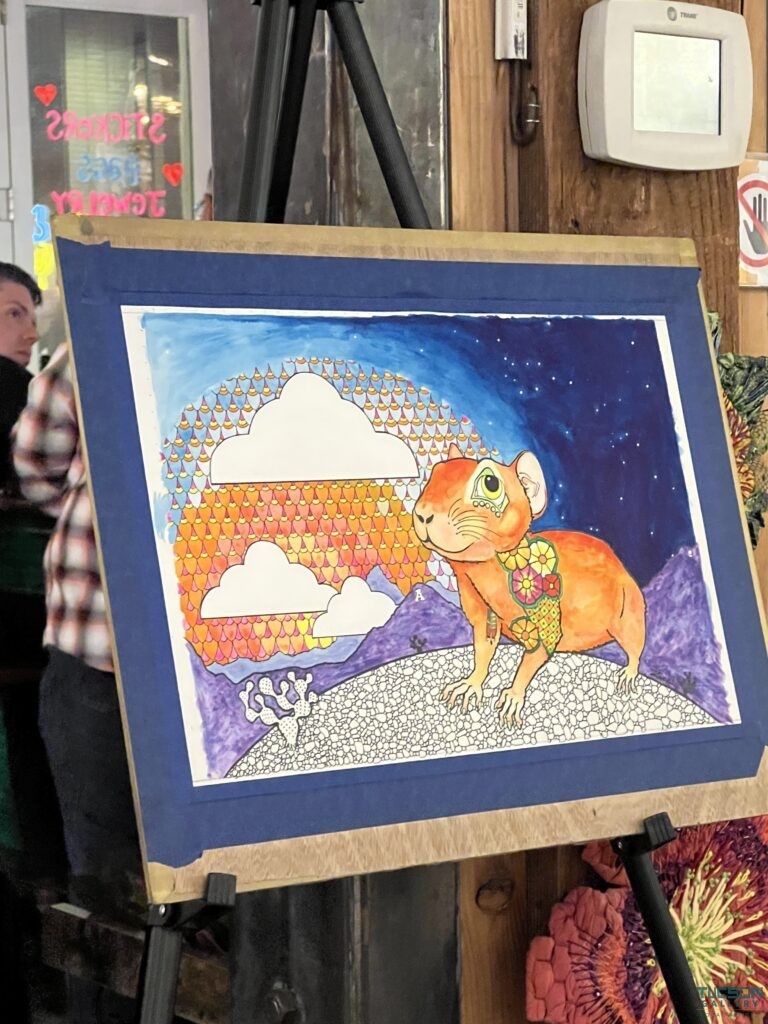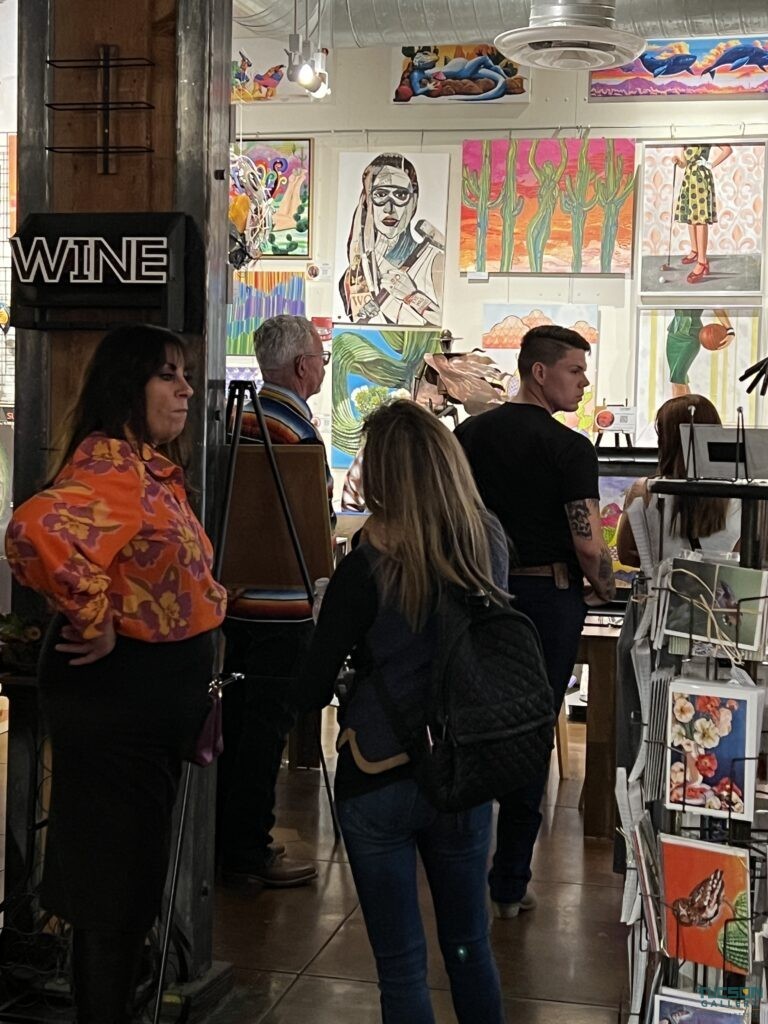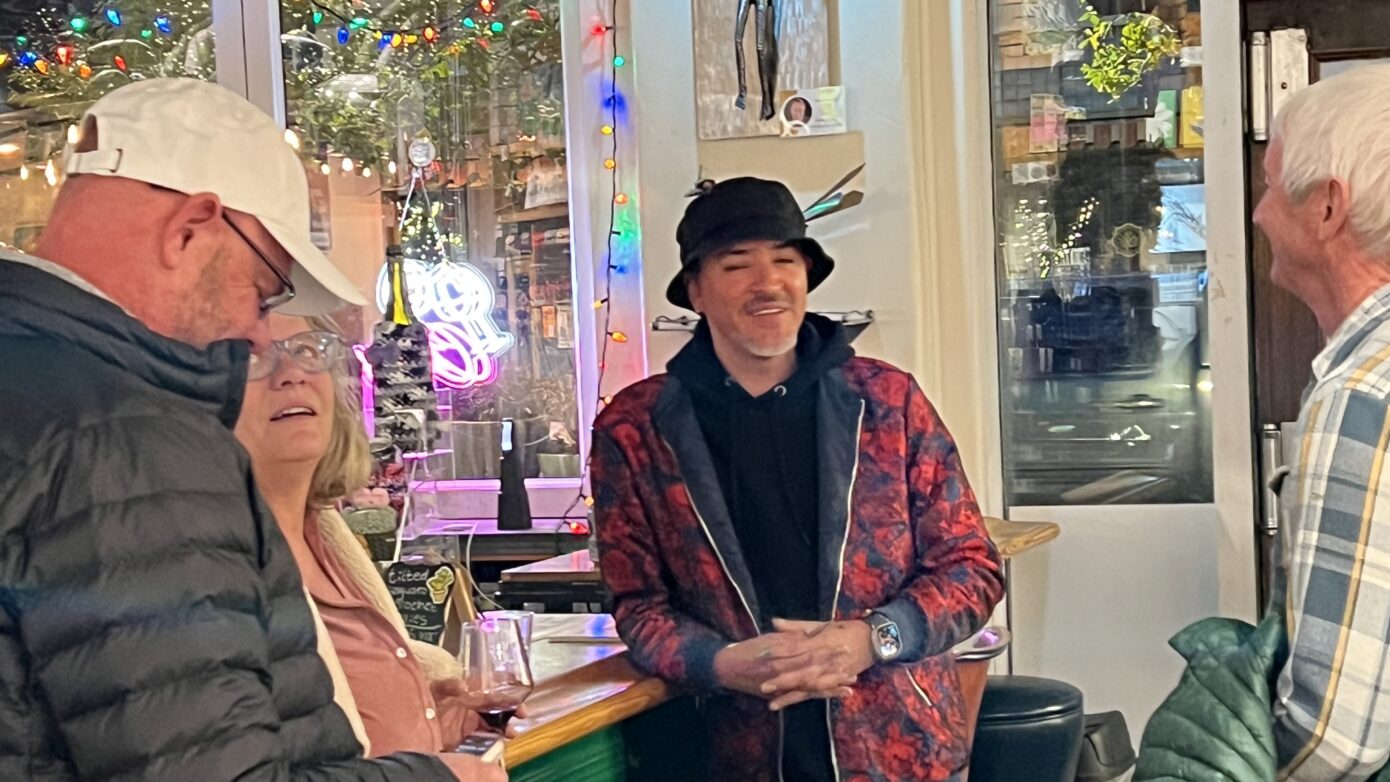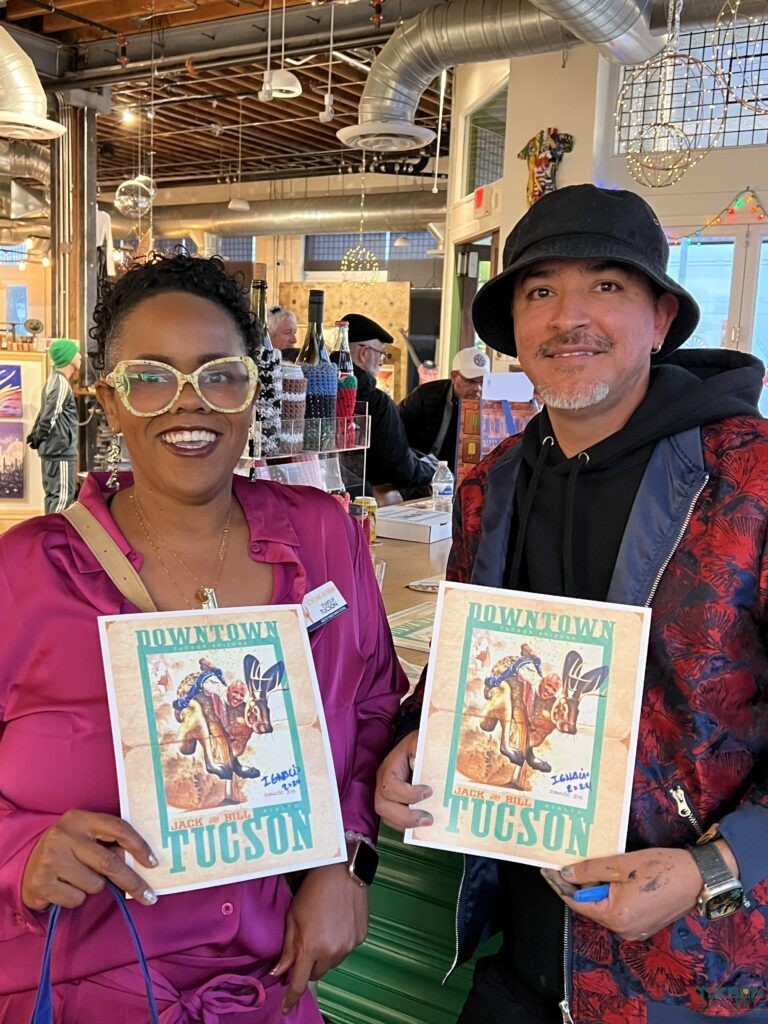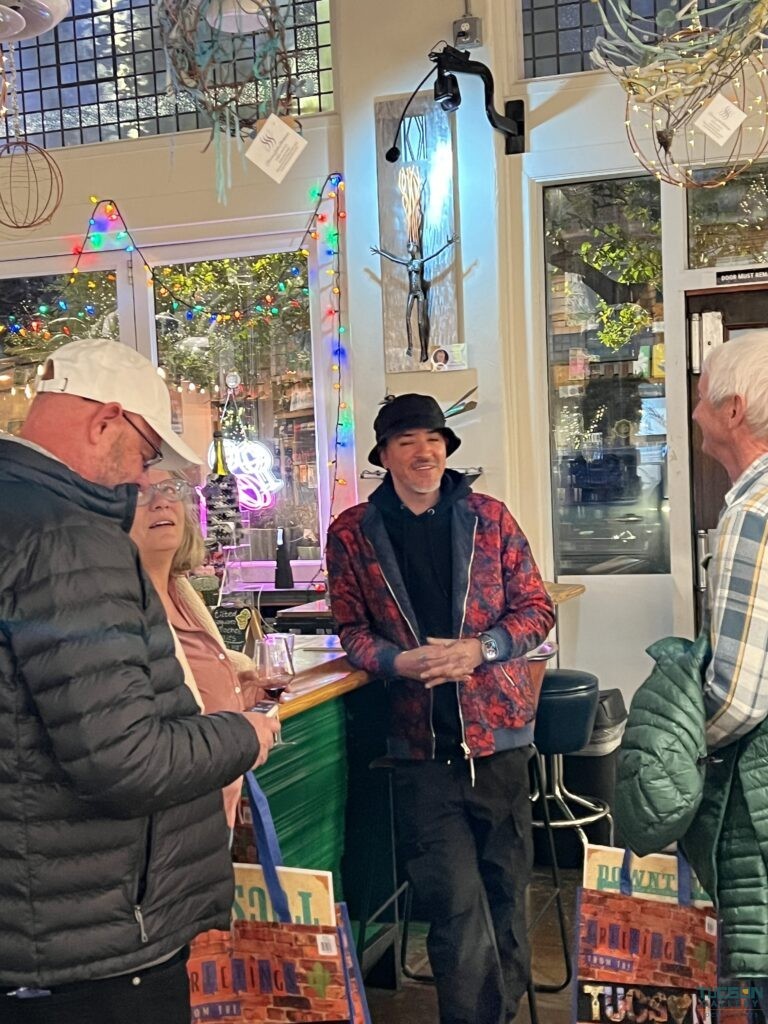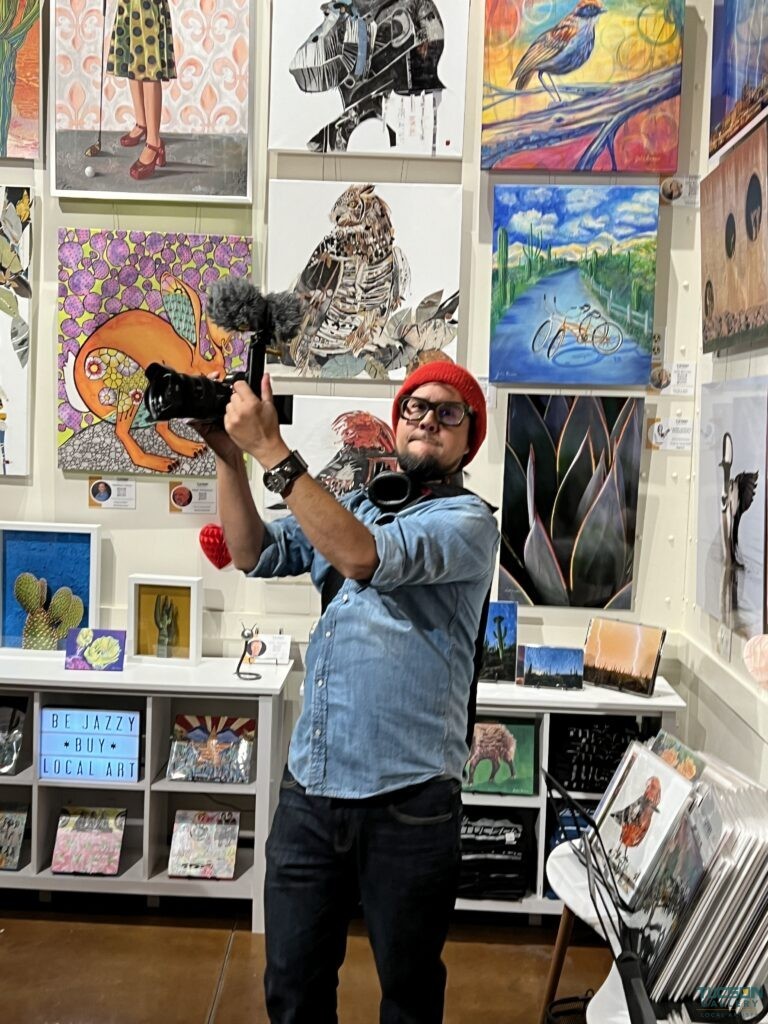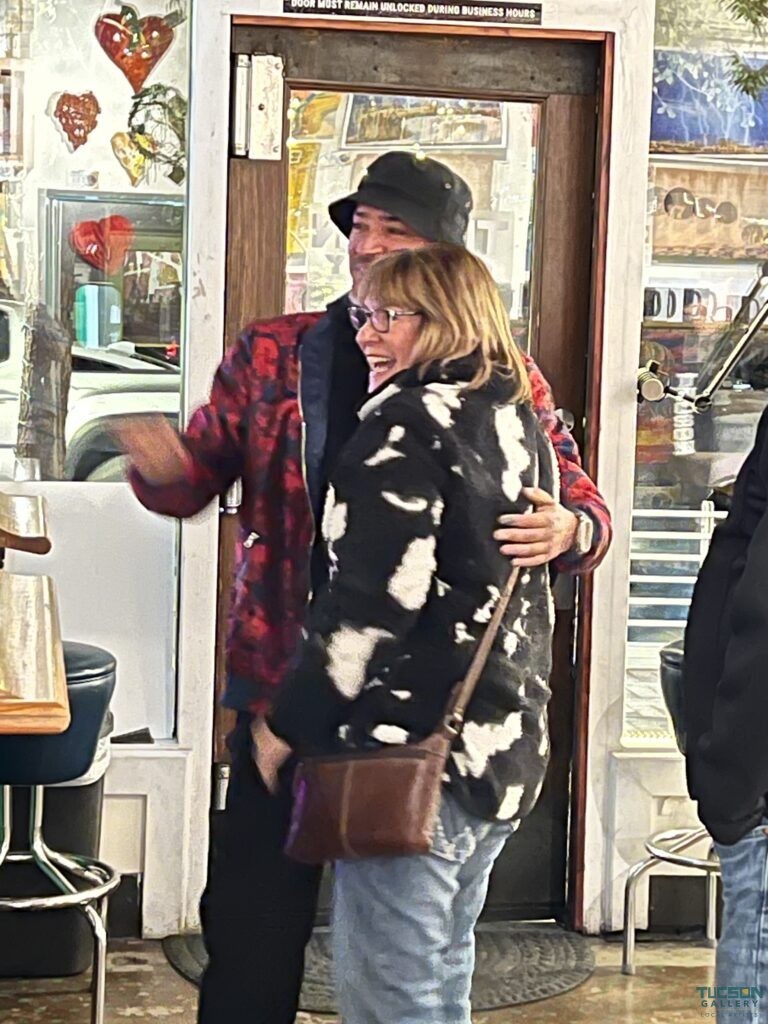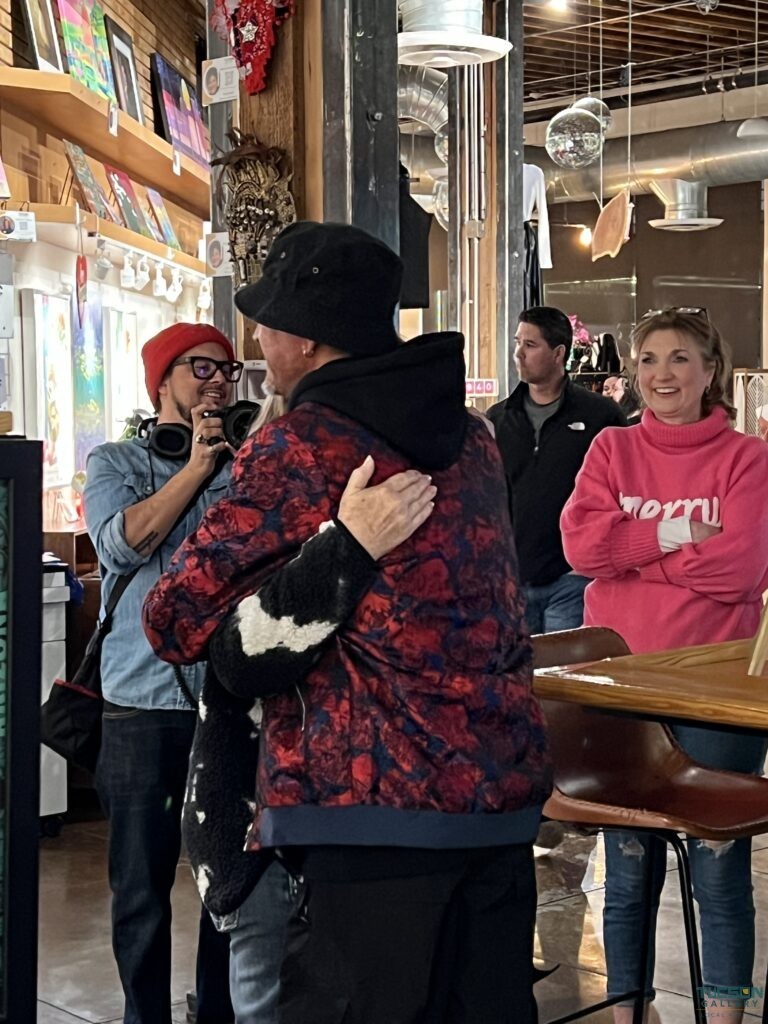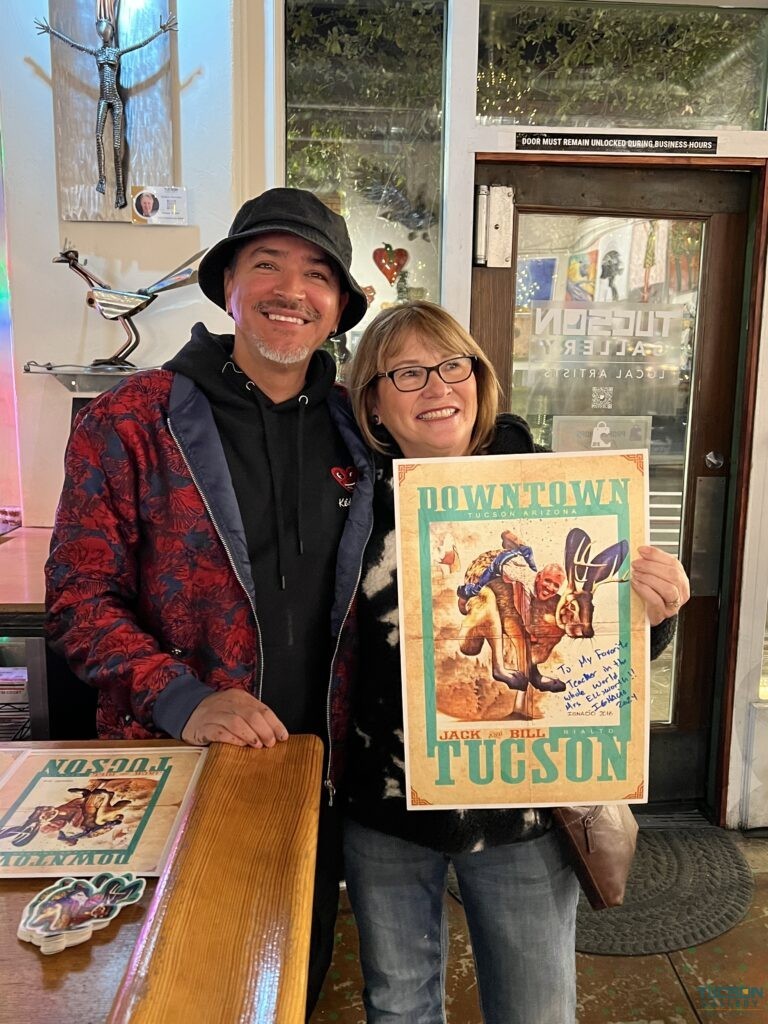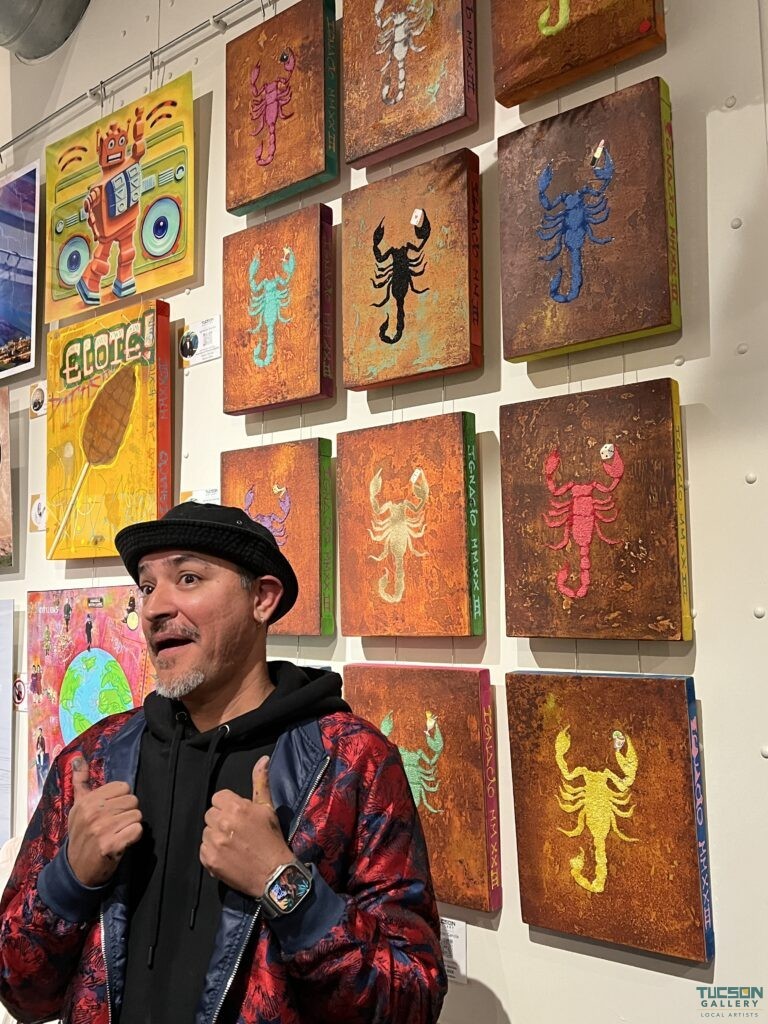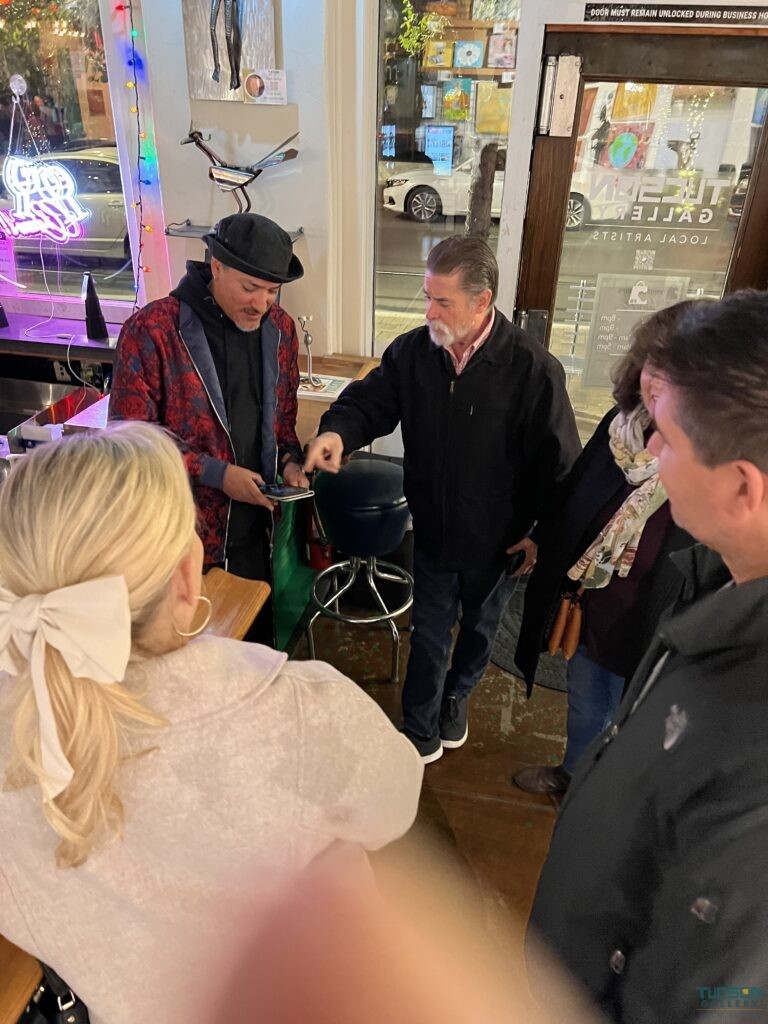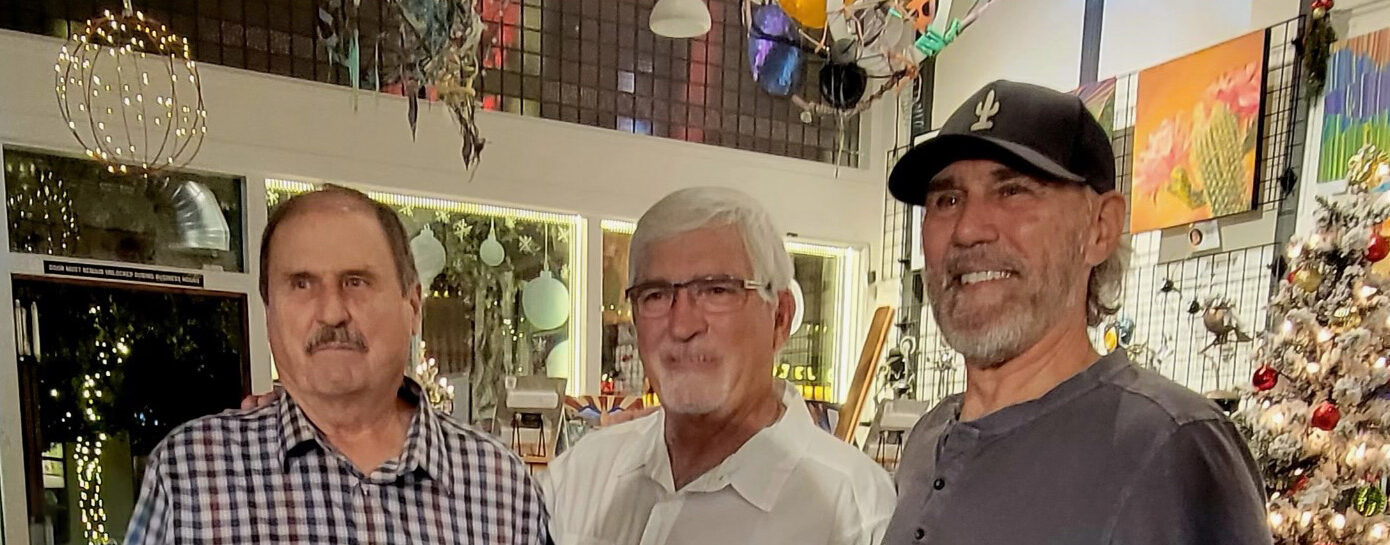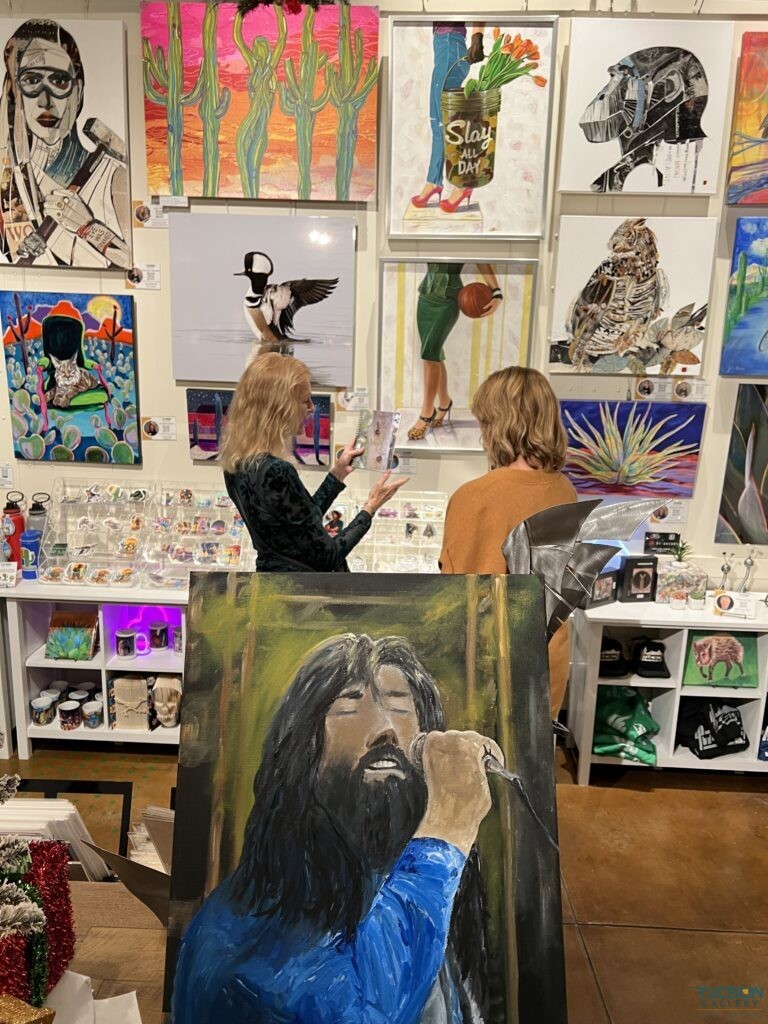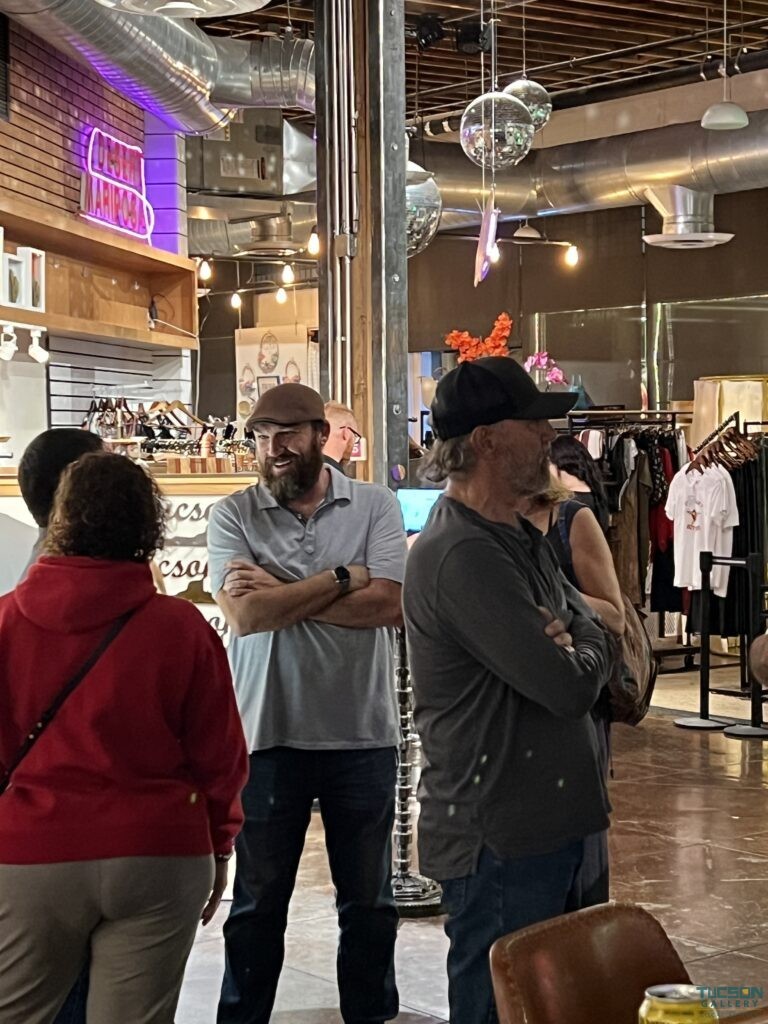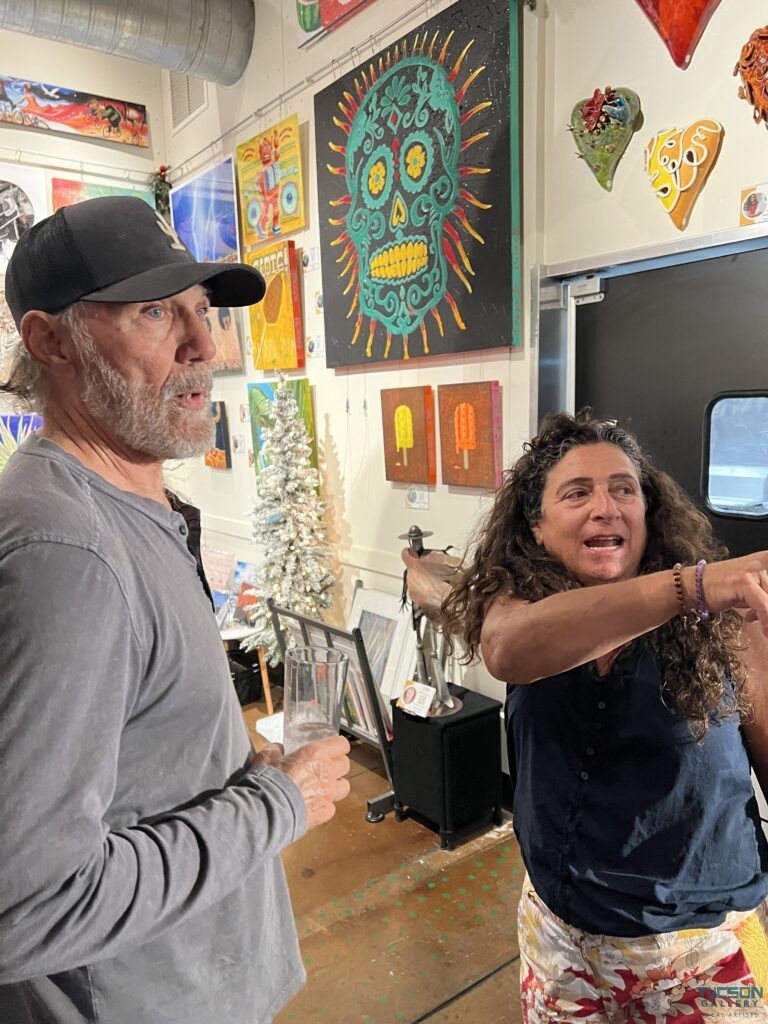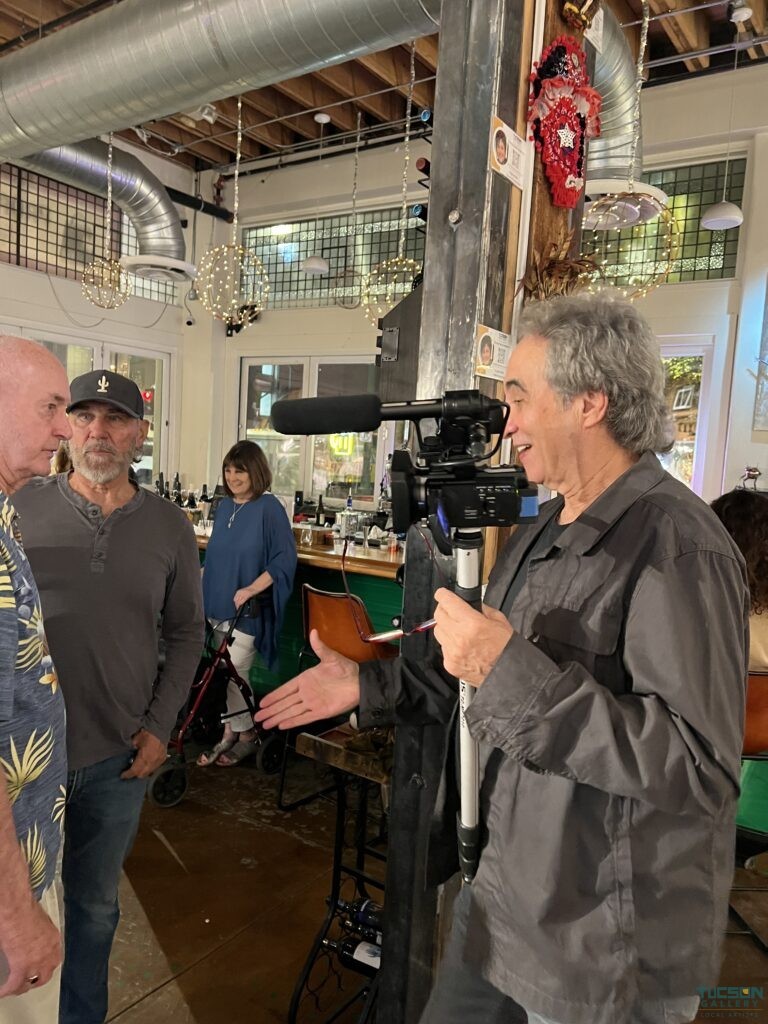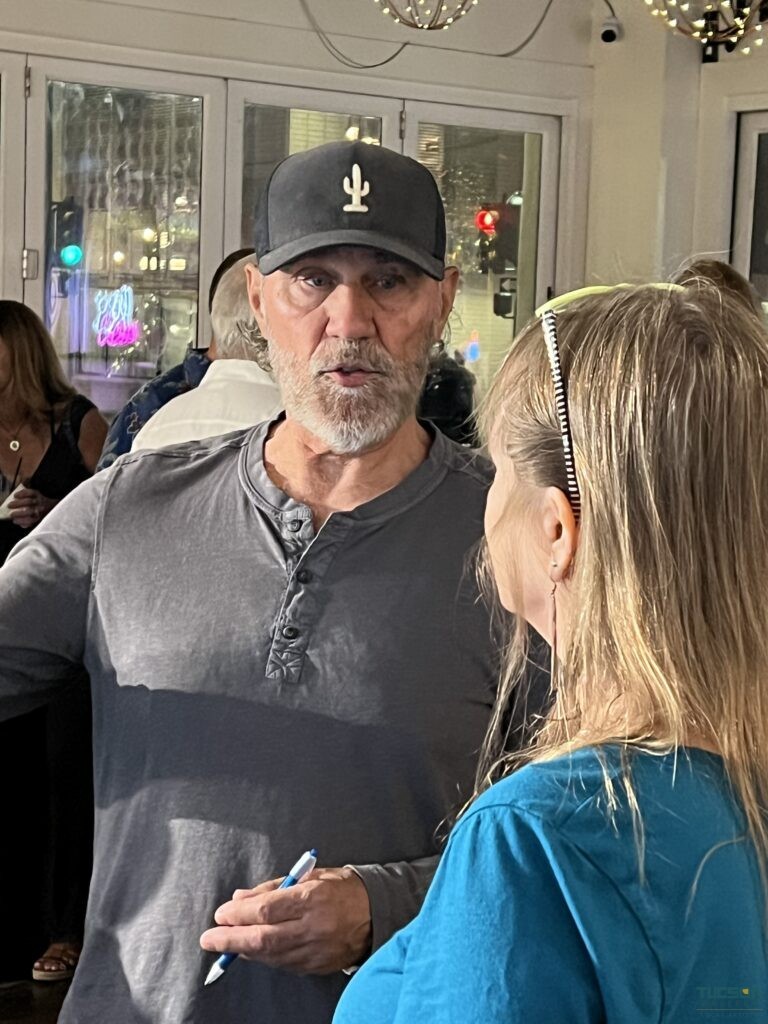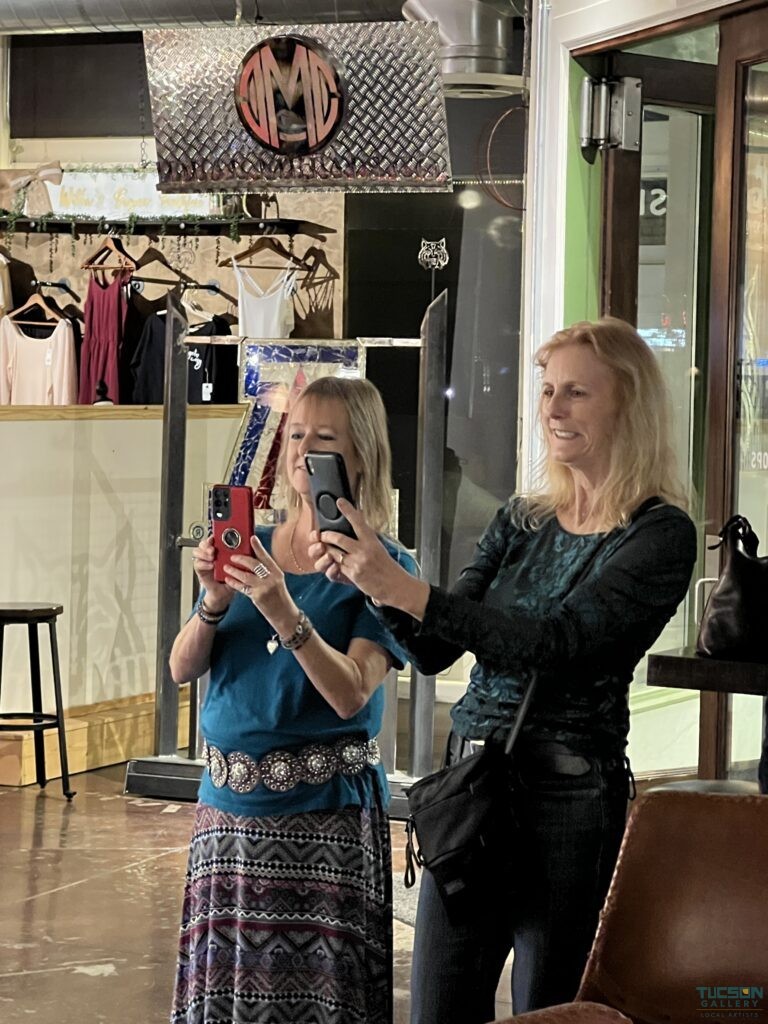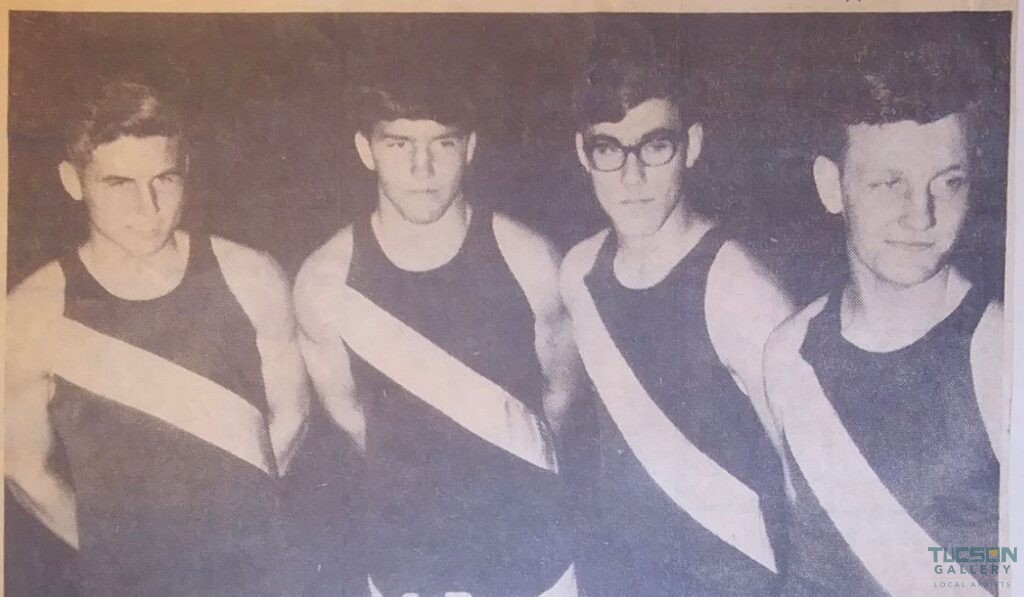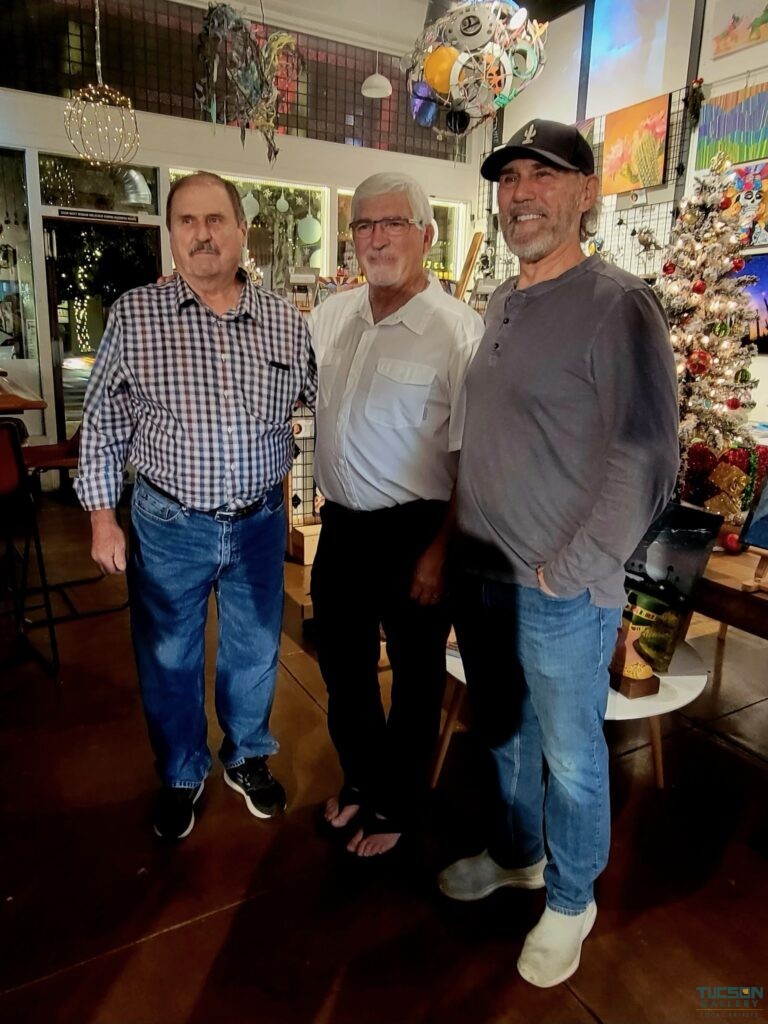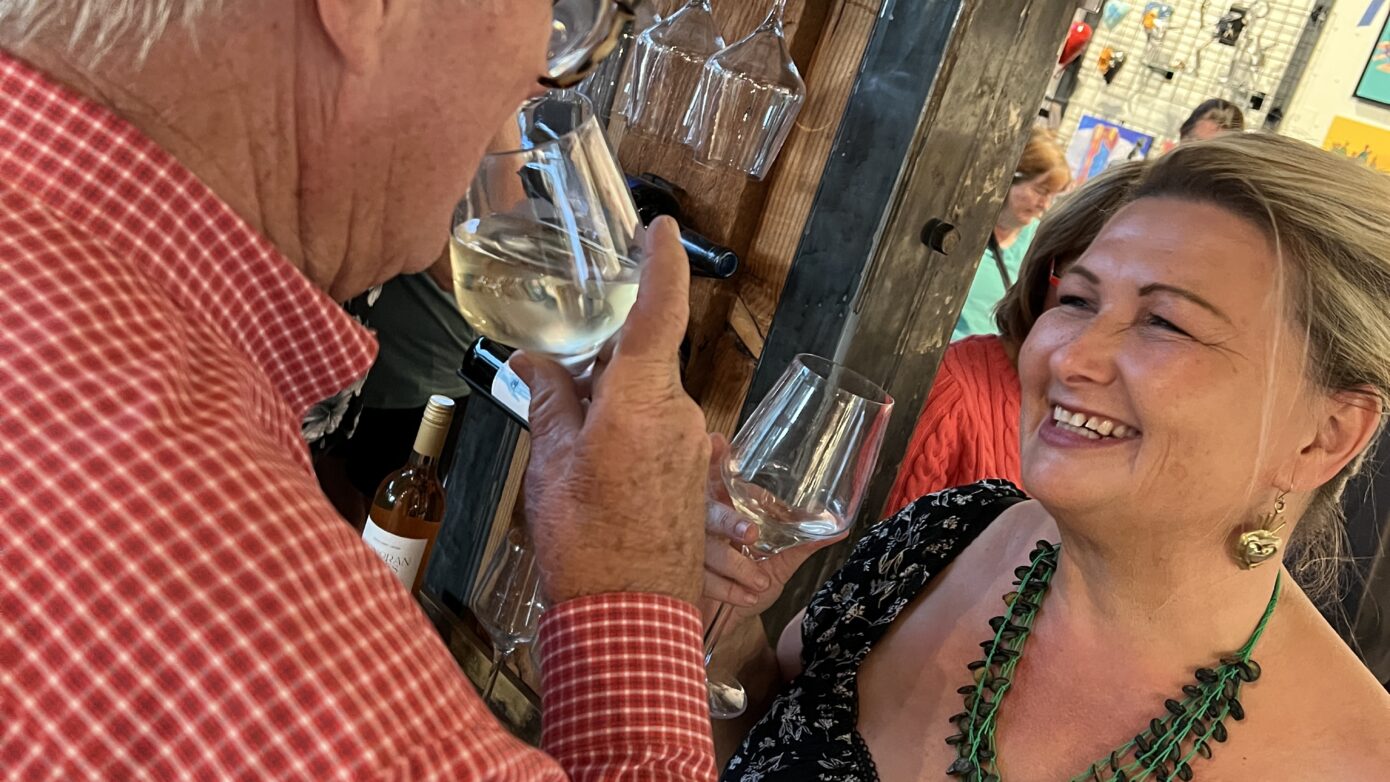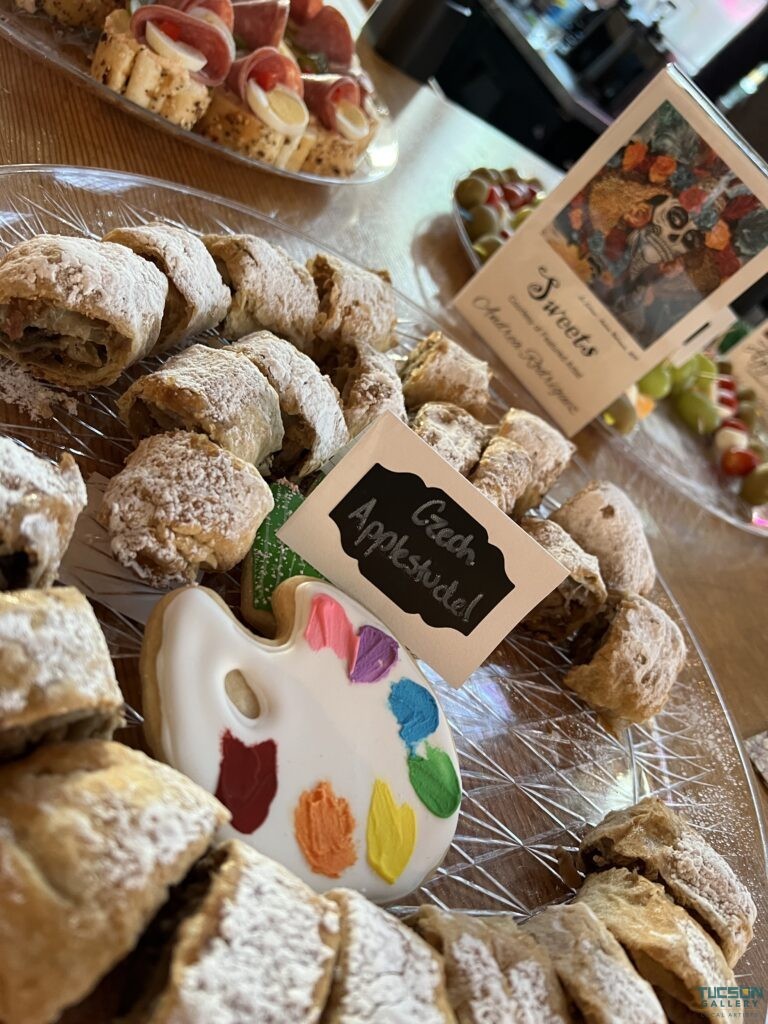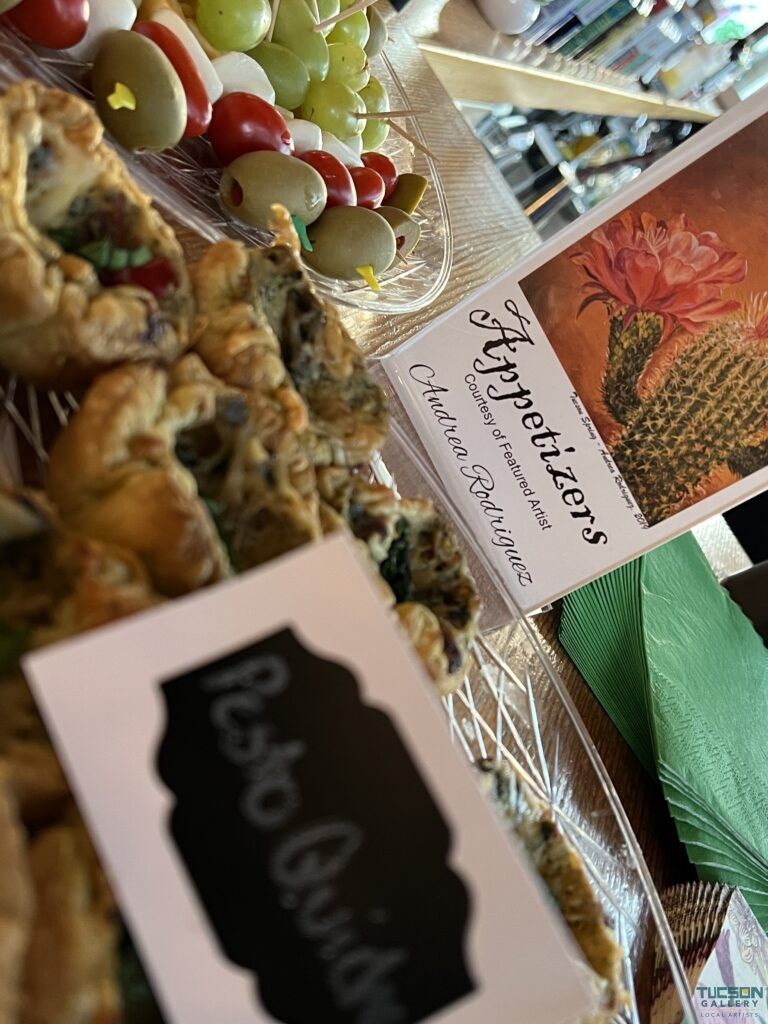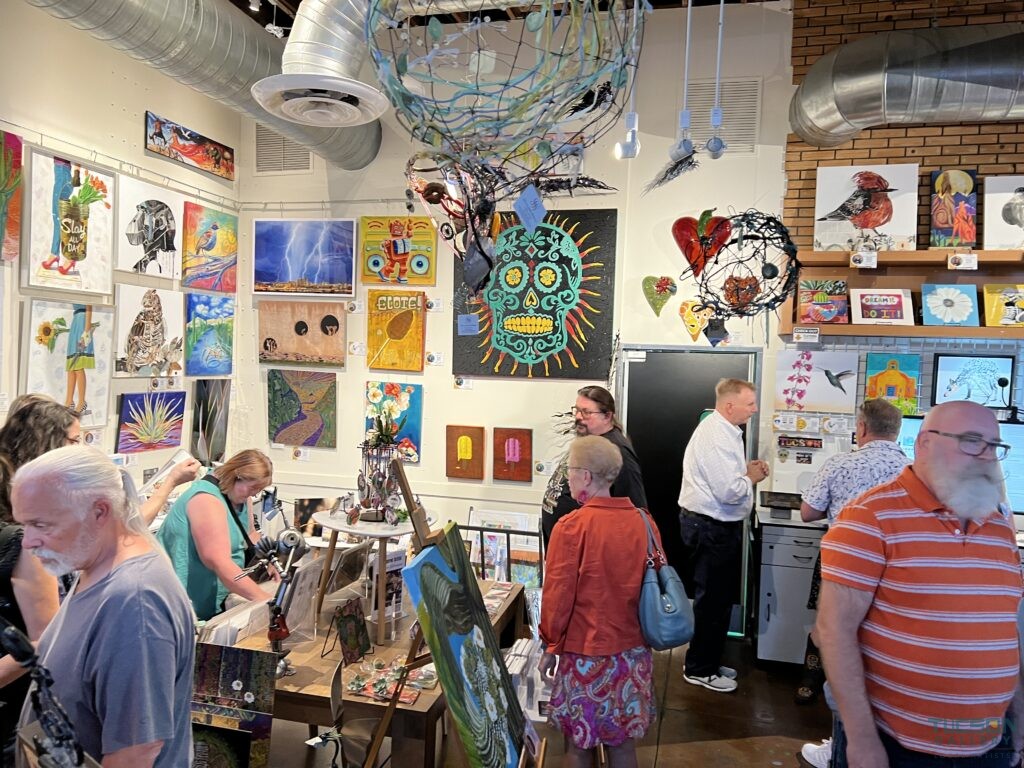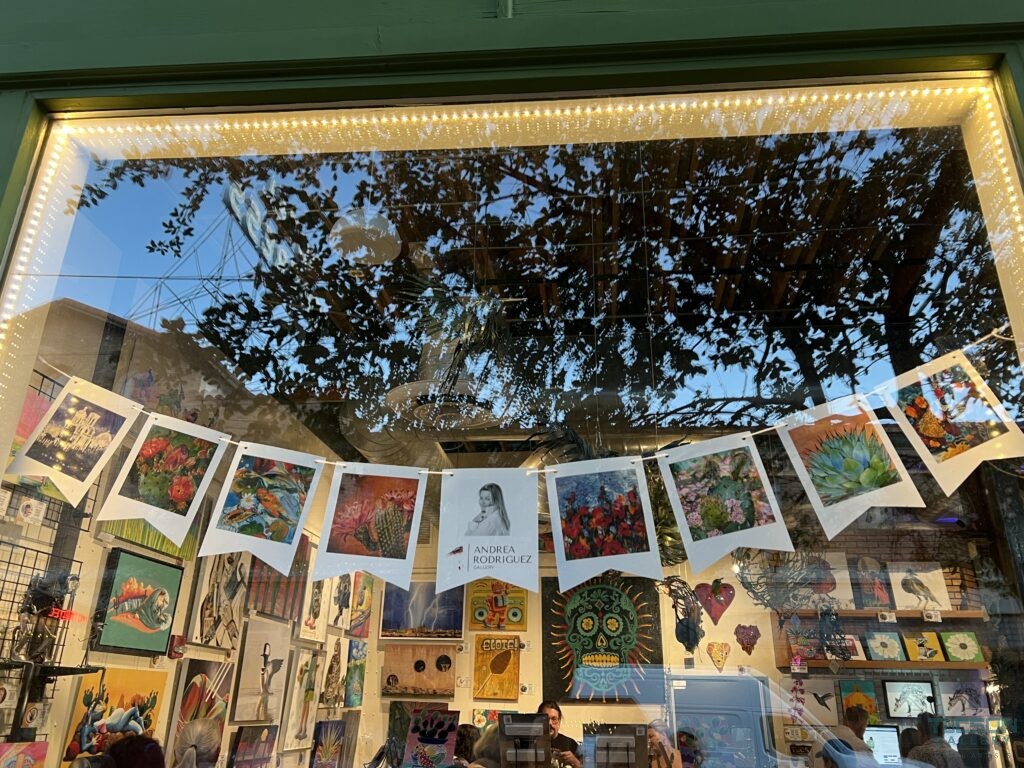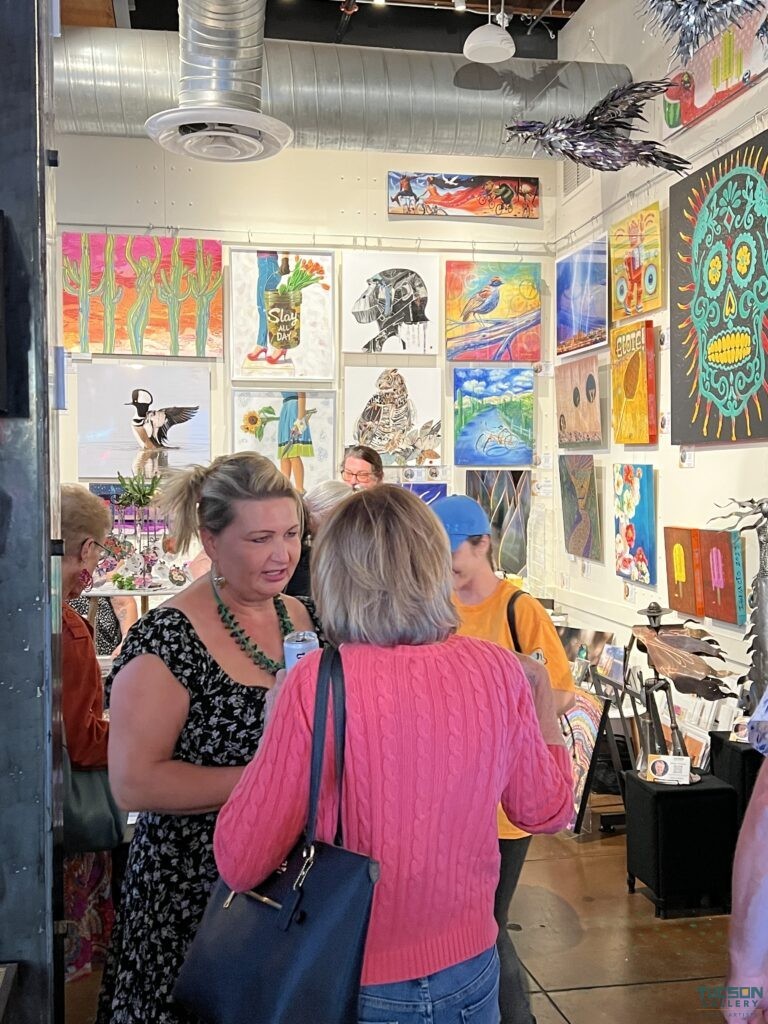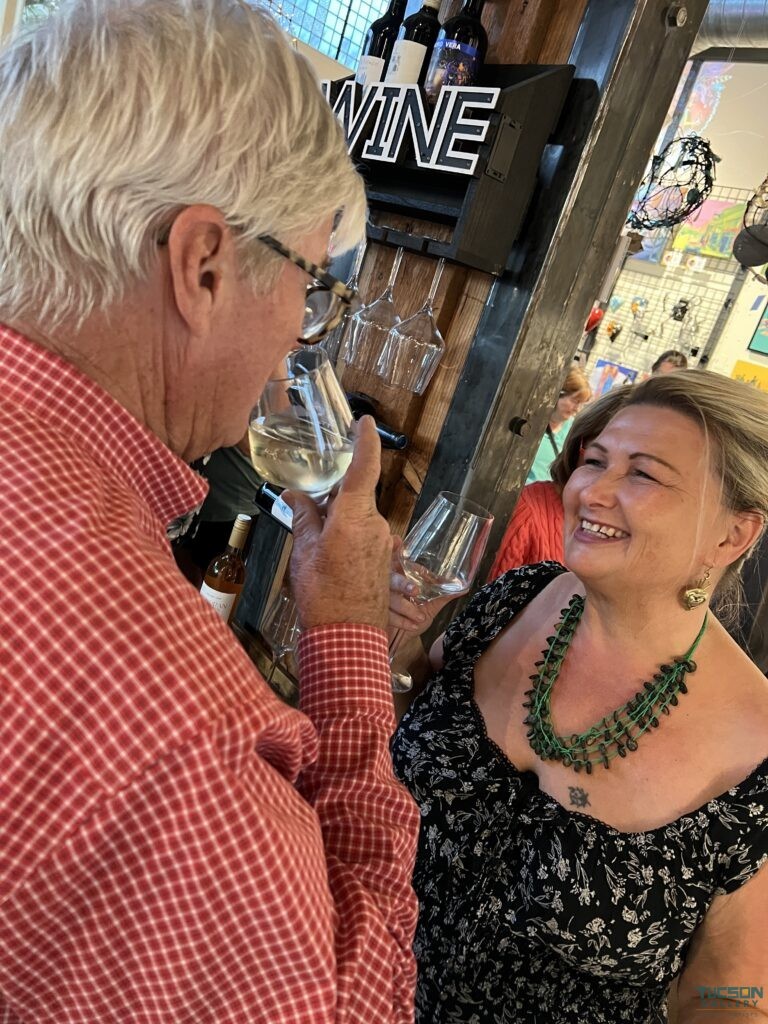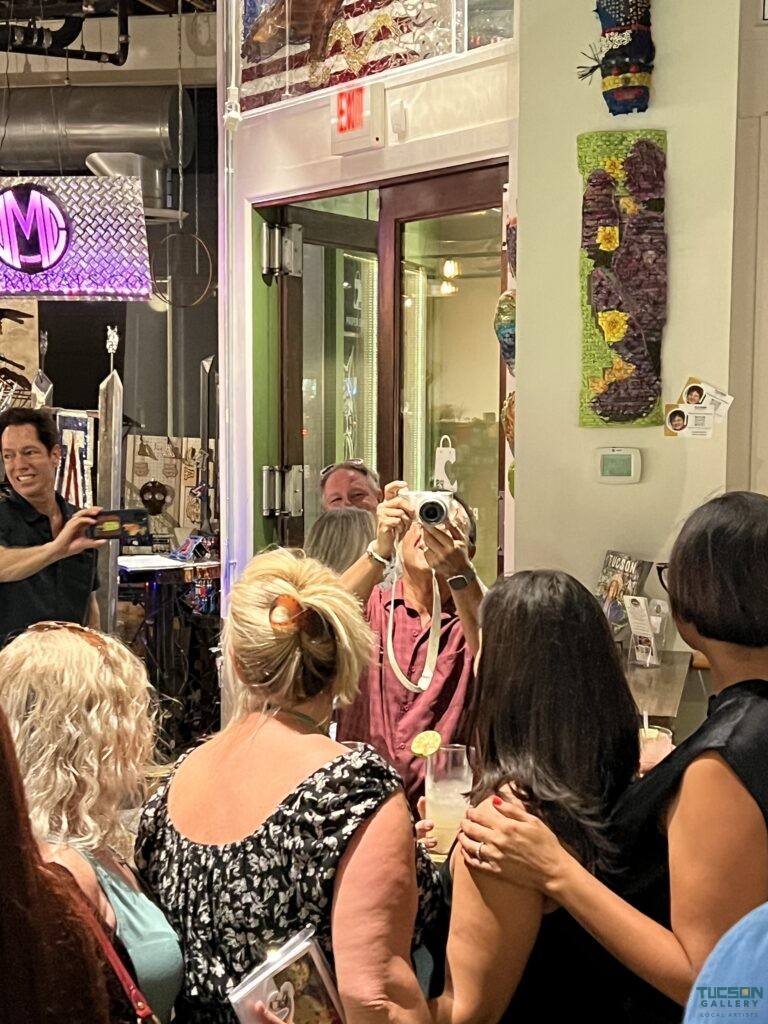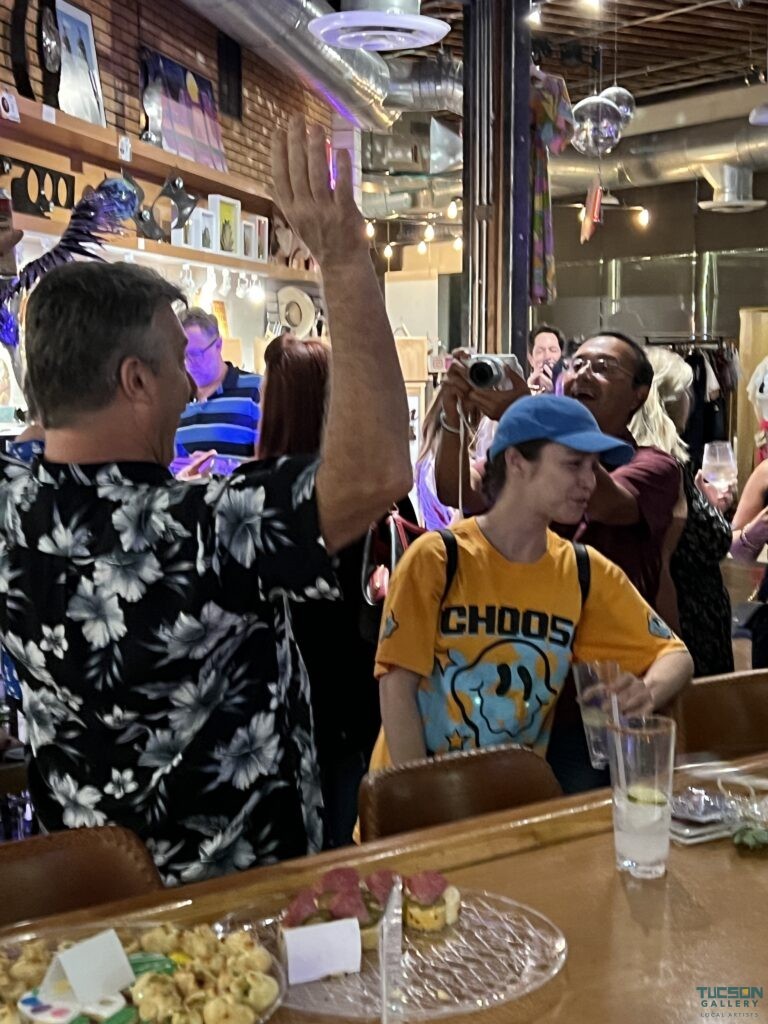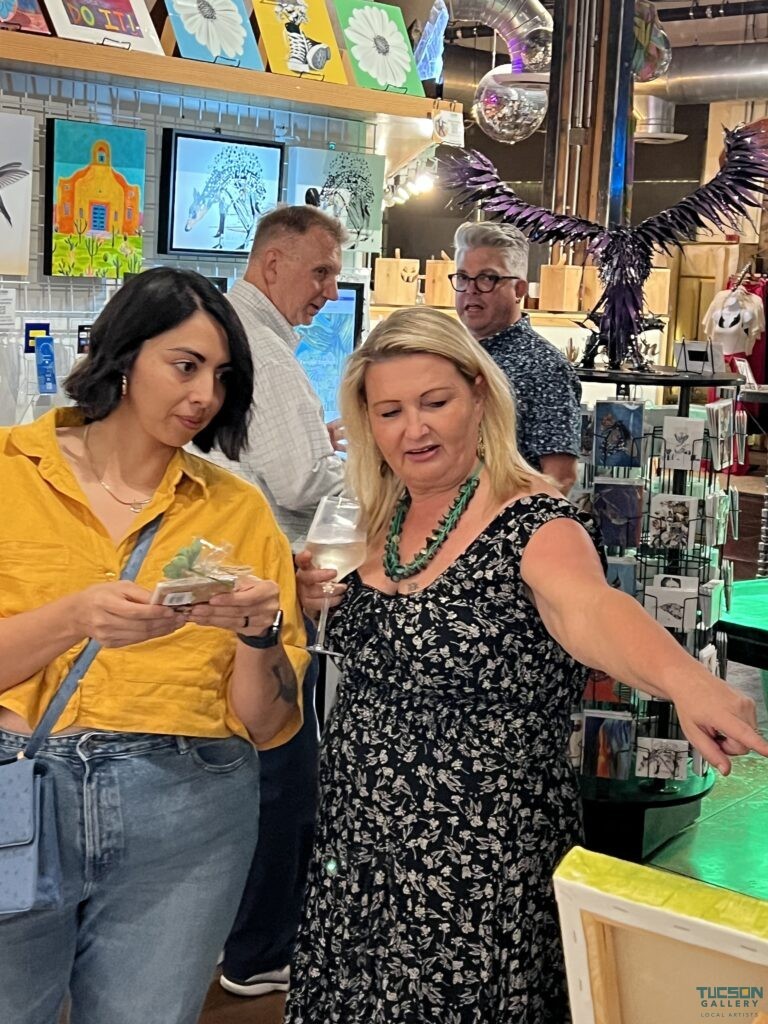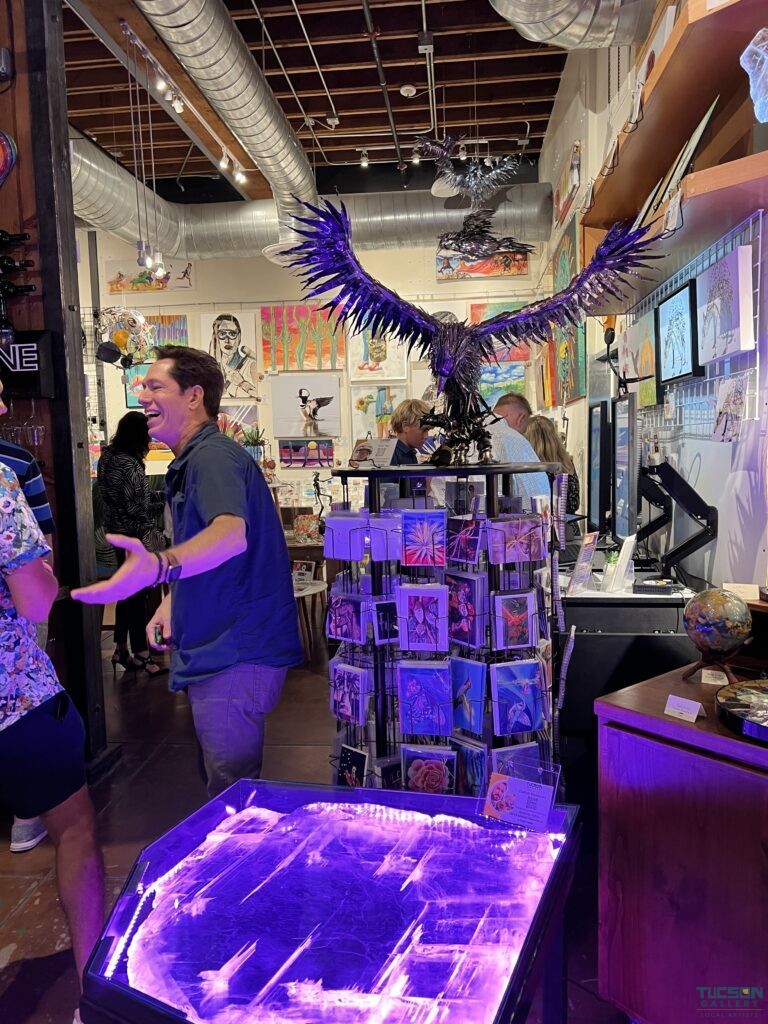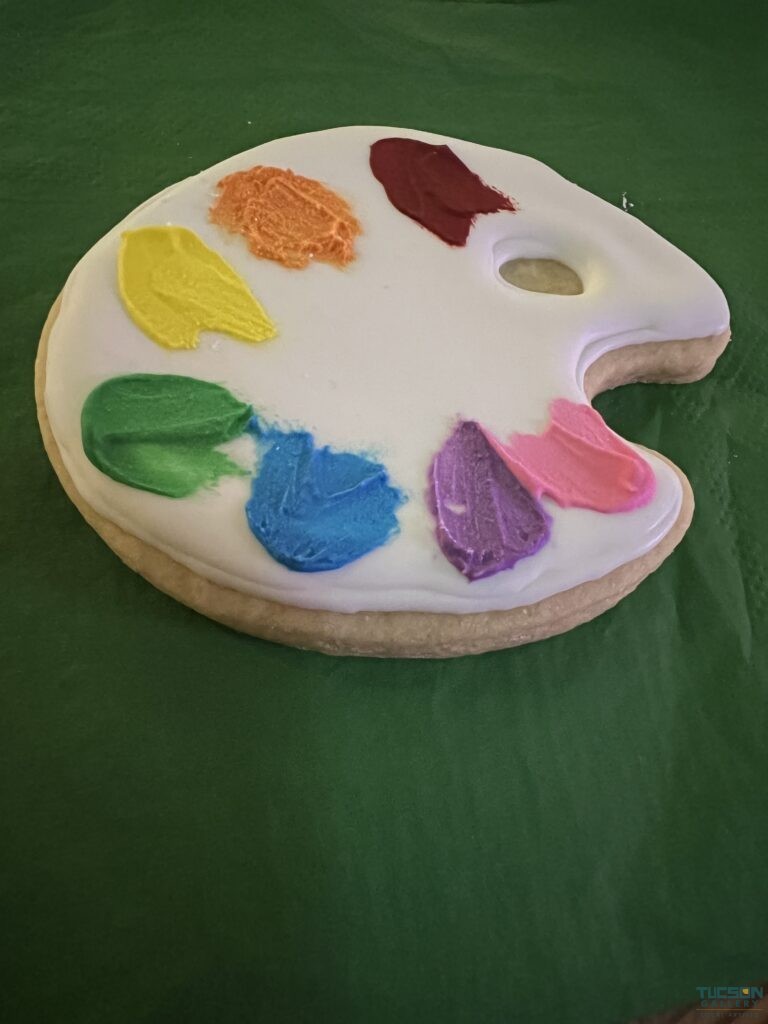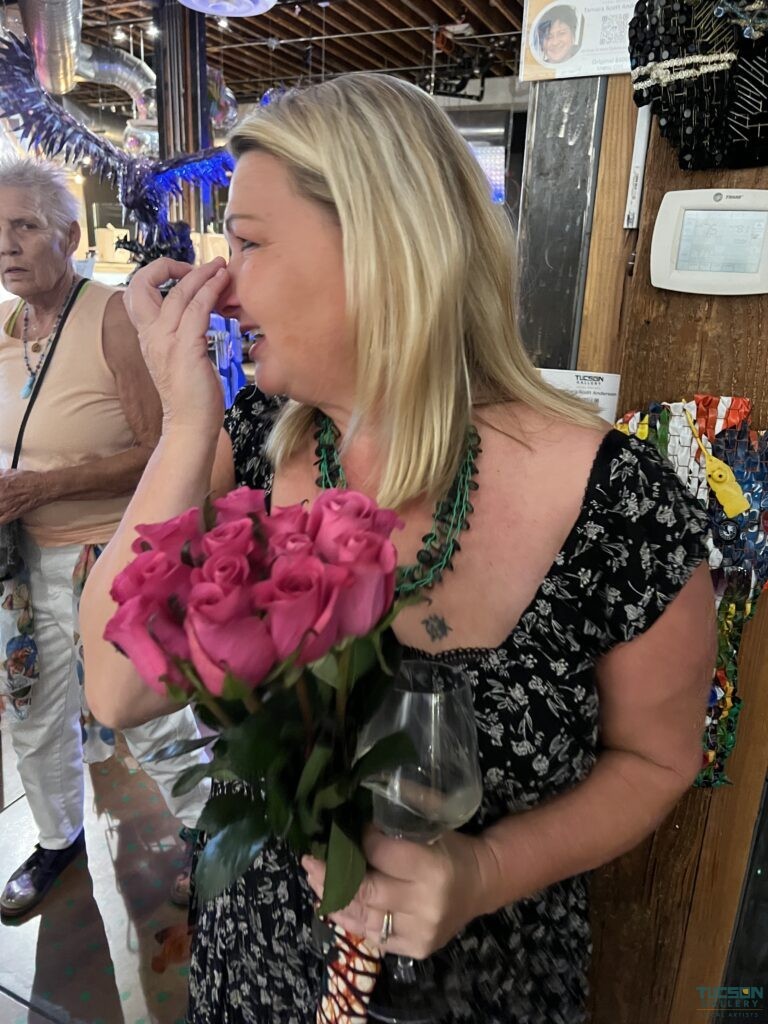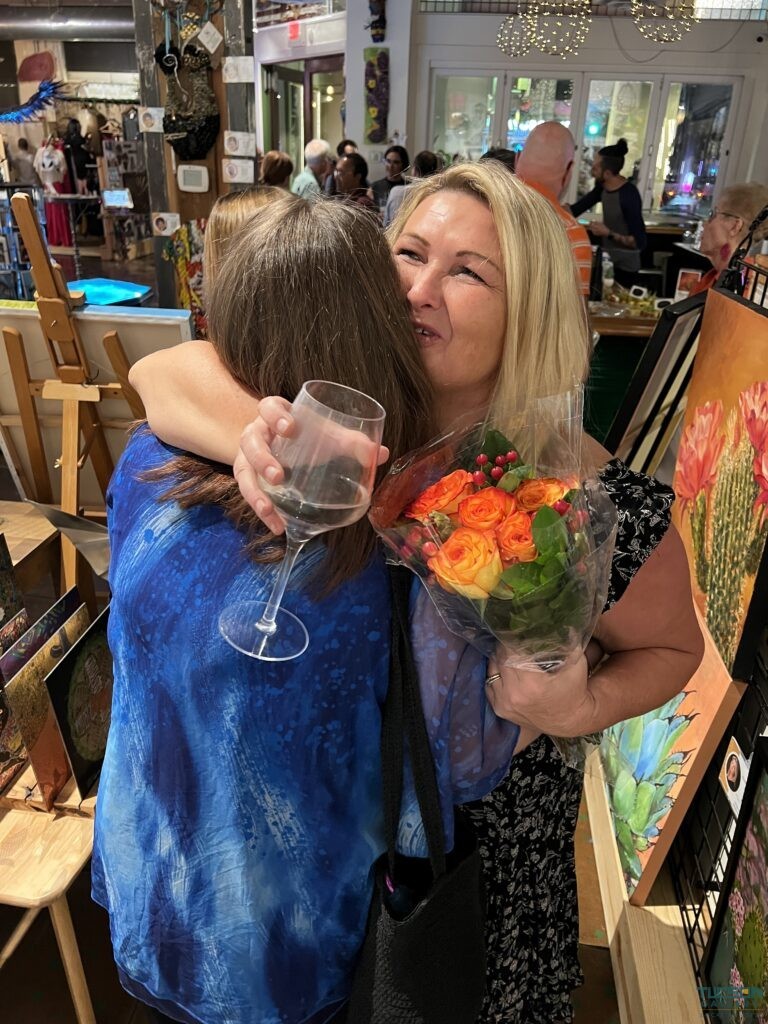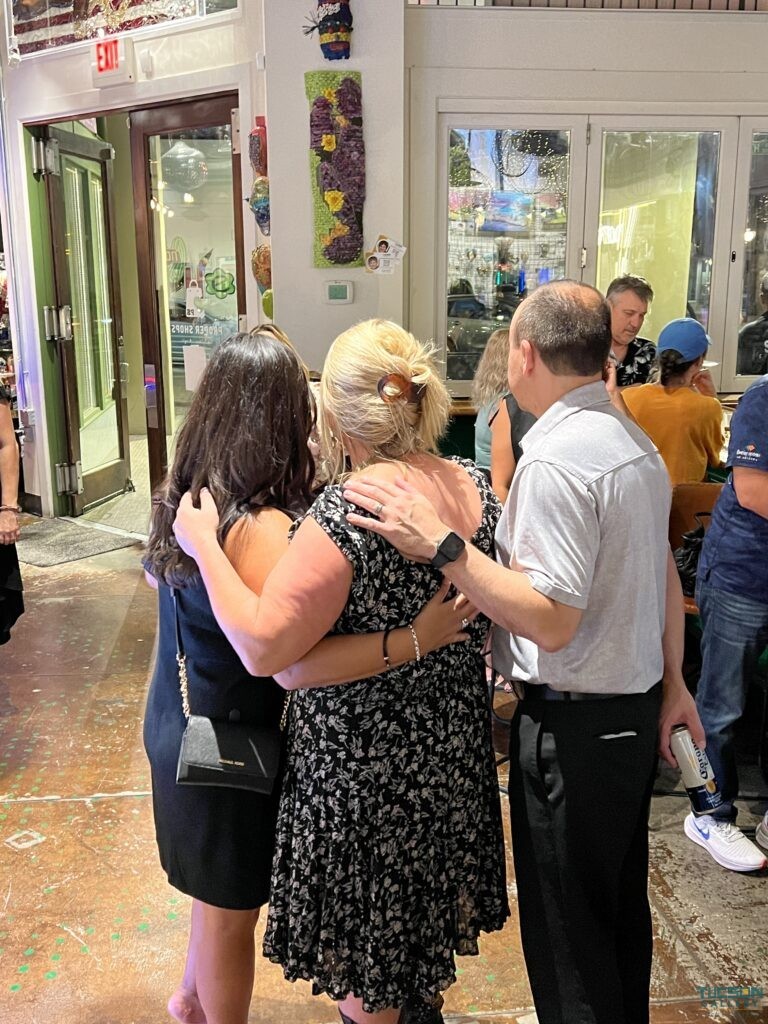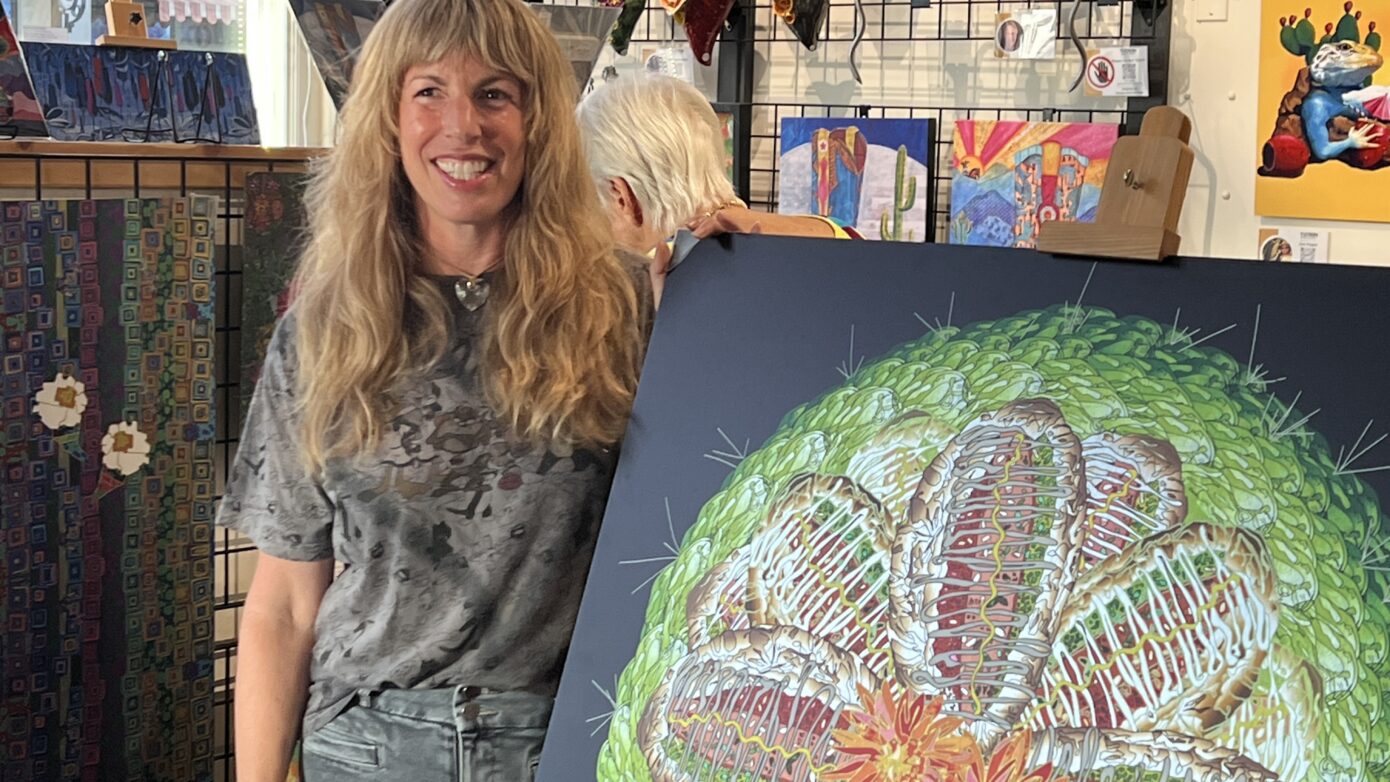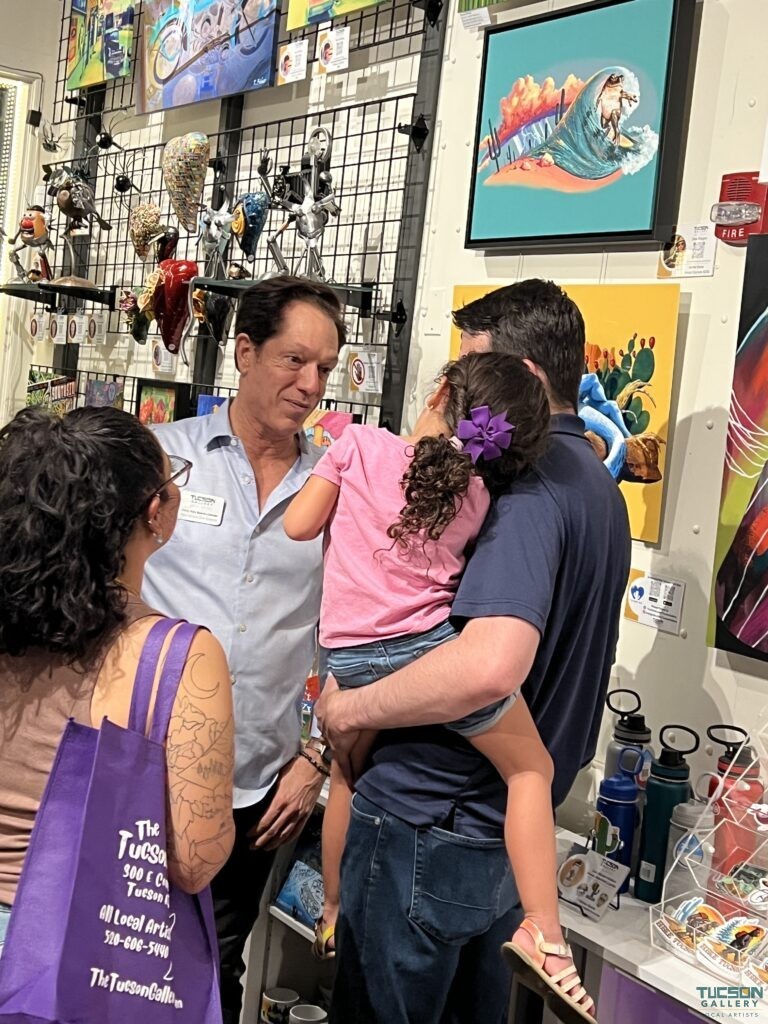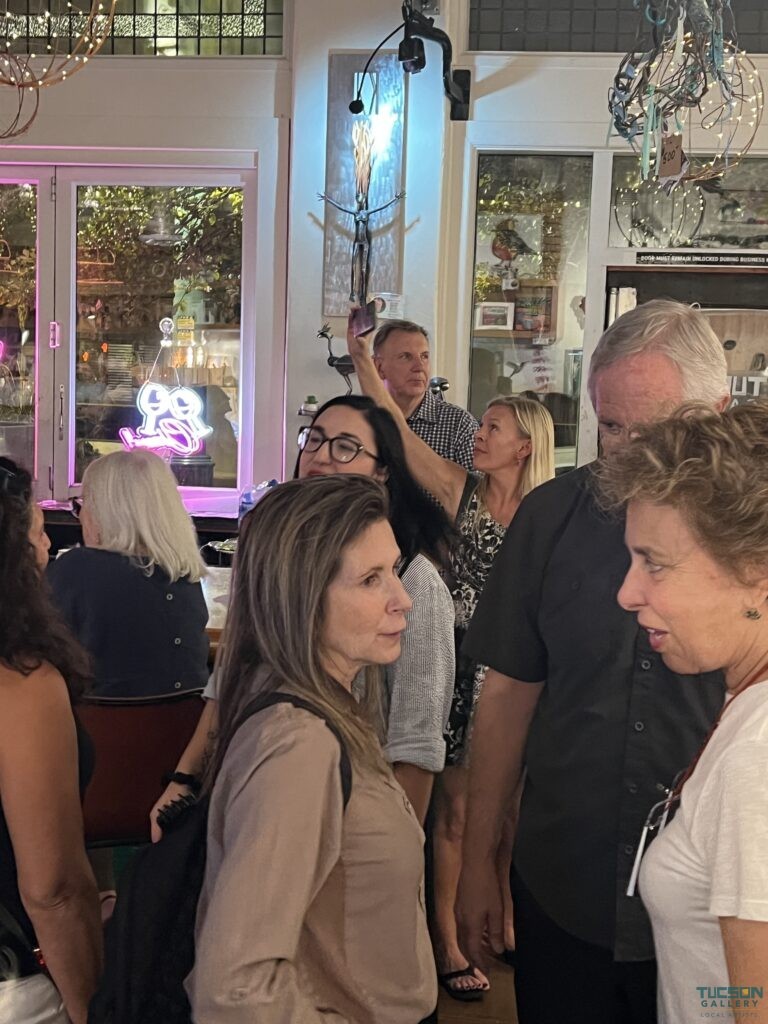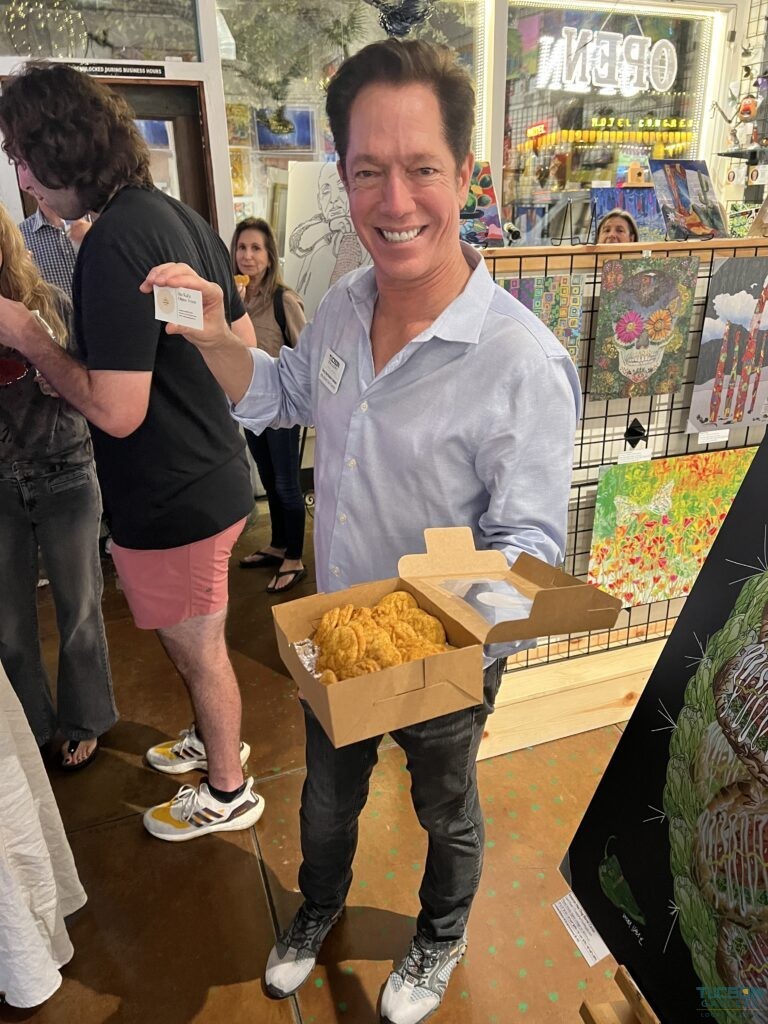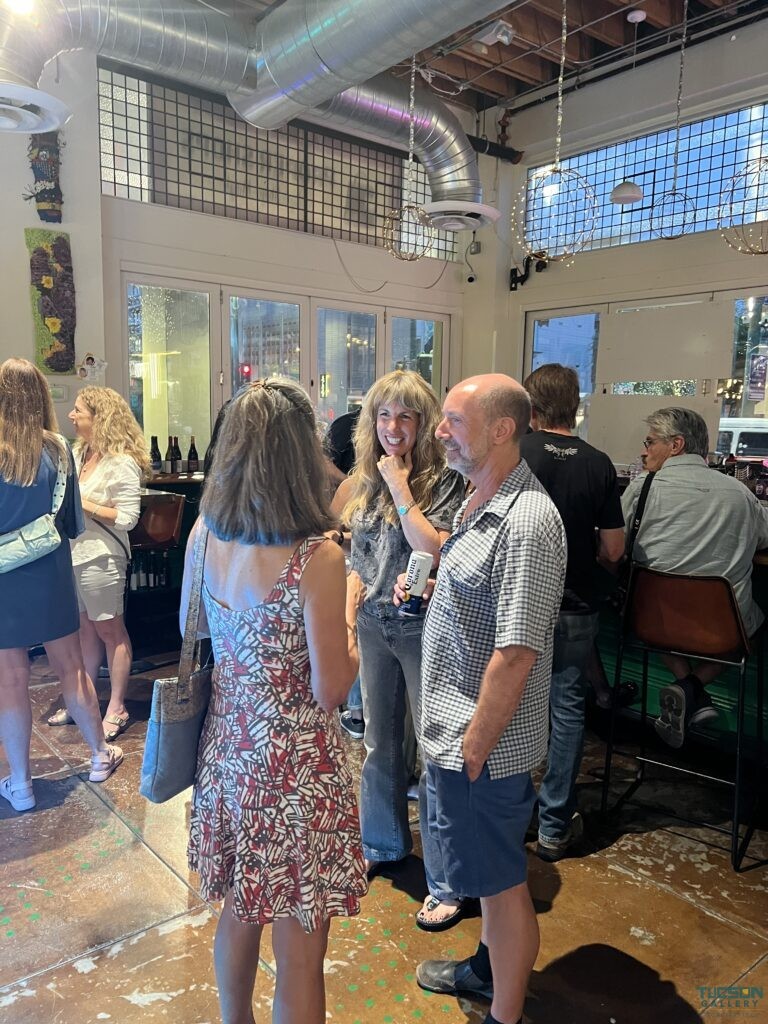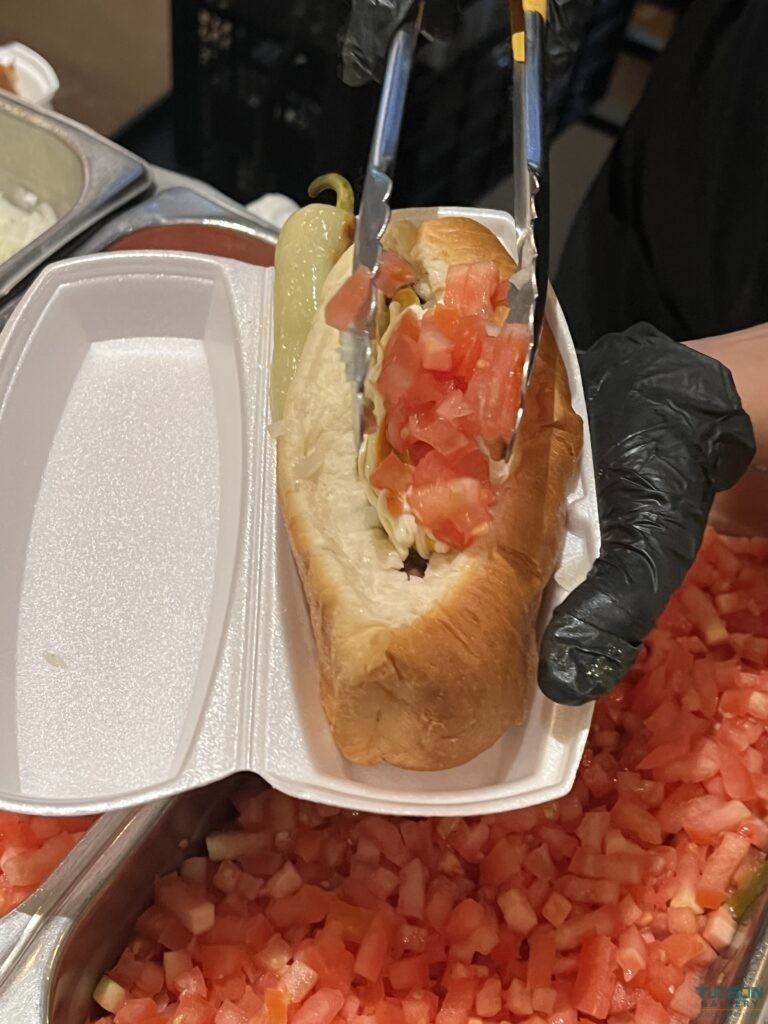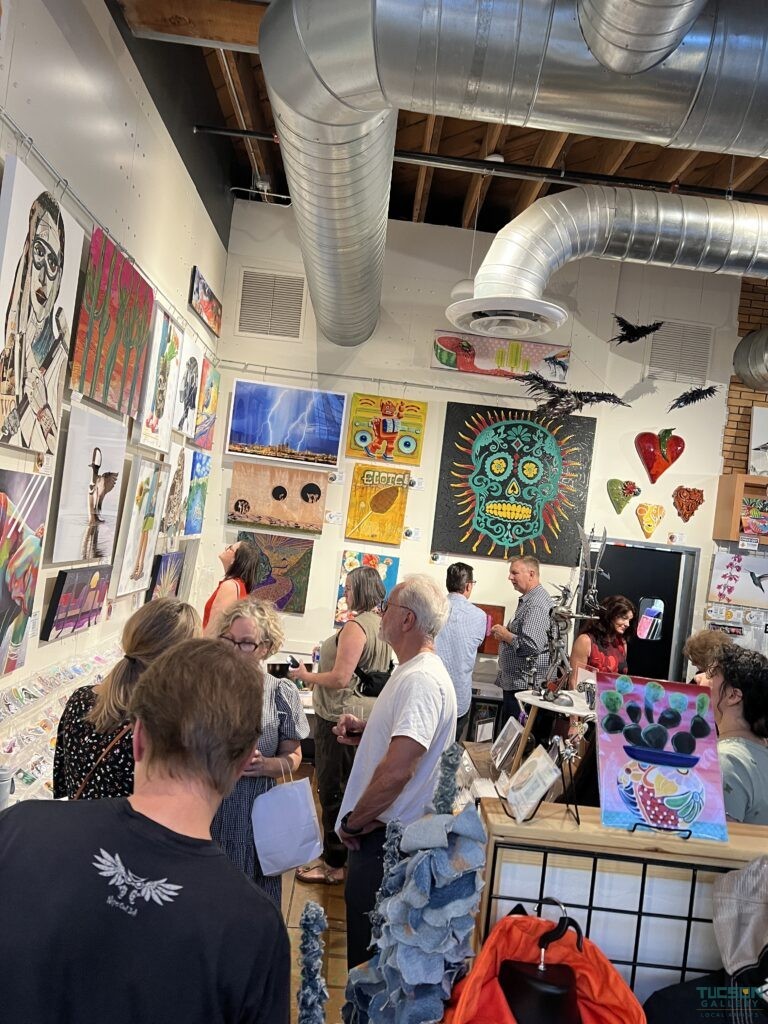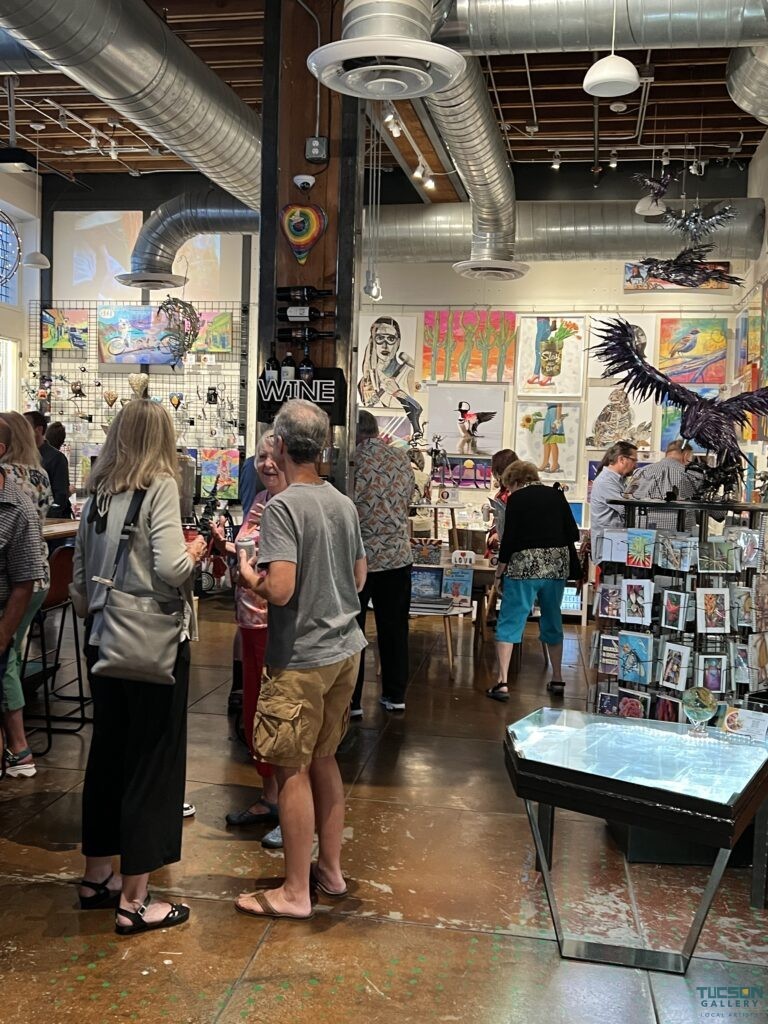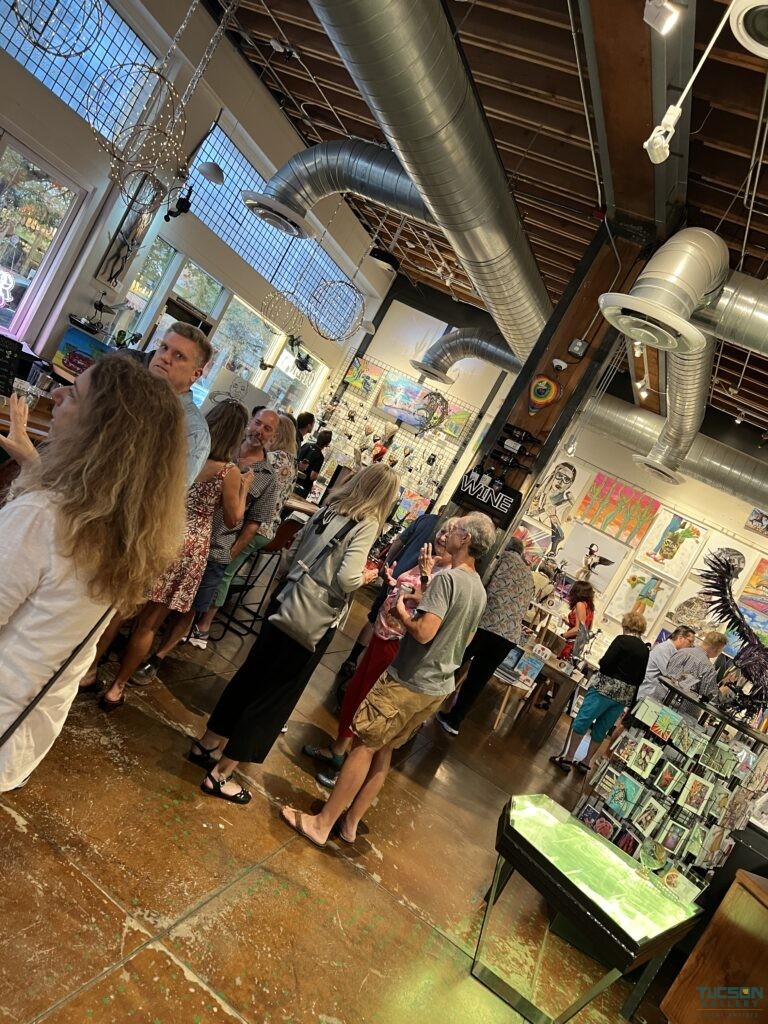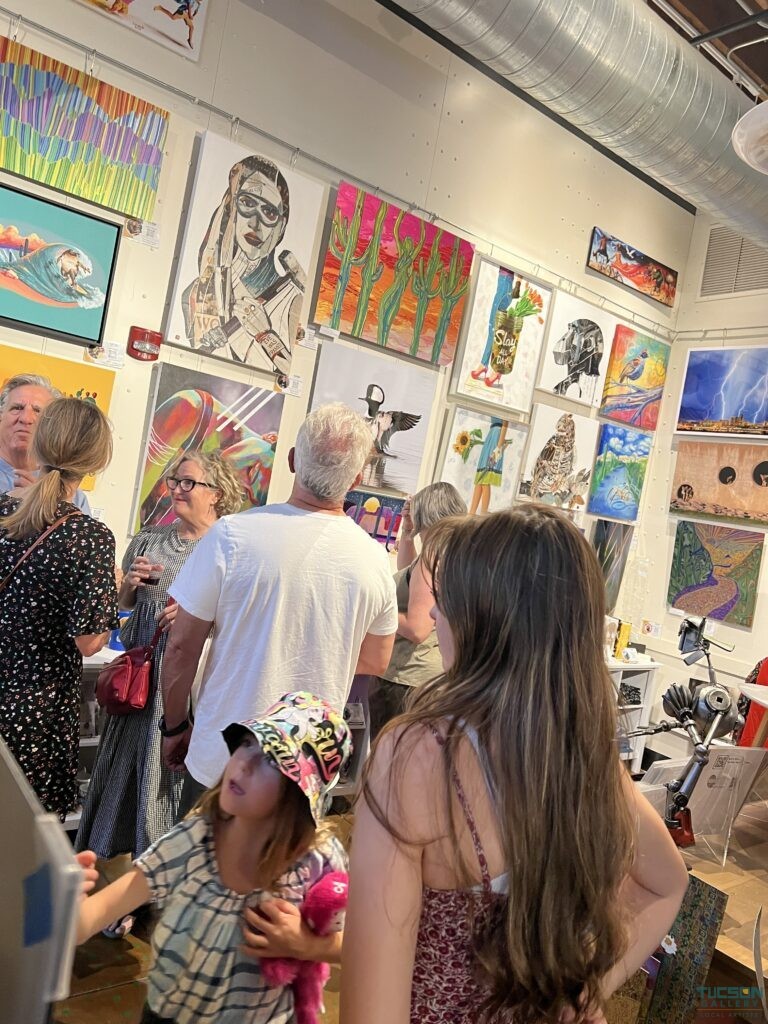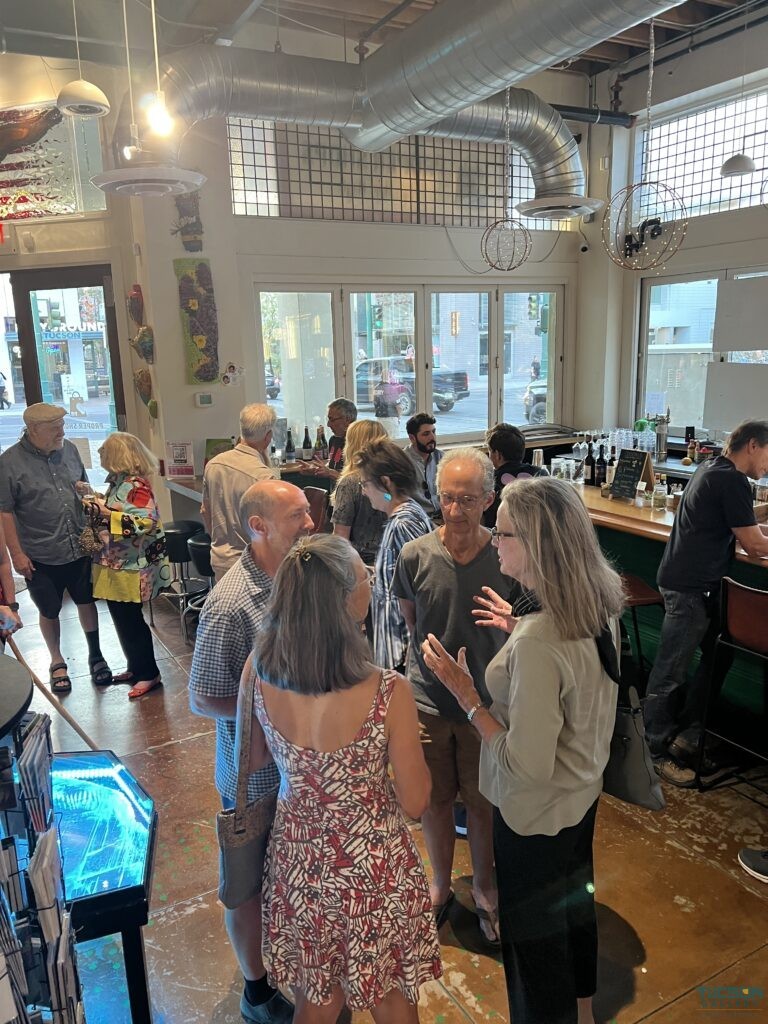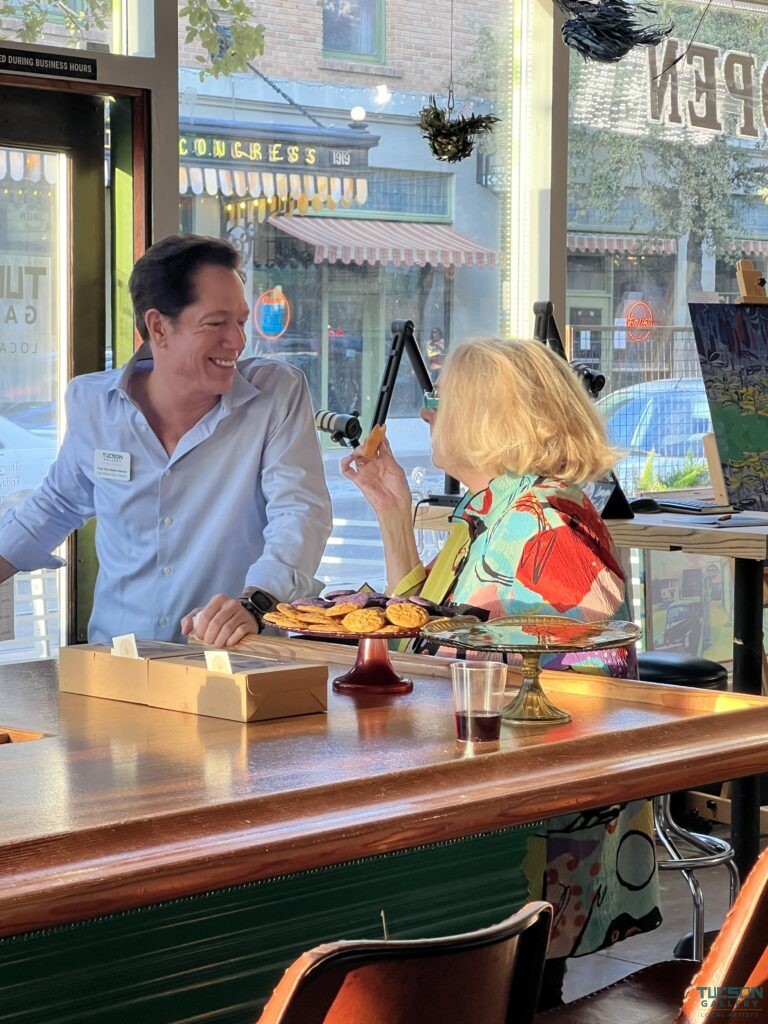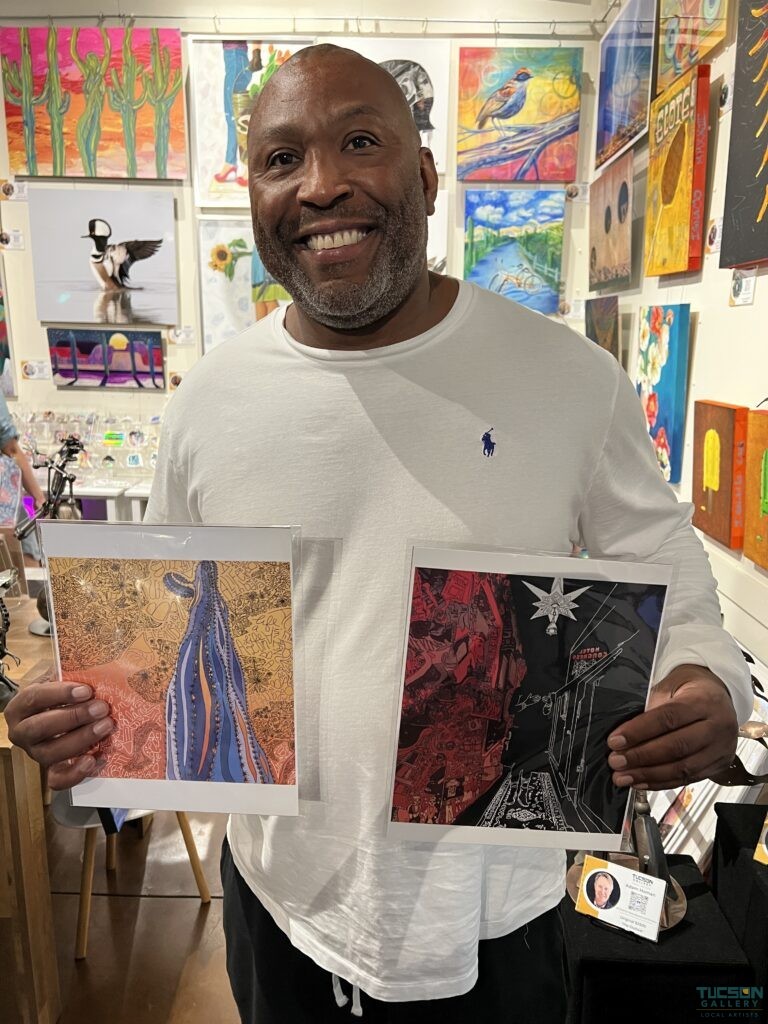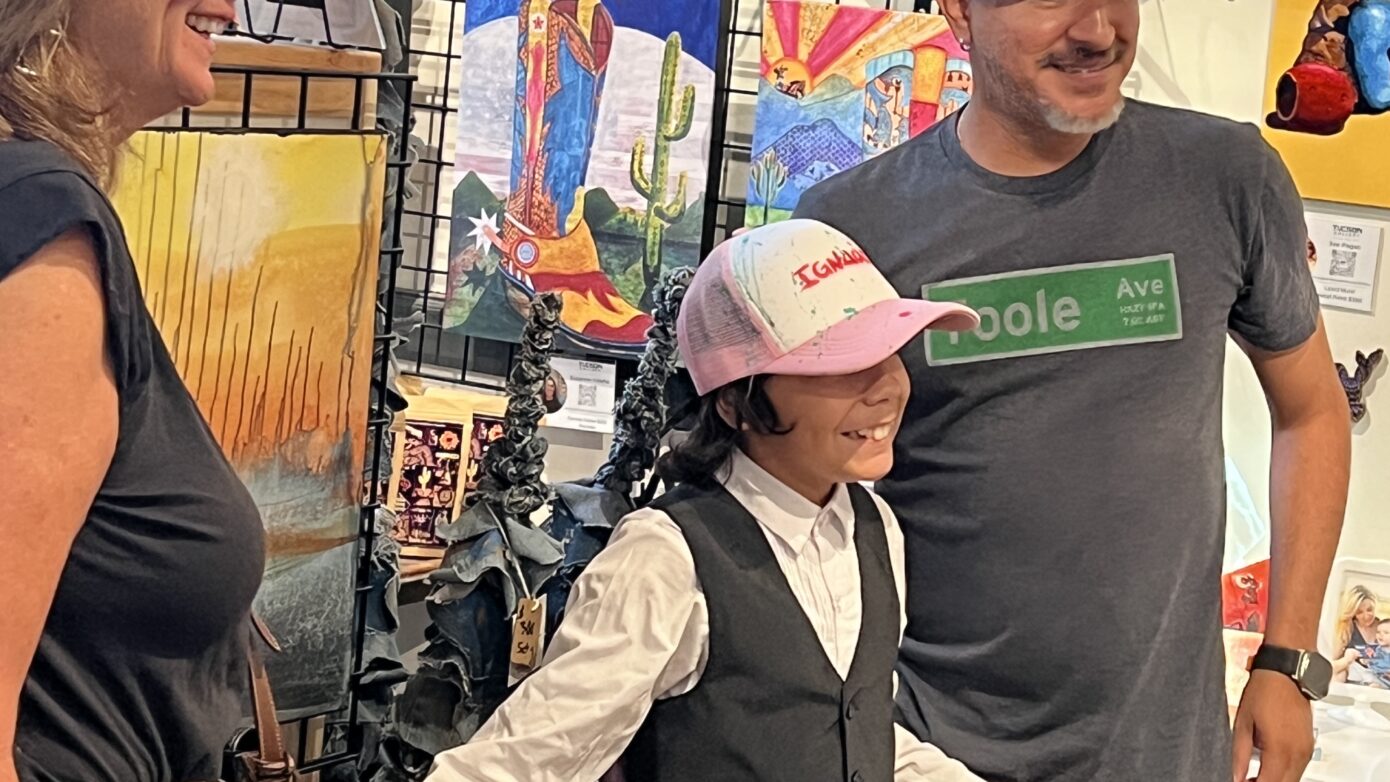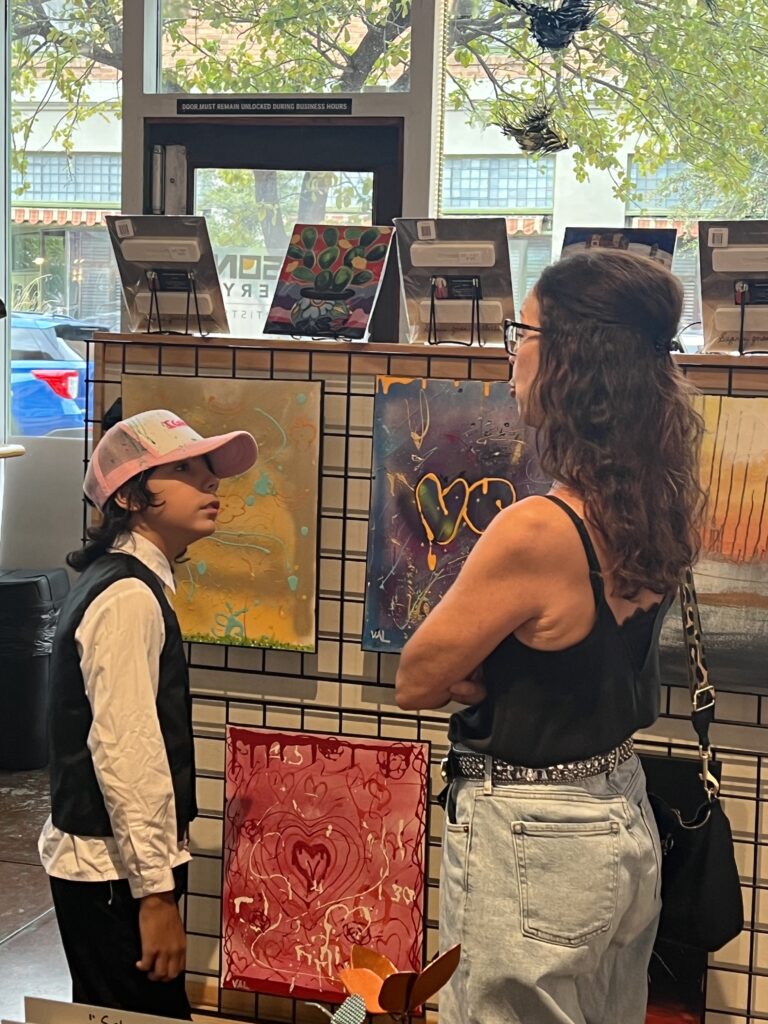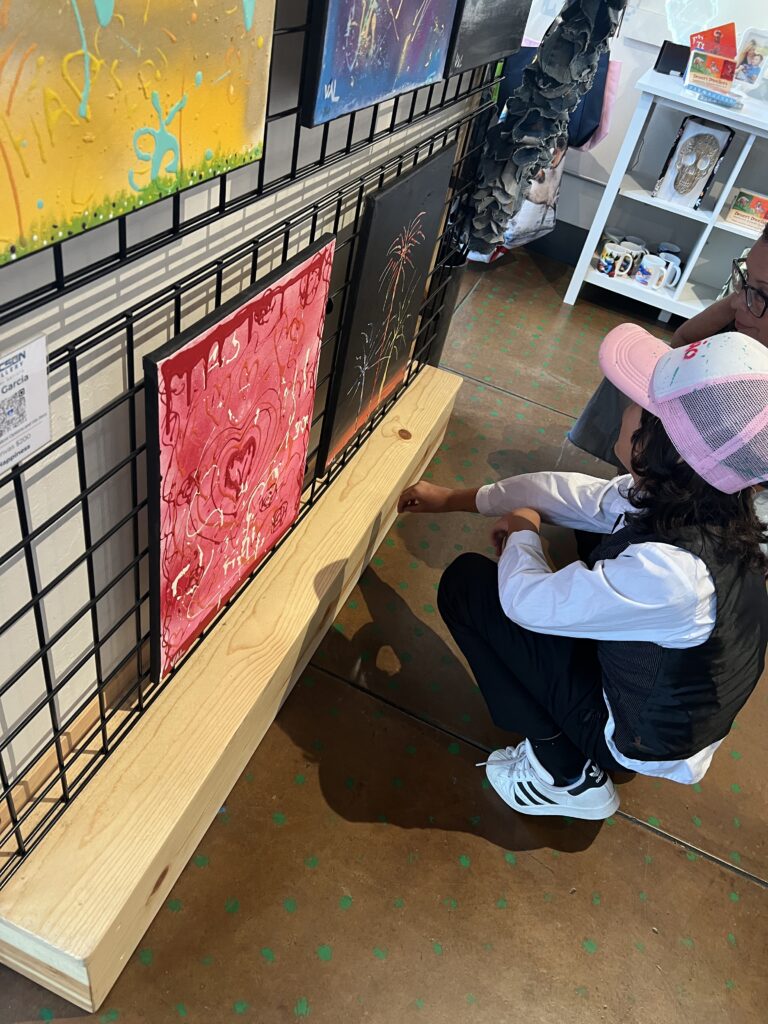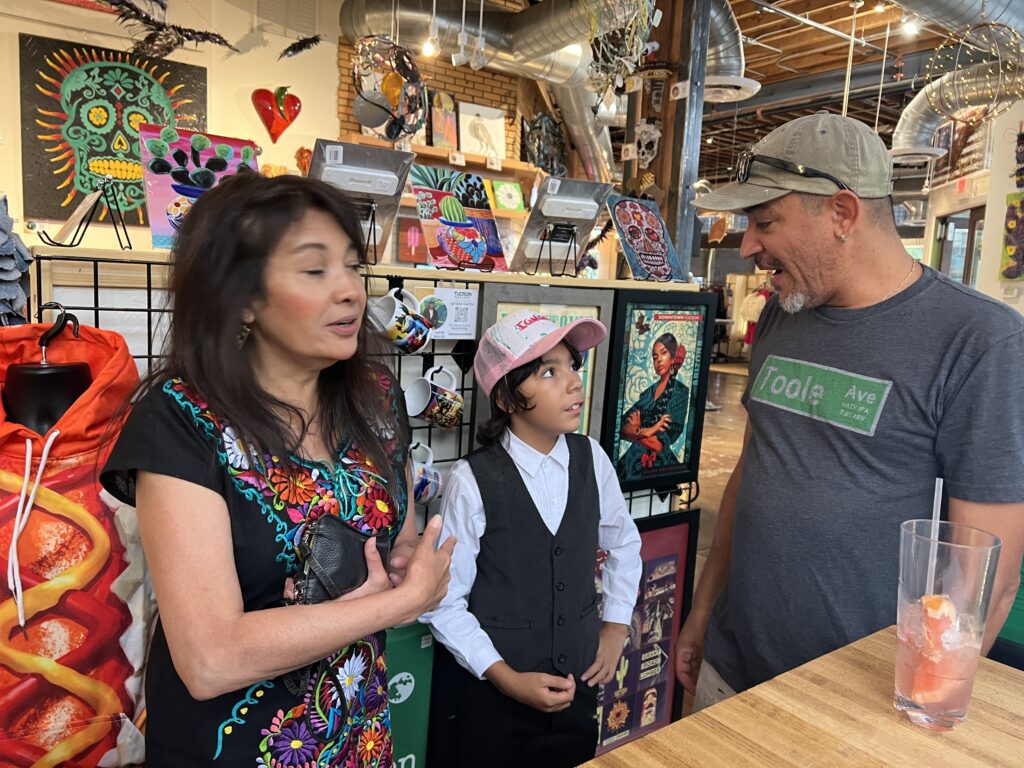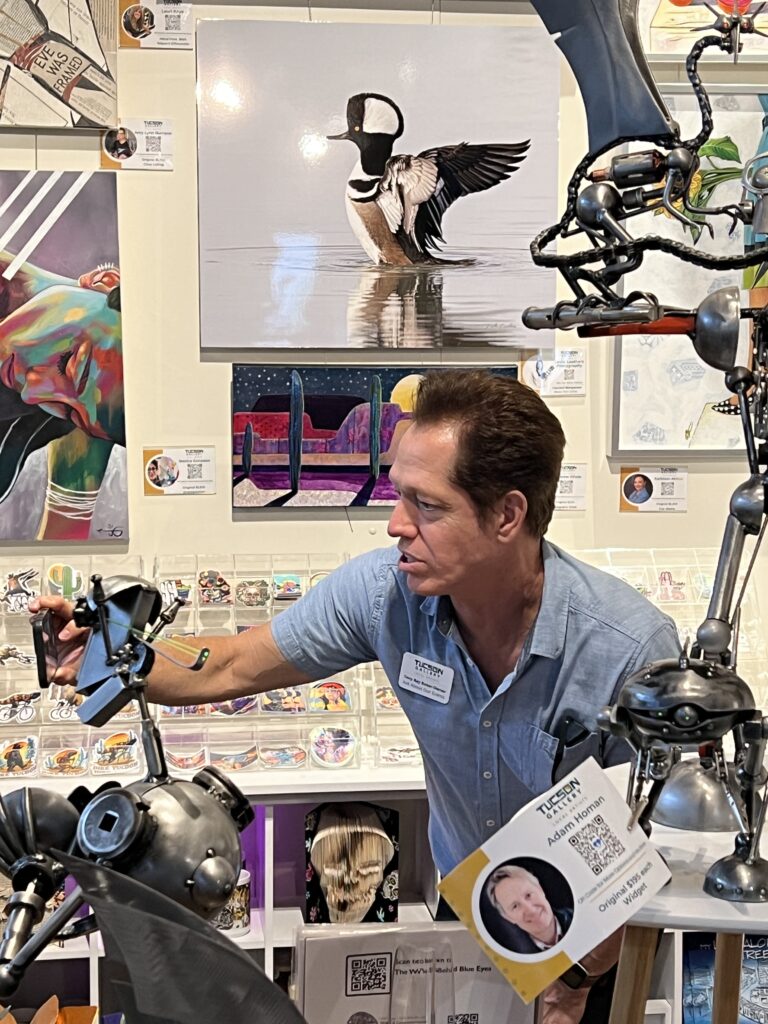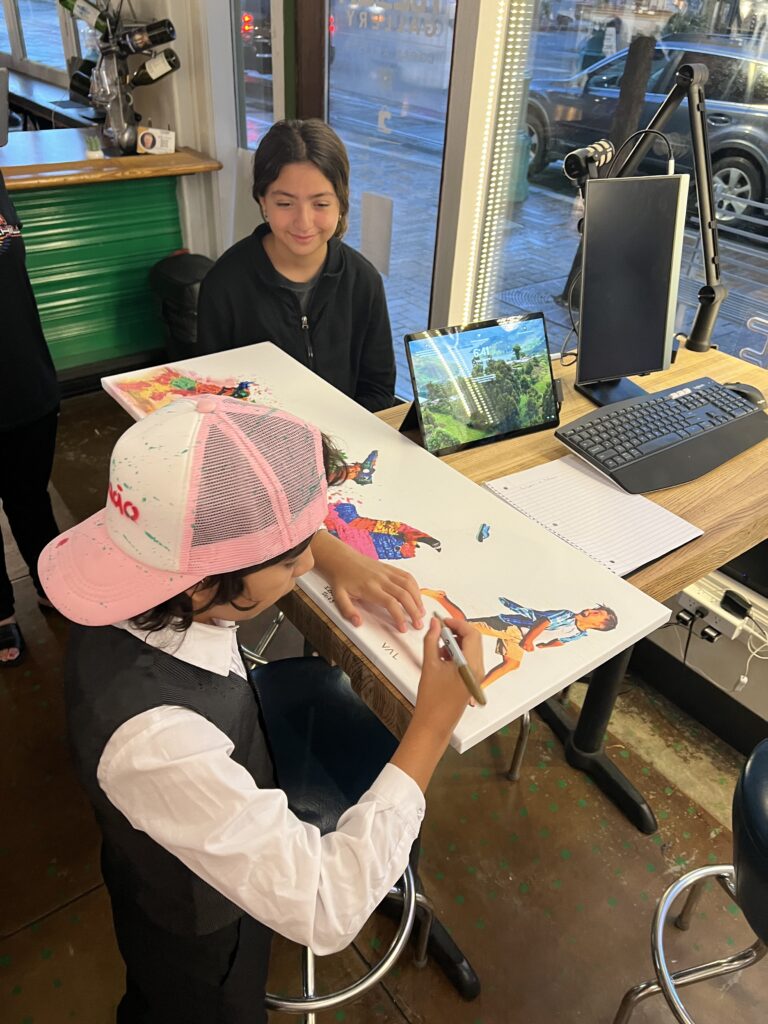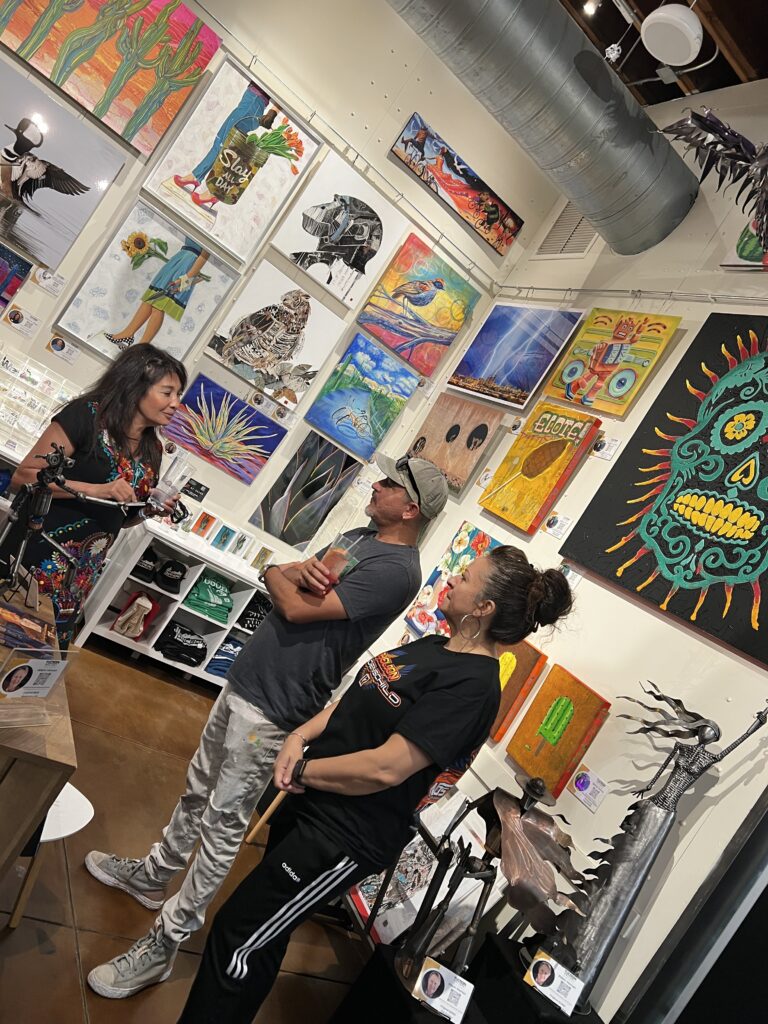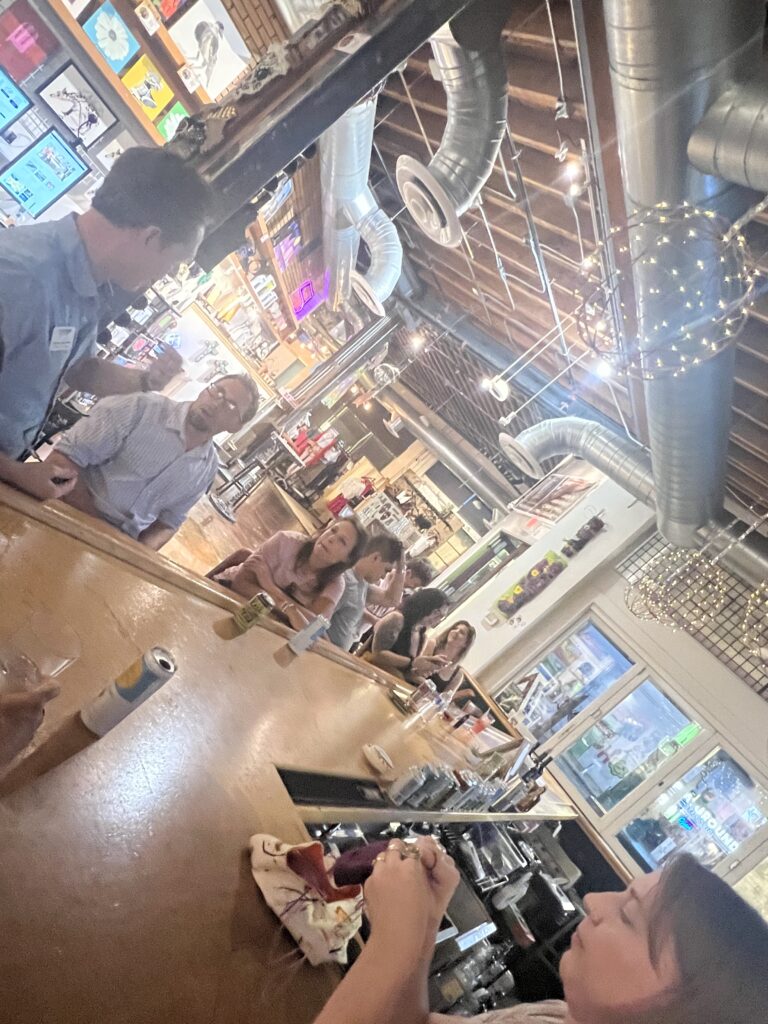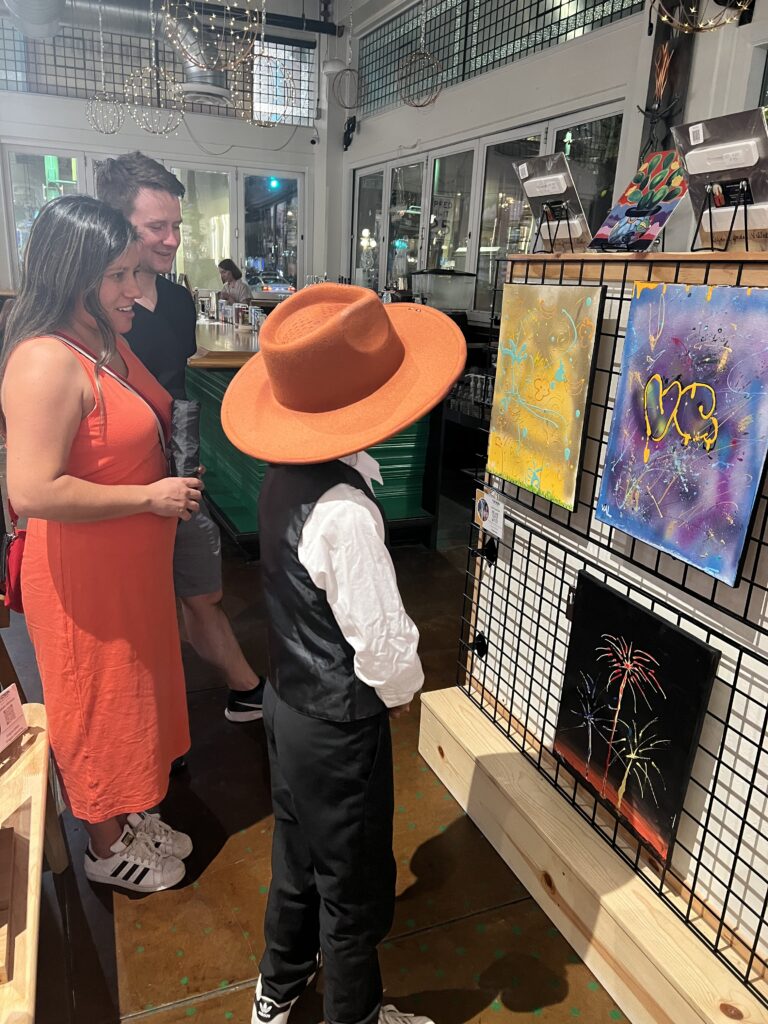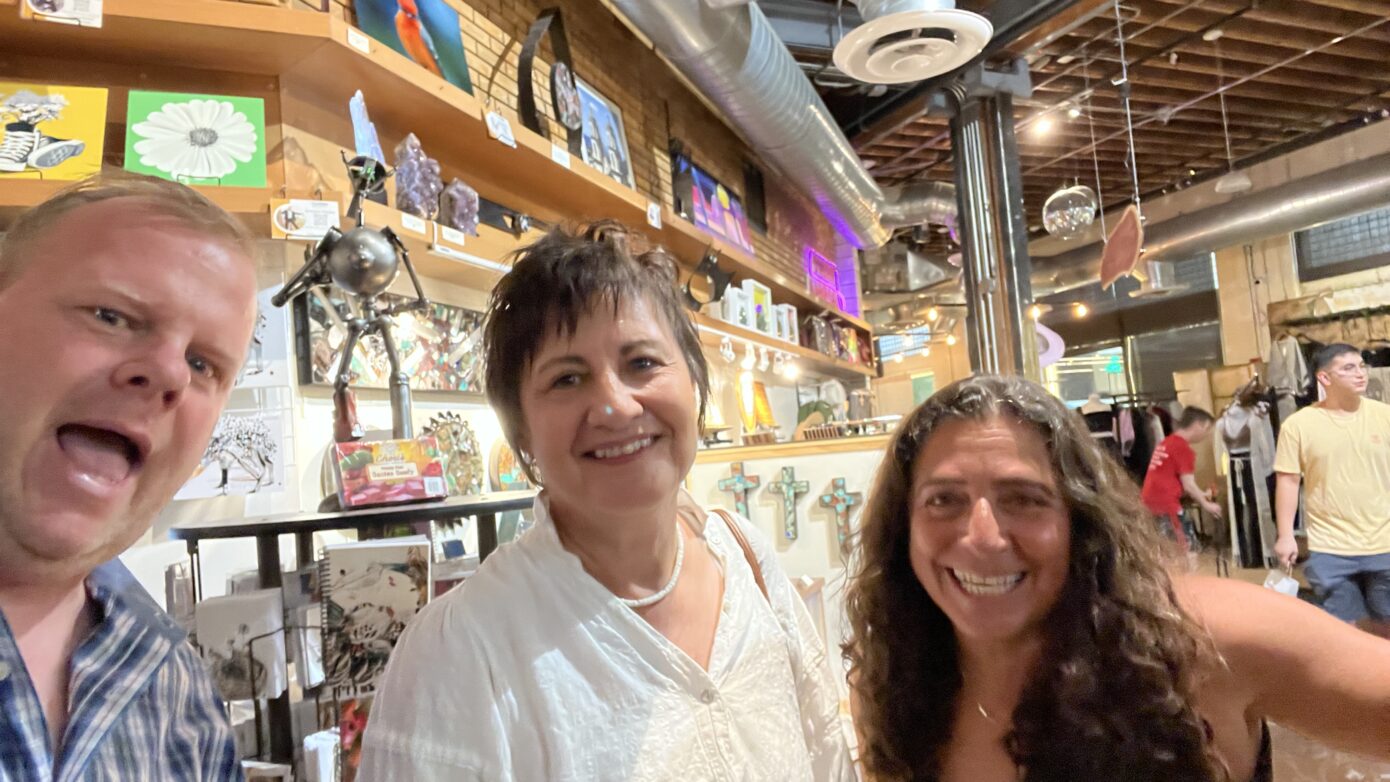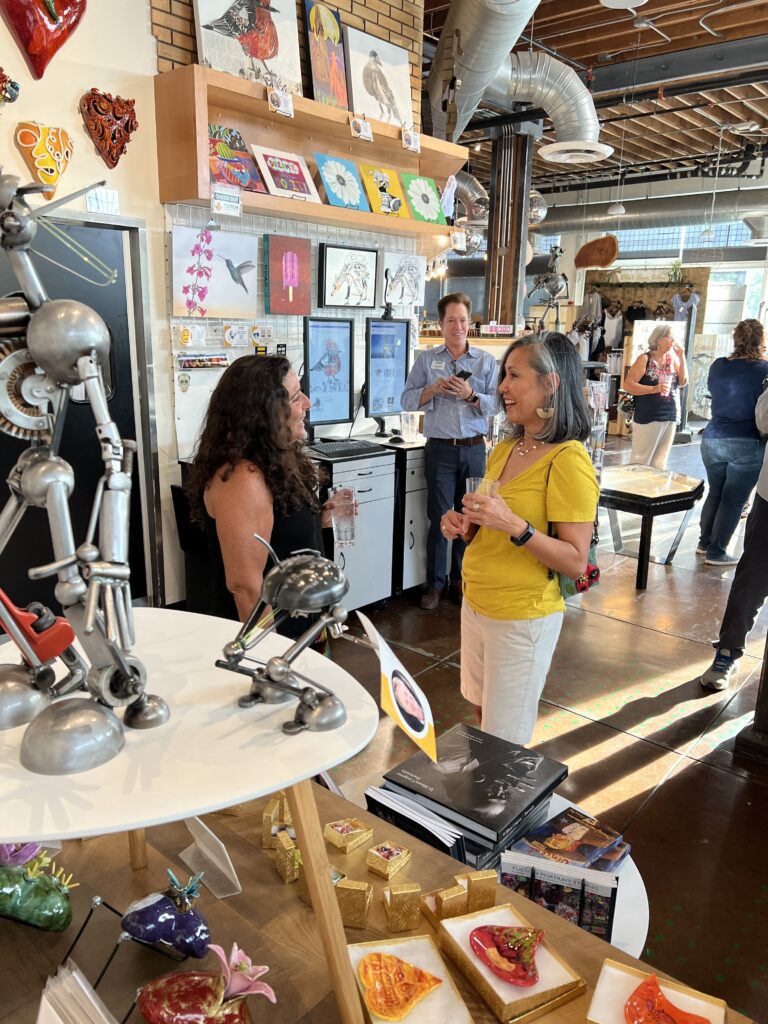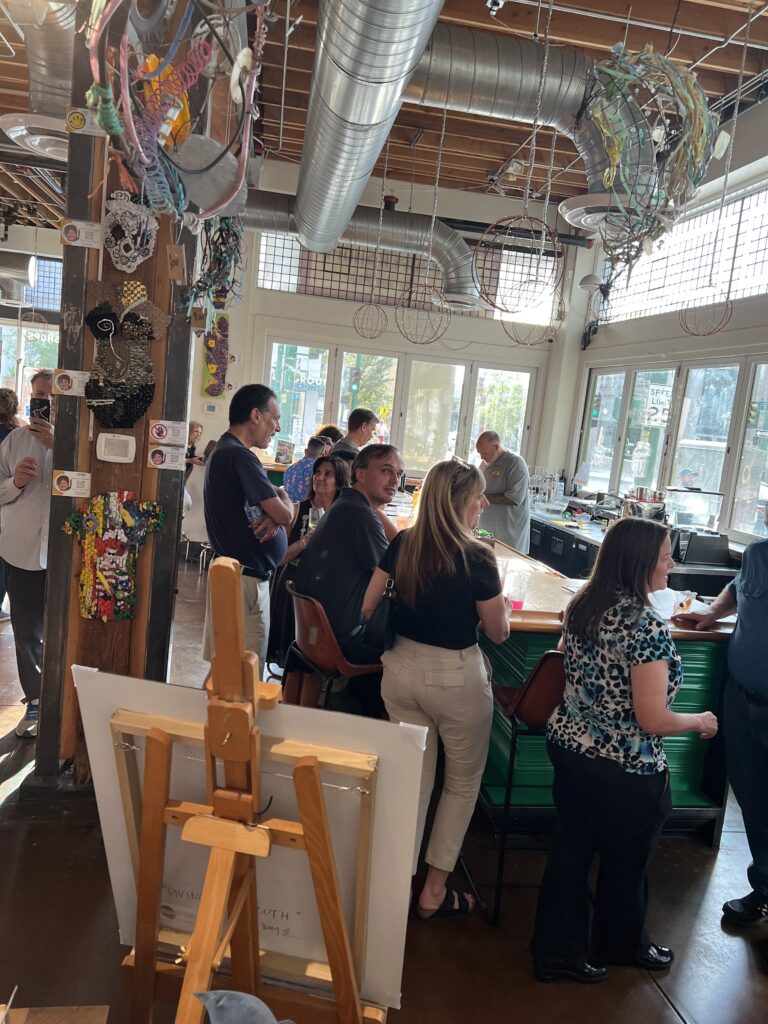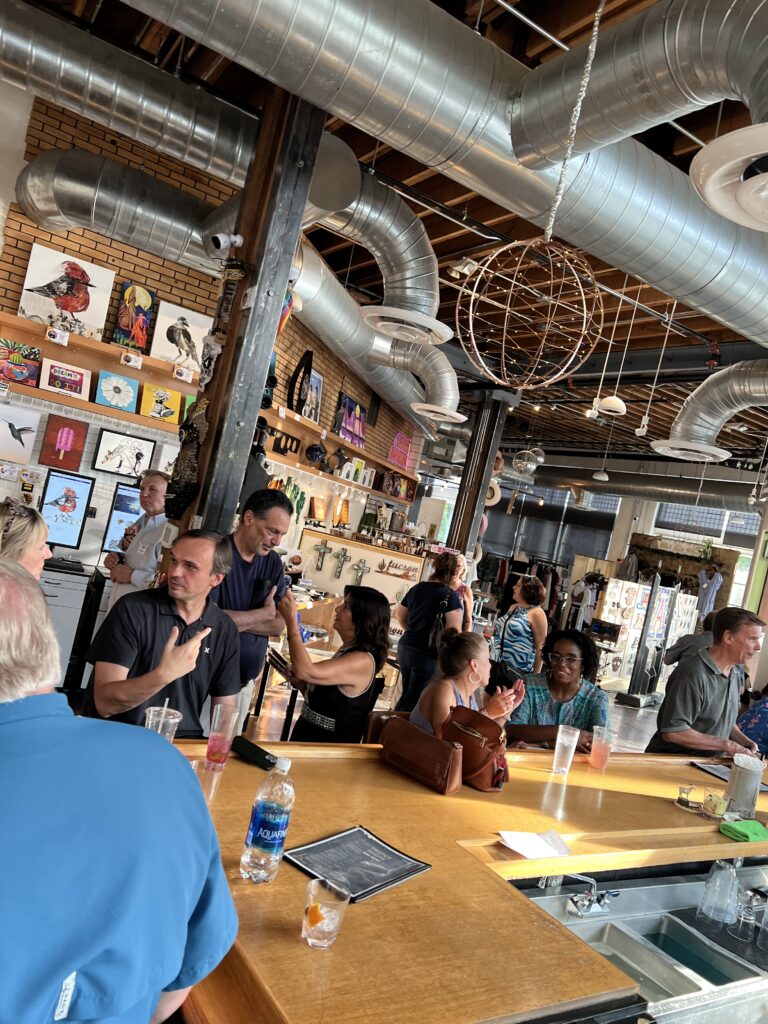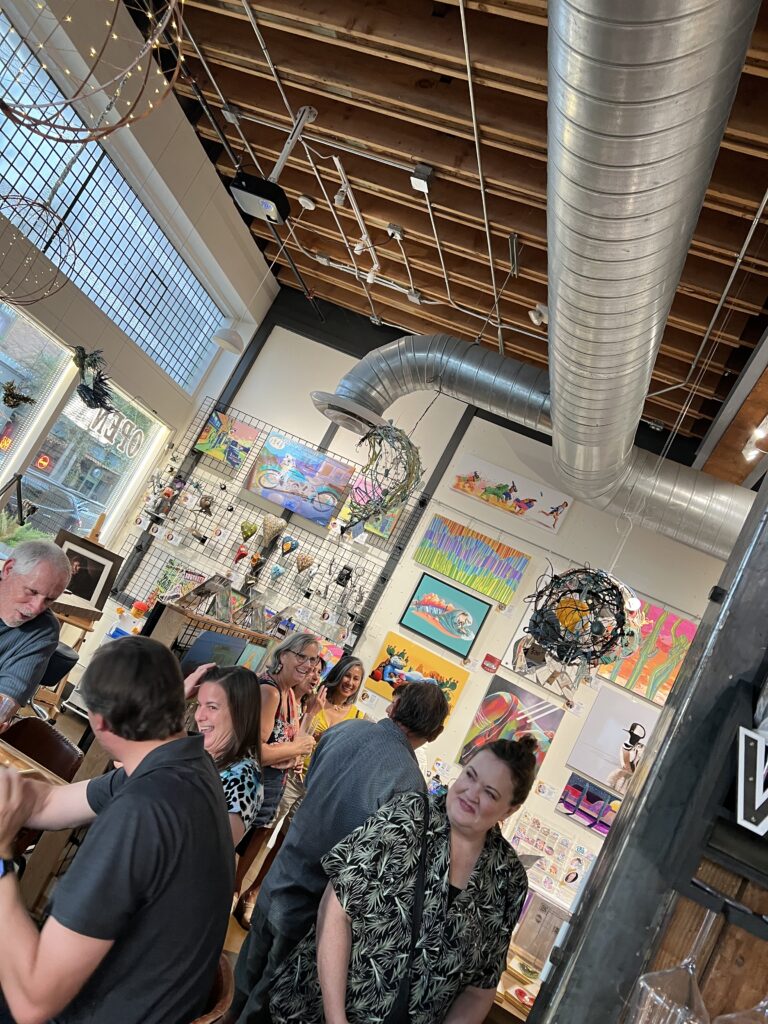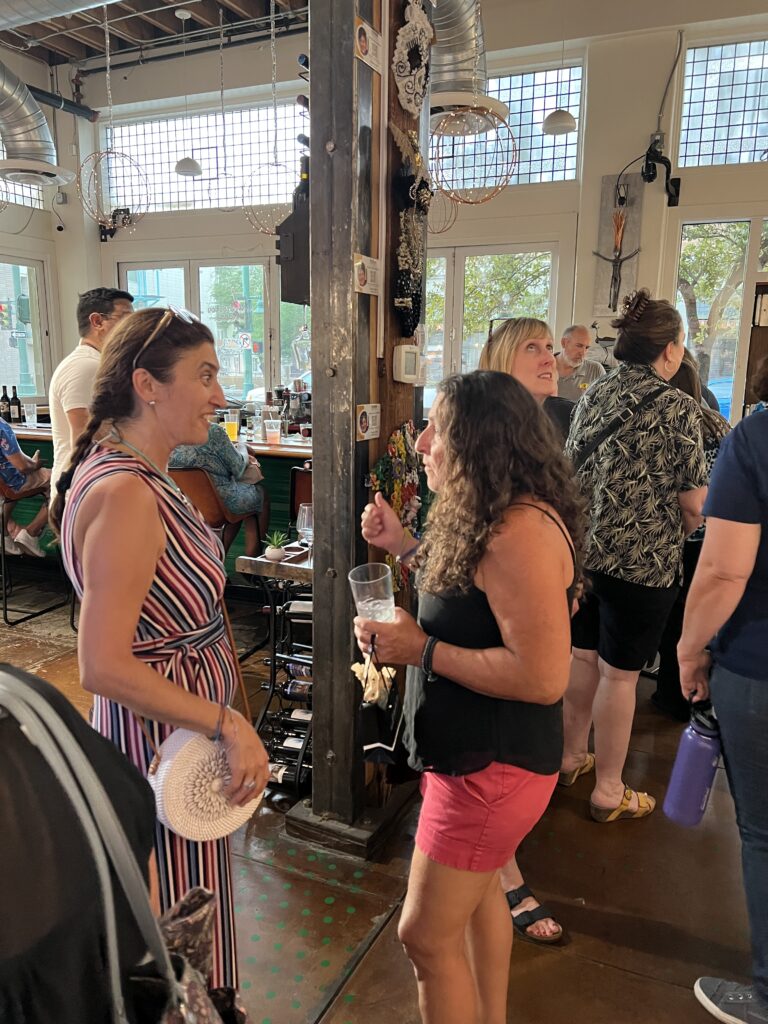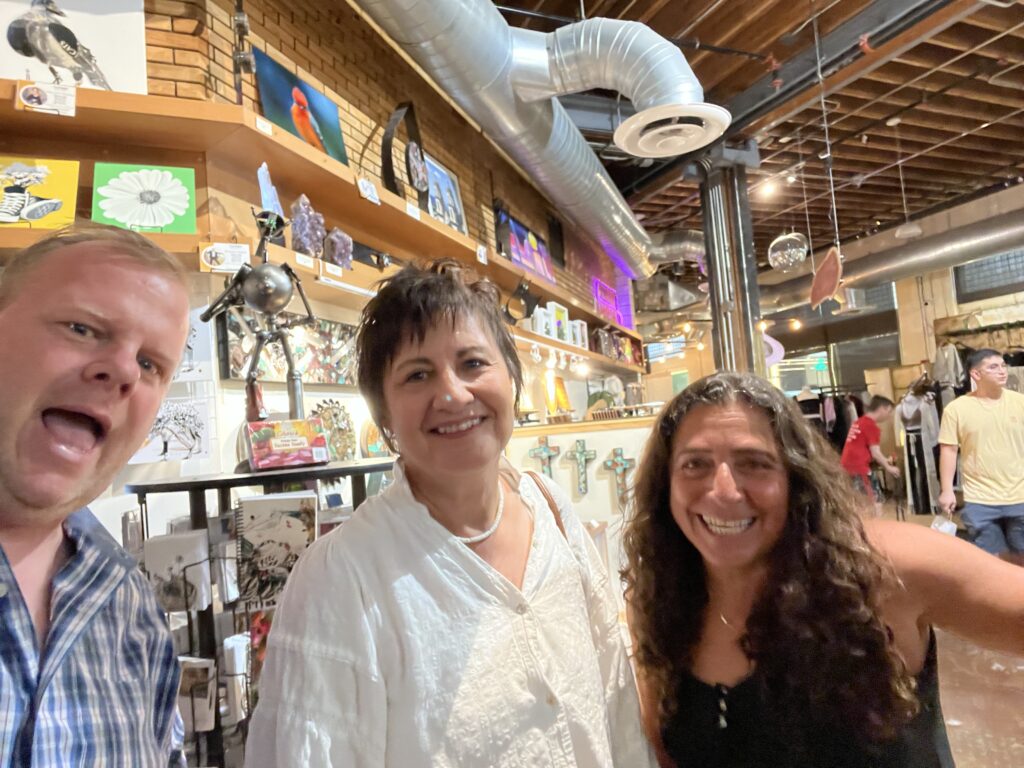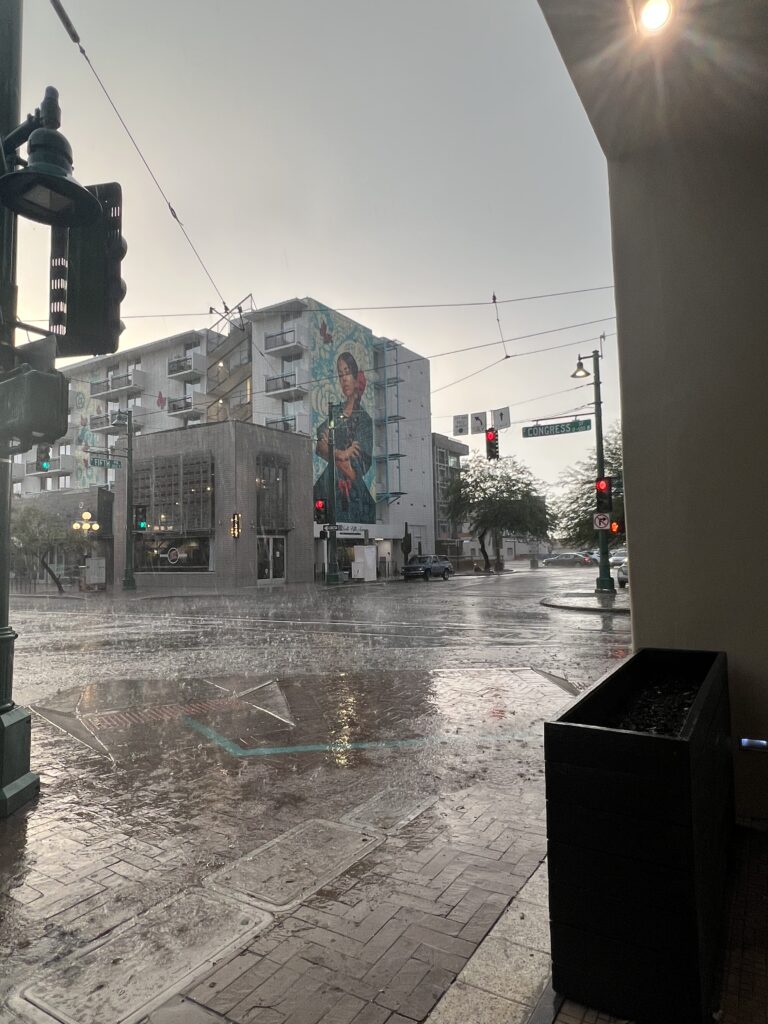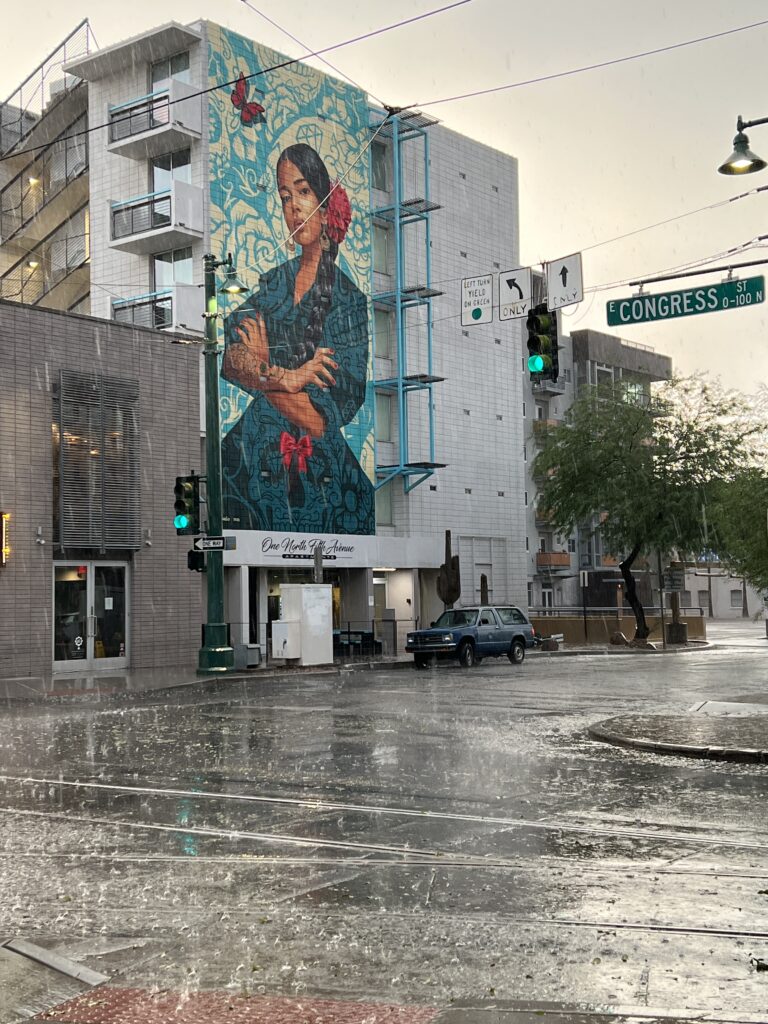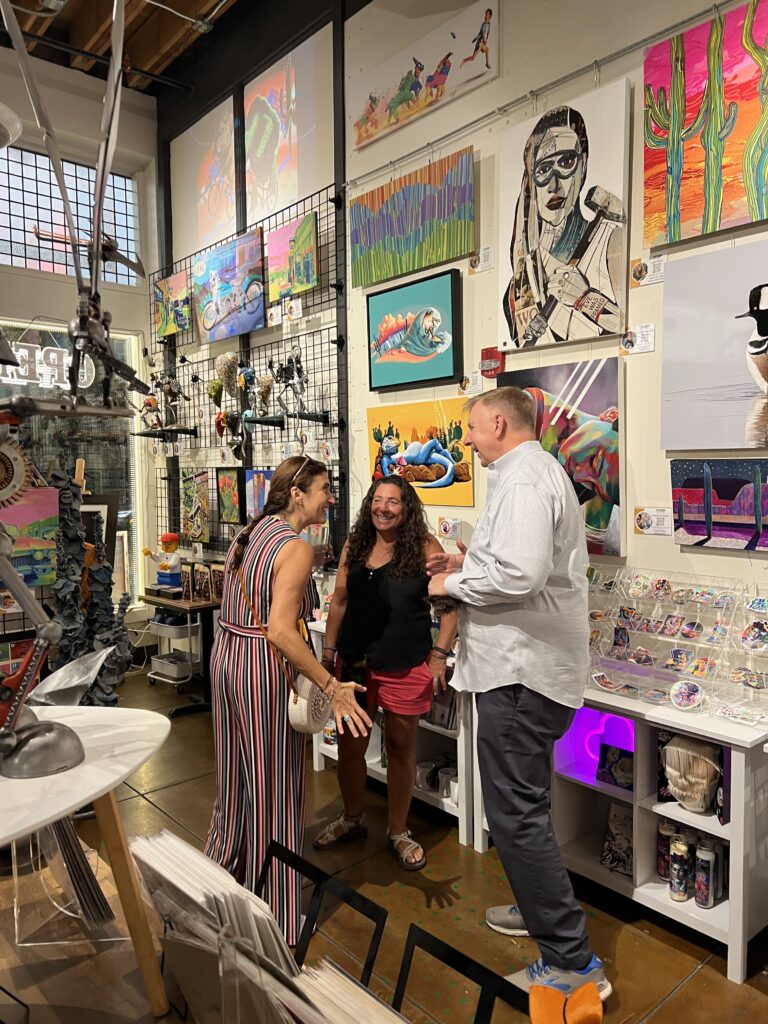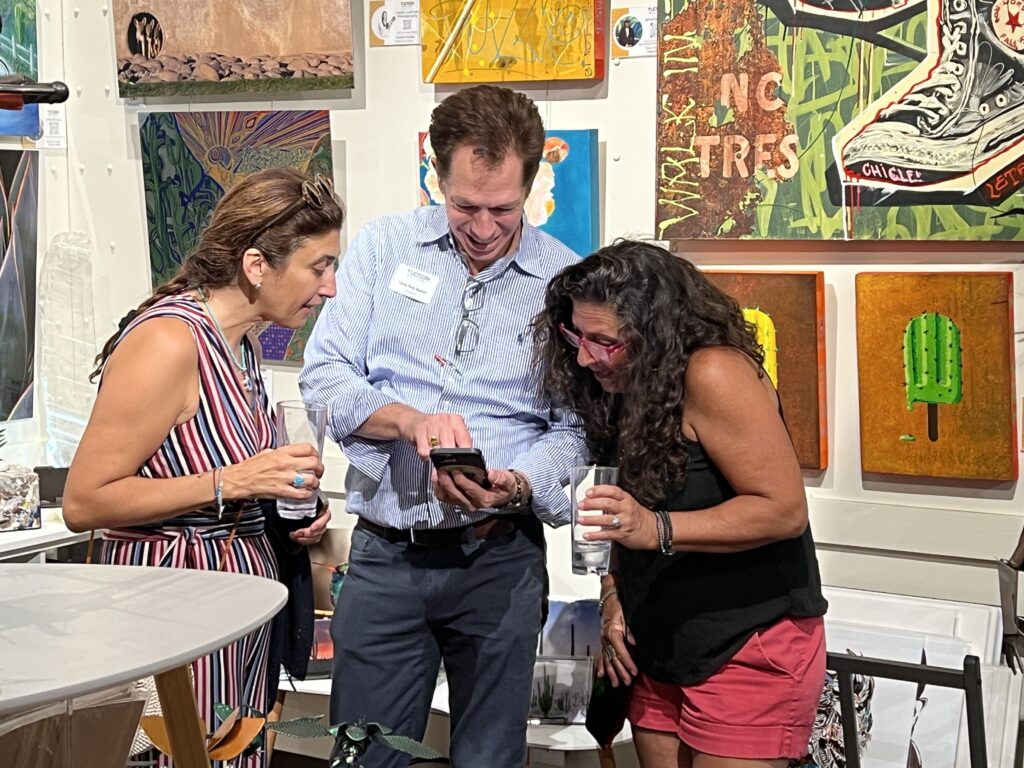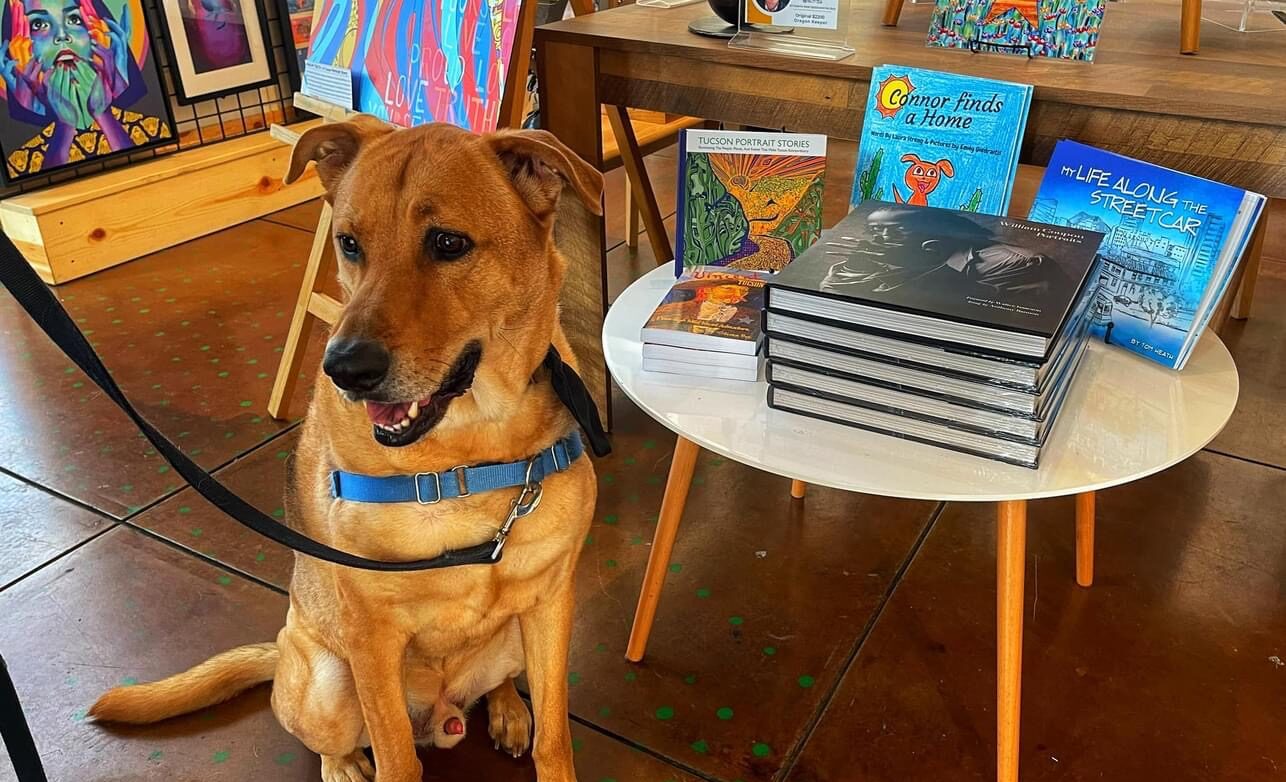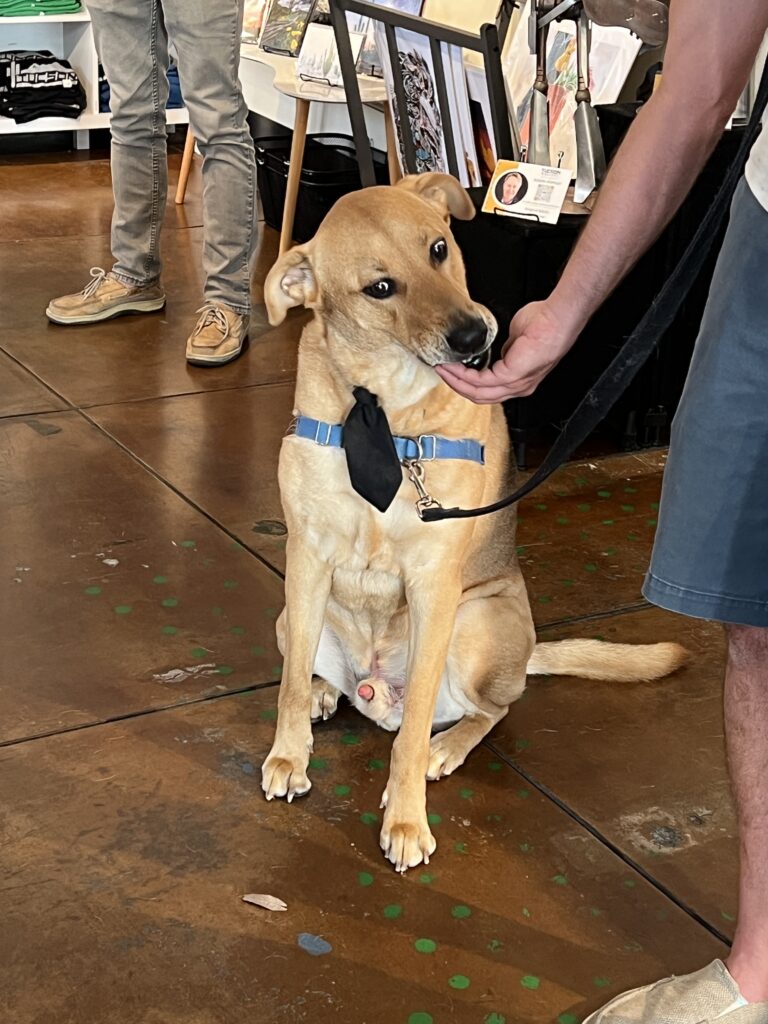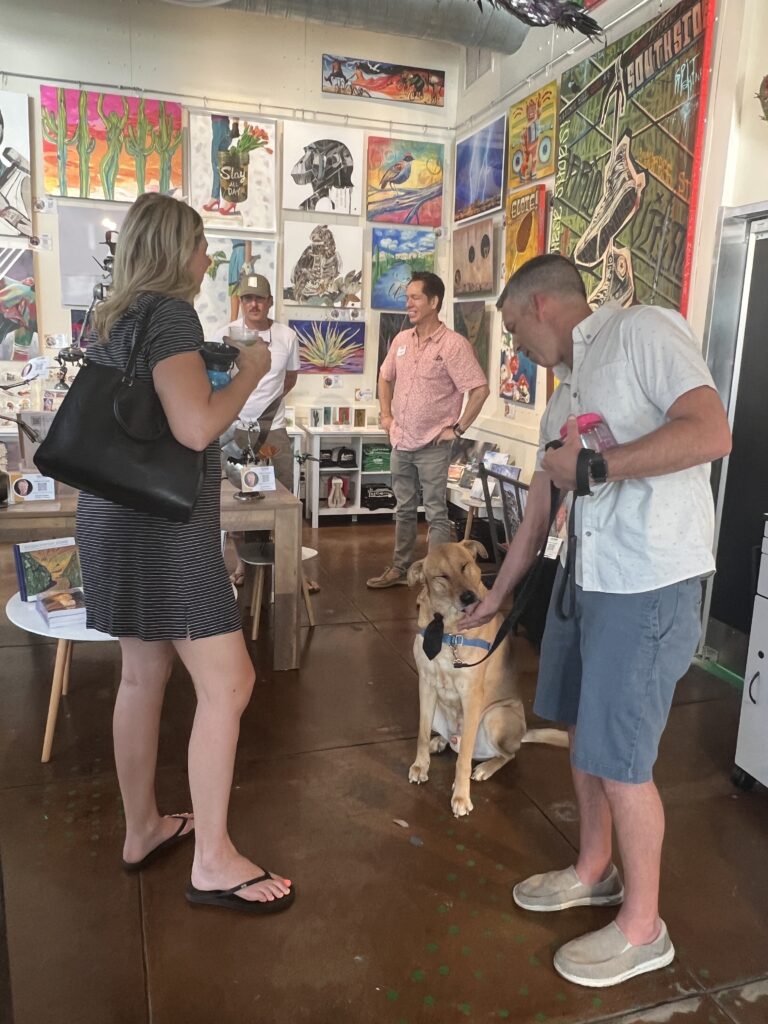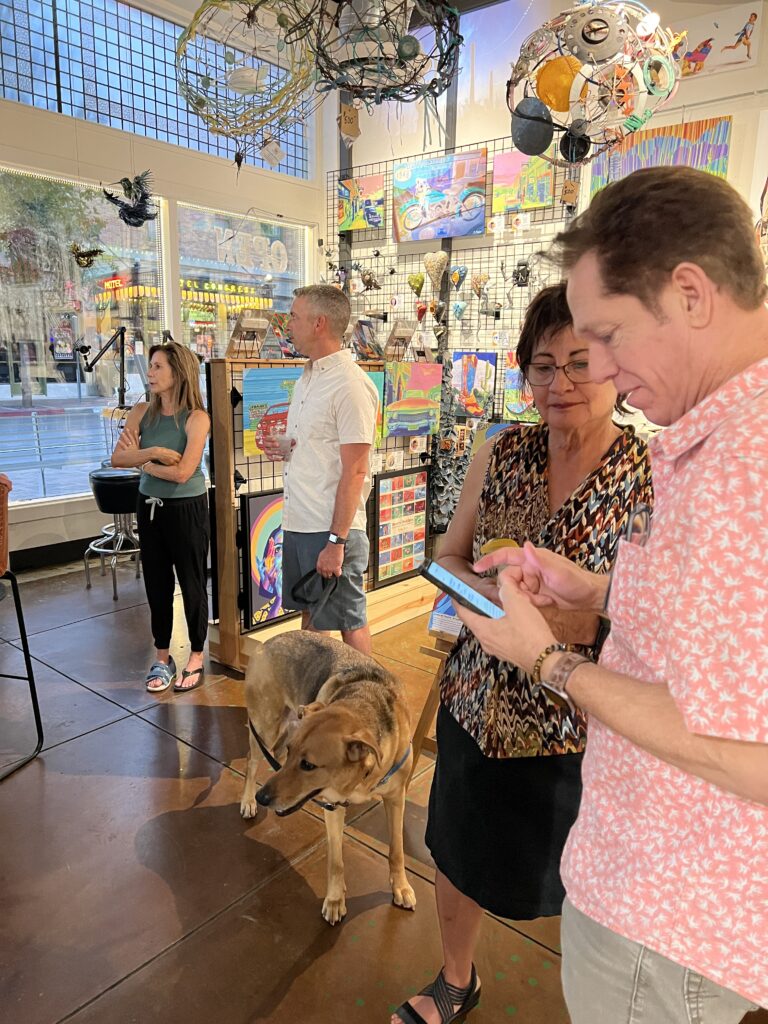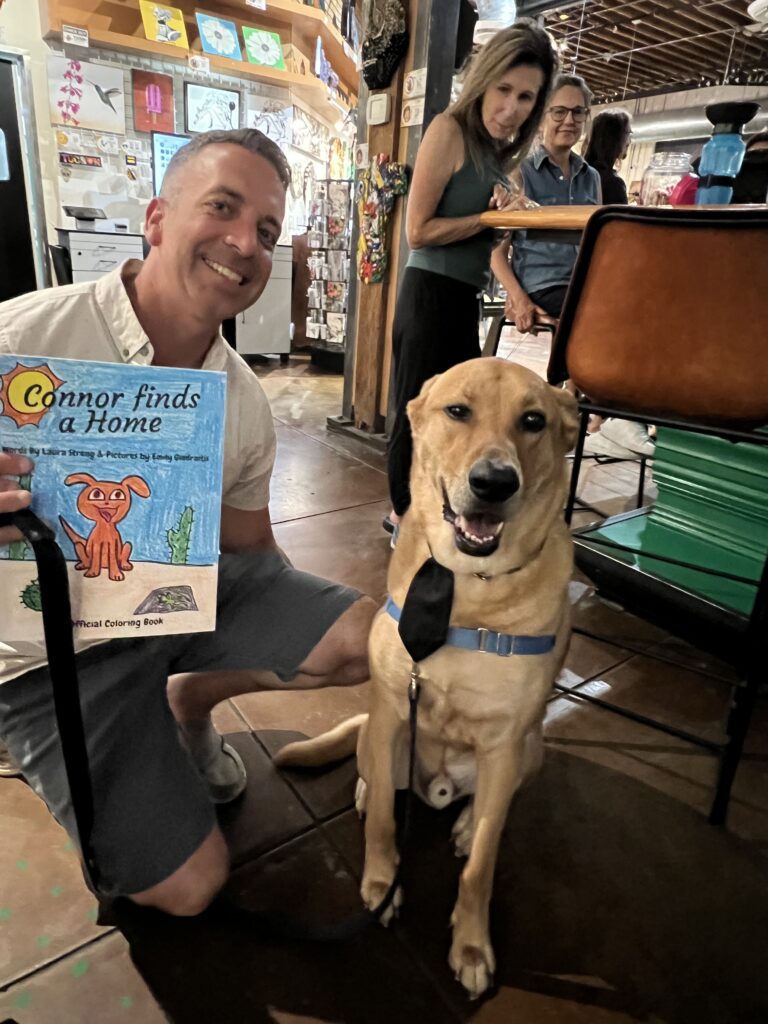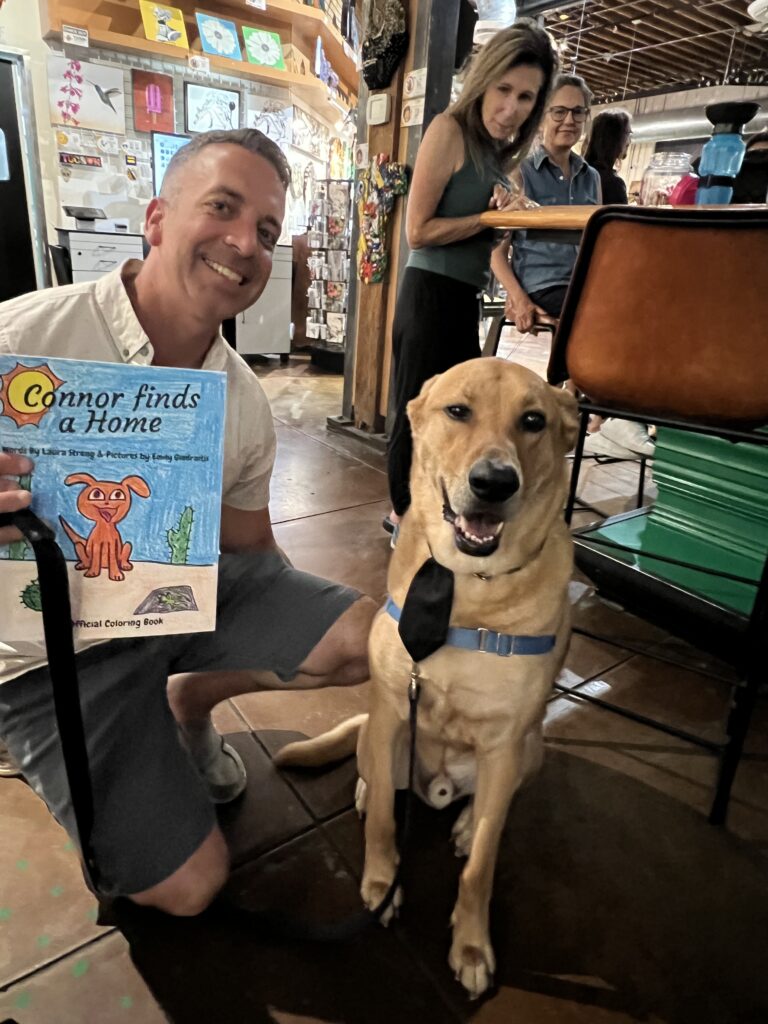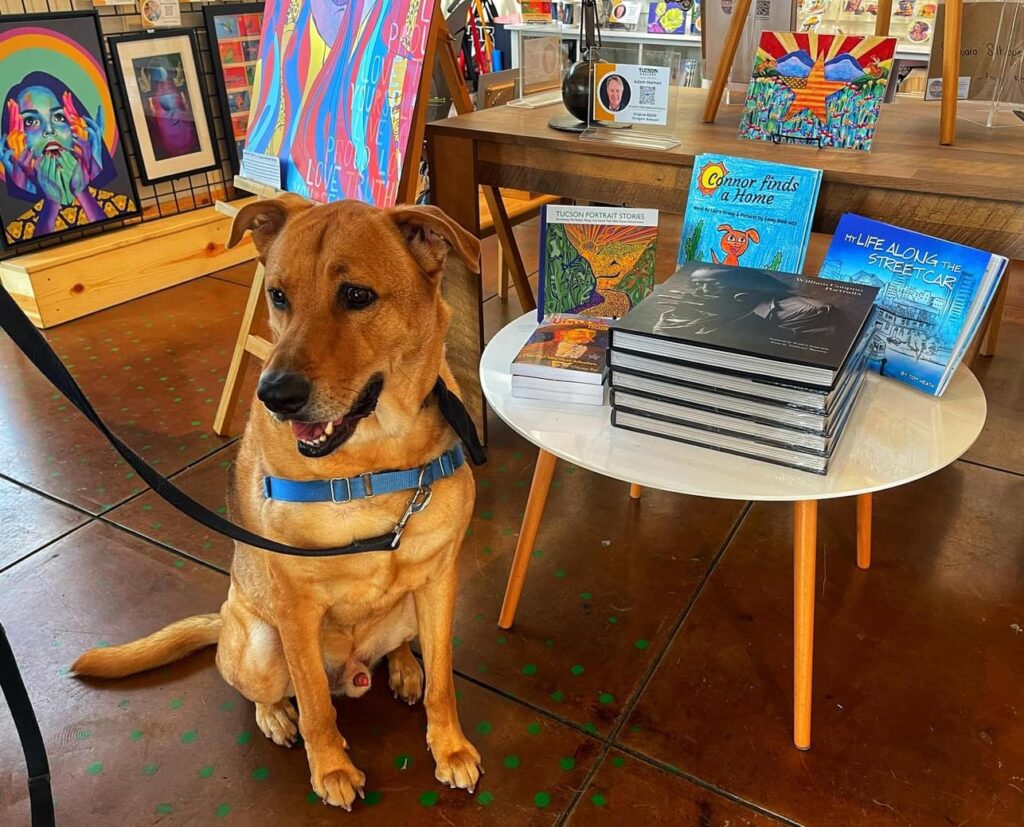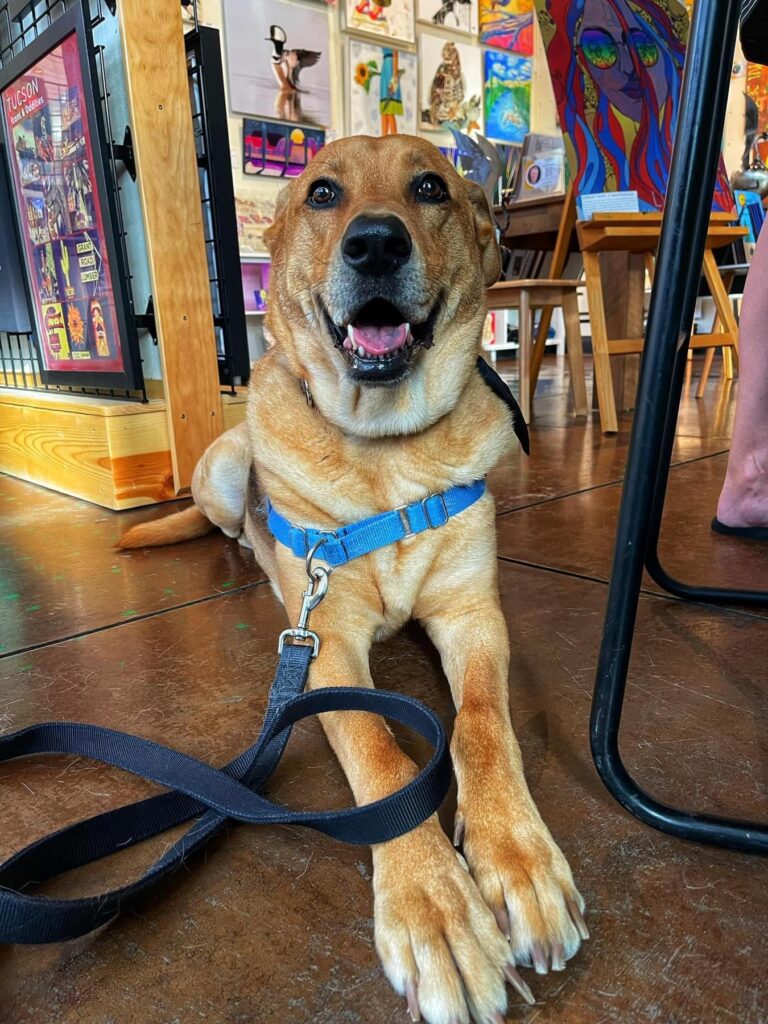Event Photos
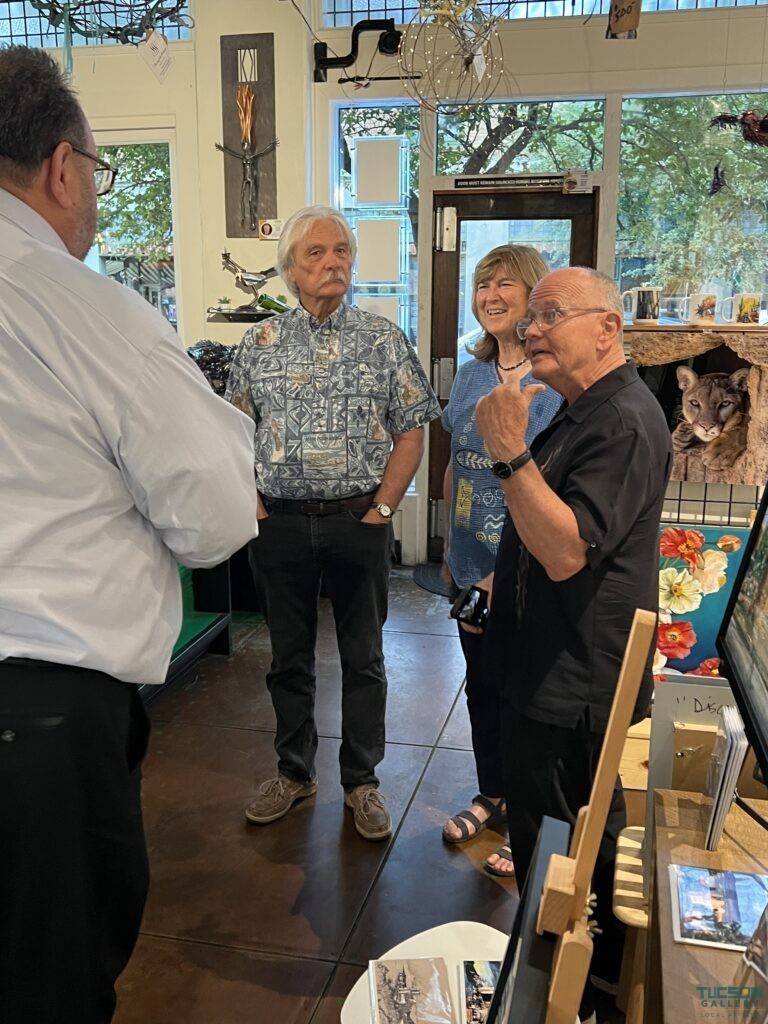
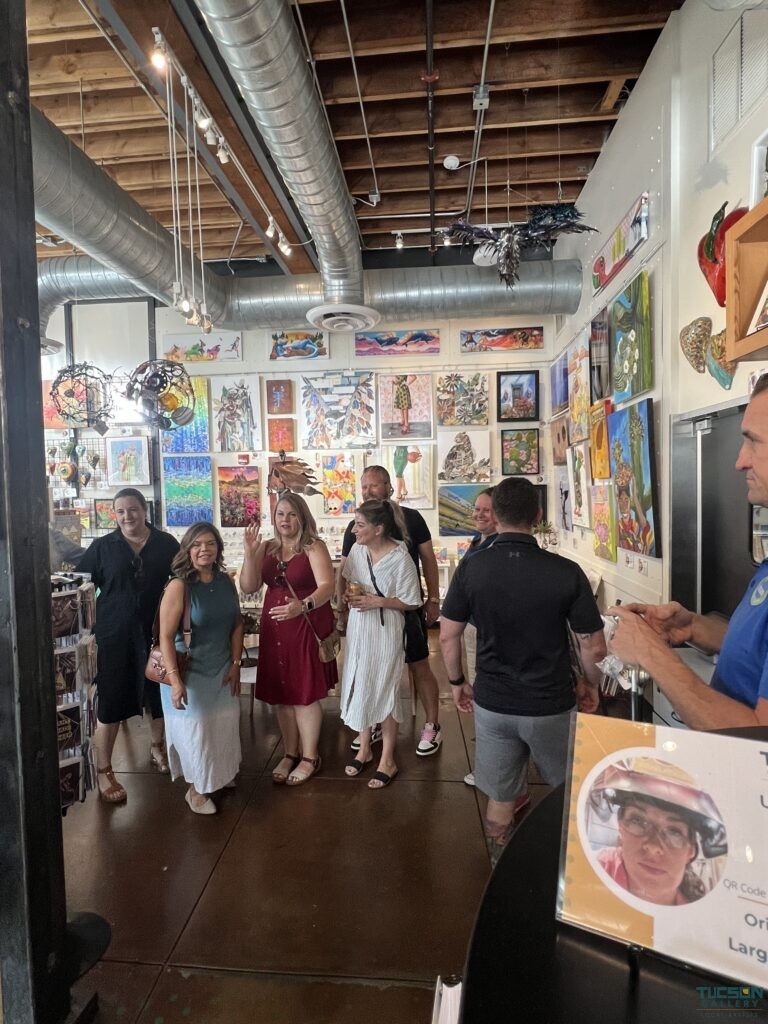
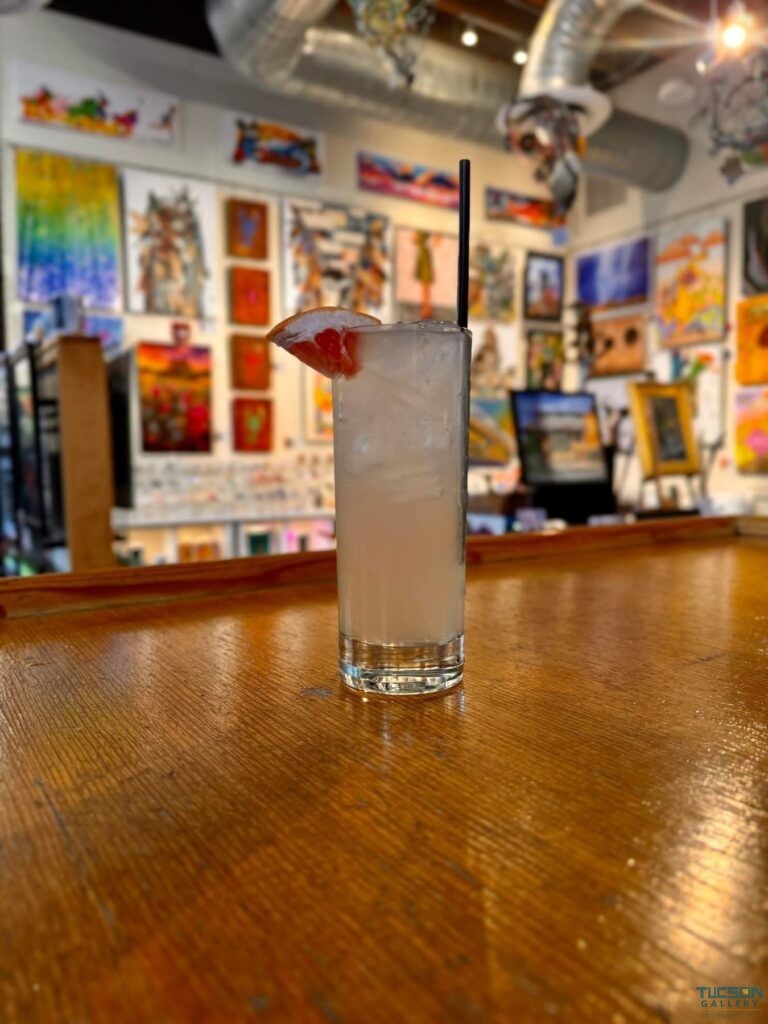
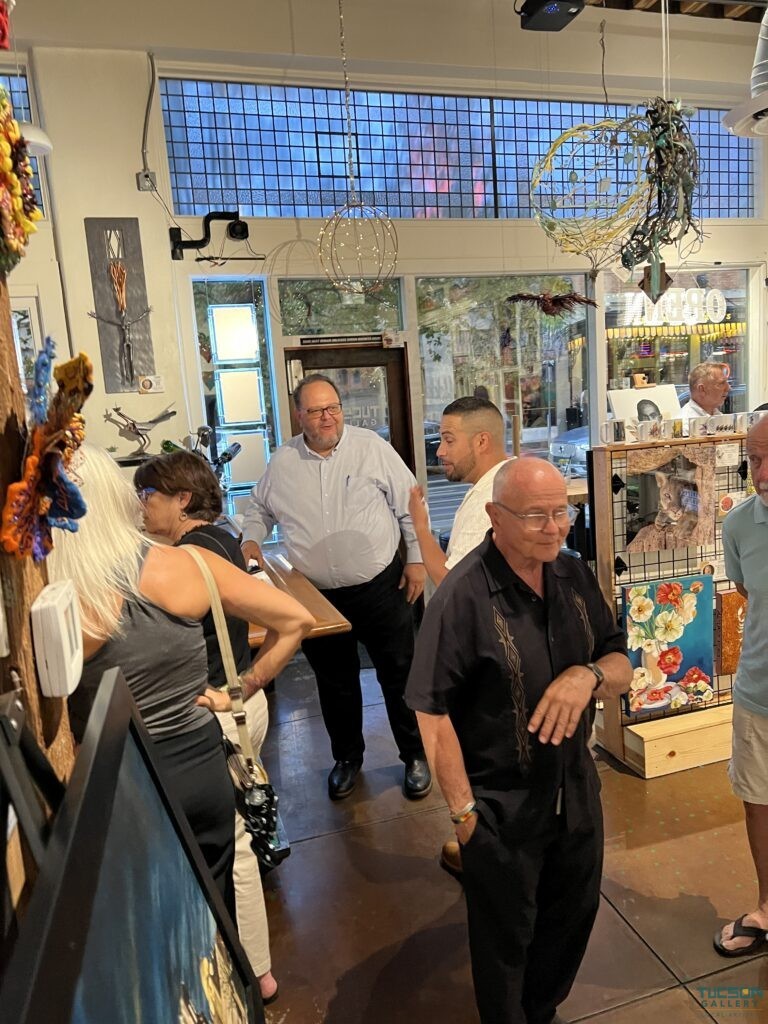
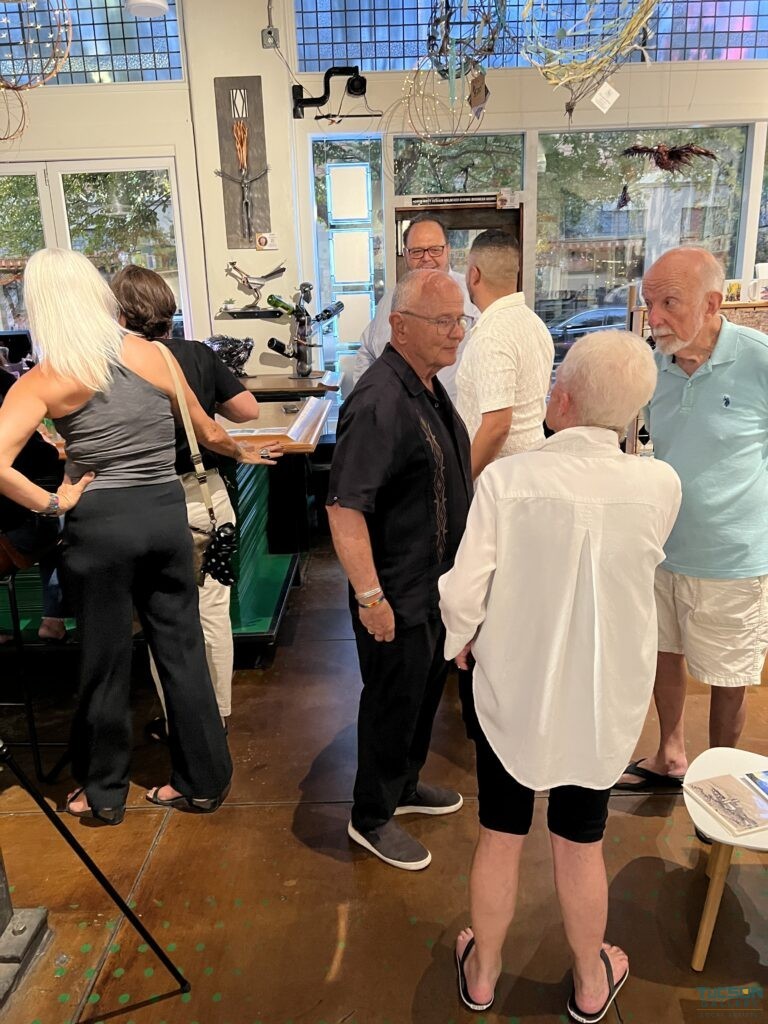
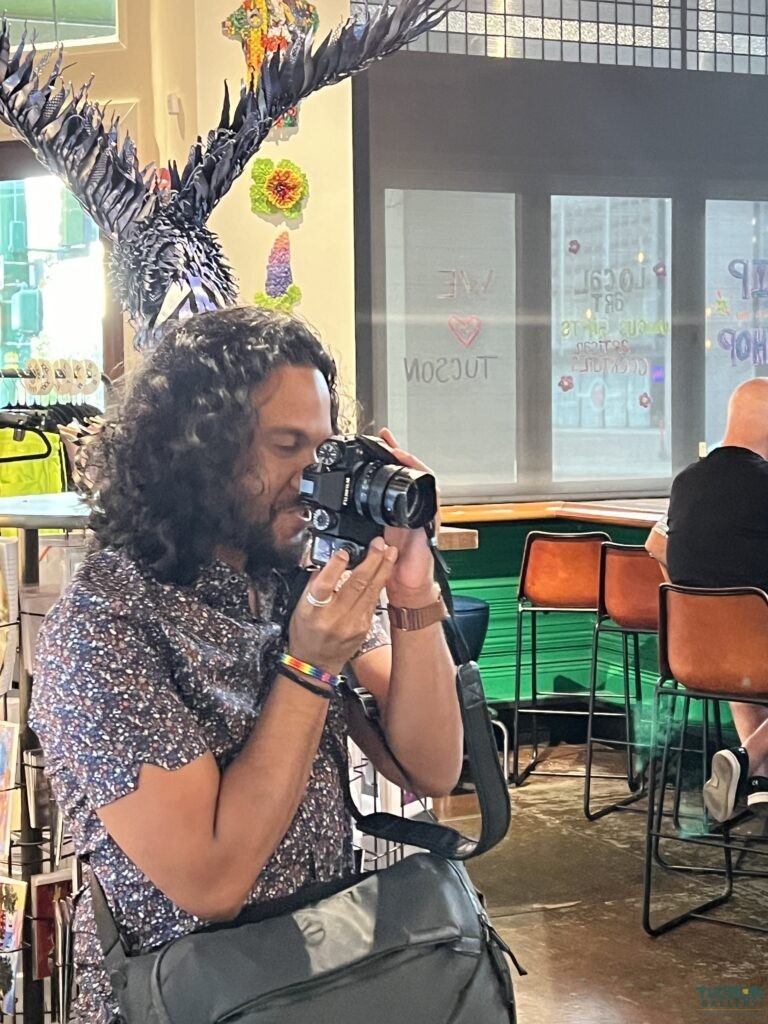
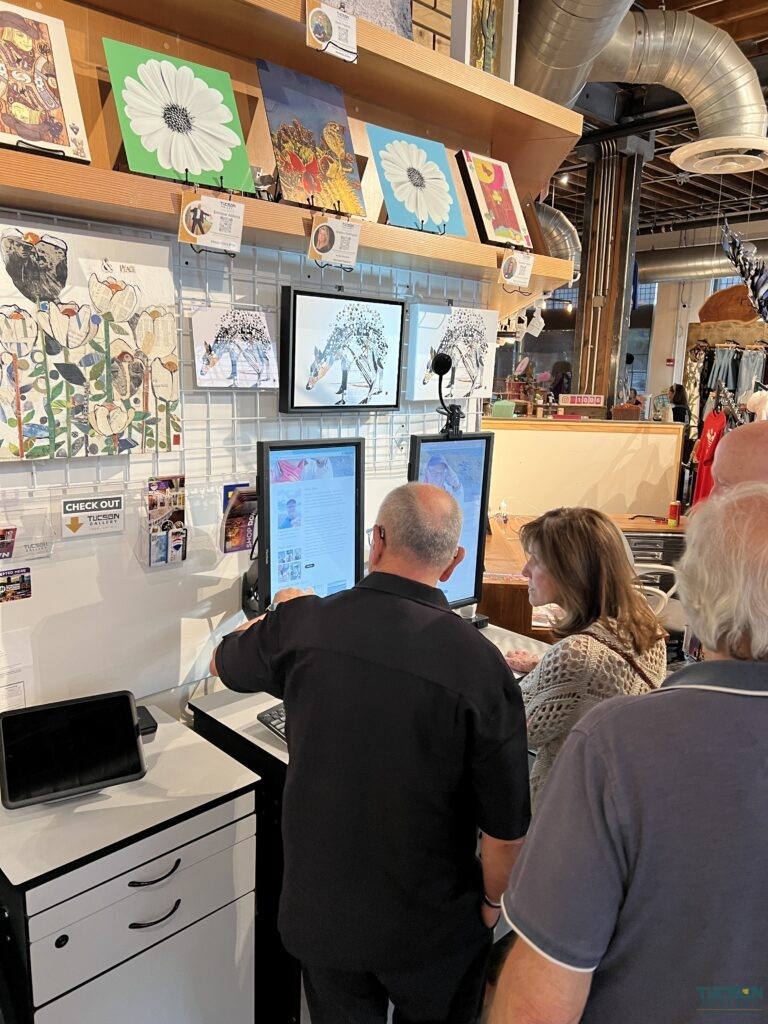
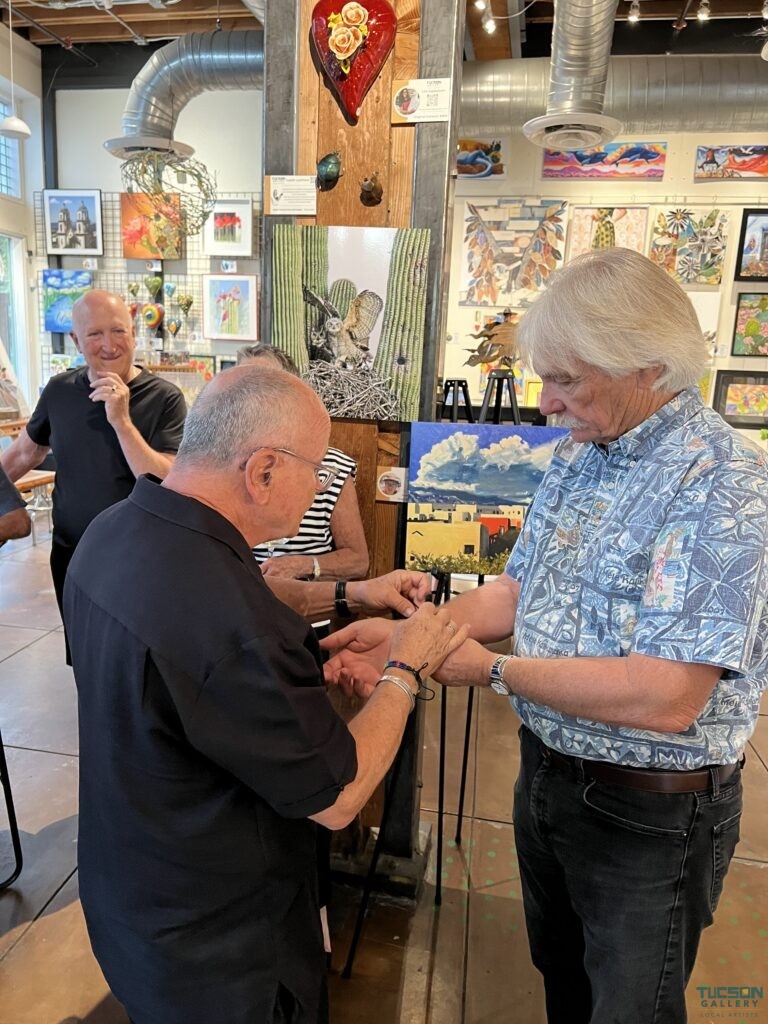
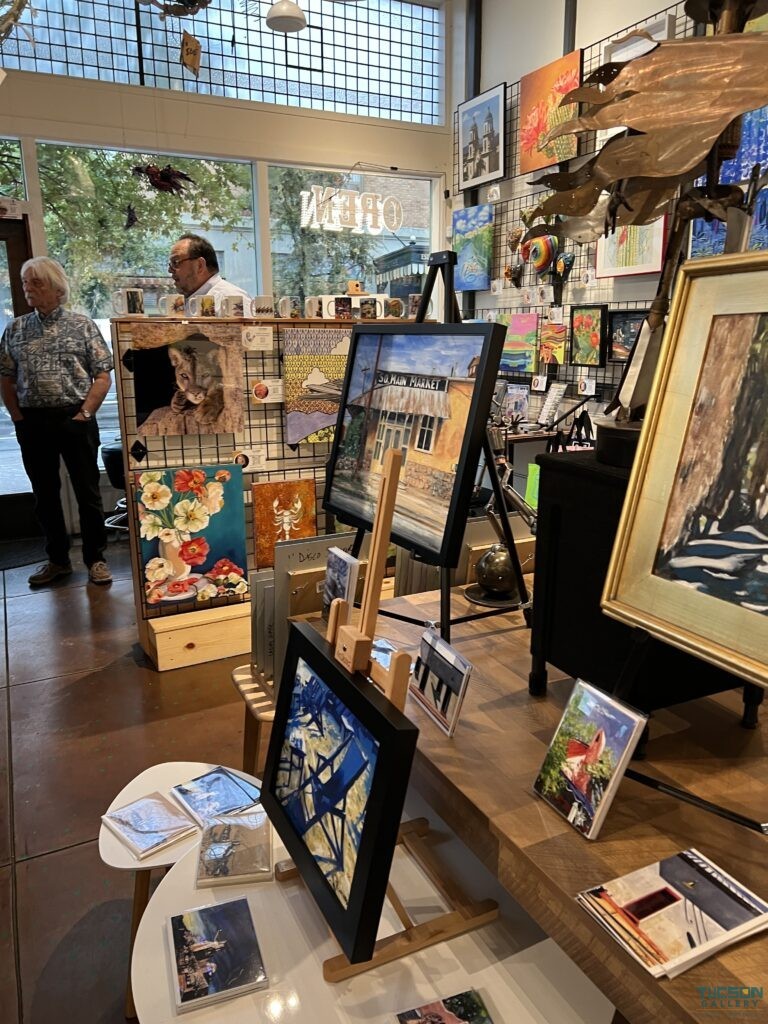
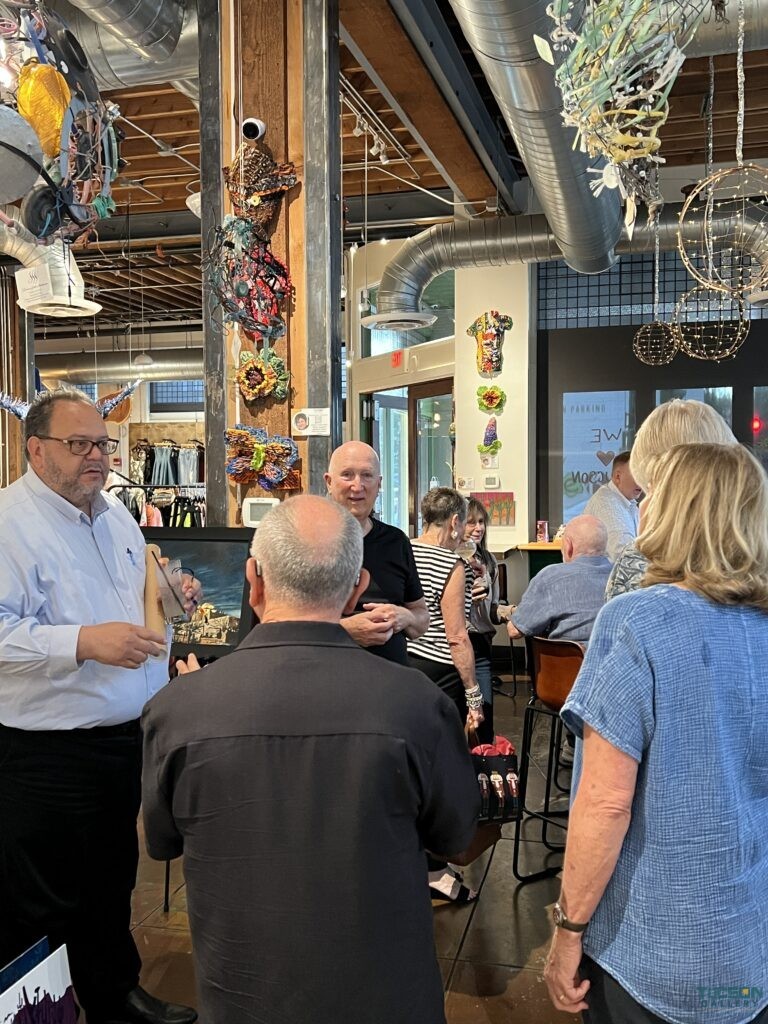
Welcome to the Tucson Gallery’s exclusive “Meet the Artist” series, where we celebrate the incredible talents and stories of our featured artists. In our latest installment, we had the privilege of hosting Rob Waters, a distinguished representational artist known for his unique ability to capture the essence and spirit of his subjects. This event, titled “Capturing Essence: Rob Waters on the Art of Seeing Differently,” offers a deep dive into Rob’s artistic journey and his philosophical approach to art.
About Rob Waters: Rob Waters is celebrated for his exceptional skill in creating artworks that reflect the way we truly see the world. His pieces are characterized by lost and found edges, dynamic gestures, and familiar shapes, all of which come together to create a vivid and authentic visual experience. Rob’s journey through various artistic mediums ultimately led him back to his passion for oil painting, where he has found the freedom to express the fluidity and depth of his subjects.
Event Highlights:
- The Artistic Journey: Rob discusses his transition from graphic design to rediscovering his passion for oil painting, fueled by the gift of a beautiful easel.
- Philosophy of Art: Insights into Rob’s philosophy of staying loose and free in his work, allowing the medium to speak for itself and capturing the true essence of his subjects.
- Emotional Resonance: Exploration of how Rob uses abstract media to evoke emotional responses and open windows for viewers to experience the world through his eyes.
- Techniques and Styles: A look at Rob’s diverse range of techniques and styles, from oil painting to staccato pencil lines and sky sketches.
- Community and Connection: Rob’s experiences in various artistic communities, including his time in New York, Boston, and Tucson, and how these environments have influenced his work.
- Viewer Interaction: The importance of viewer interpretation and interaction with art, as discussed through Rob’s candid stories and experiences.
Transcript Excerpt: During the podcast, Rob shares: “I relish and revel in paint strokes and the consistency of thick paint. When you step back, you can take it in as a whole. Up close, you can see what my brush was doing. It’s all about capturing movement and attitude in a quick, gestural way.”
Listen to the Full Episode: To dive deeper into Rob Waters’ artistic world, listen to the full episode of “Meet the Artist” on our SoundCloud page.
Watch the Event Video: Catch the entire conversation and see Rob’s expressive work in action by watching the video podcast on our YouTube channel.
Explore and Engage:
- Explore More of Rob Waters’ Work: Discover Rob Waters’ incredible artworks and learn more about his artistic journey on his artist page.
- Join Our Next Event: Don’t miss out on our upcoming events! Stay updated and be part of our vibrant art community by following our event calendar.
- Follow Us: Keep up with the latest news, events, and artist features by following Tucson Gallery on Facebook and Instagram.
About Tucson Gallery: Located at 300 E Congress St, Tucson, AZ 85701, Tucson Gallery is dedicated to supporting local artists by providing a space to showcase their art, engage with the community, and connect with a global audience. We offer a wide selection of art, gifts, and merchandise created by Tucson’s modern, thought-provoking, and forward-thinking artists.
For more information about our live events, podcasts, and the wide array of art we offer, visit Tucson Gallery.
Thank you for your support, and we look forward to seeing you at our next event!
Transcript (Unedited)
Tom Heath
Welcome back to another installment of Meet the Artist. It’s a production of the Tucson Gallery. We are down here in downtown Tucson at 300 East Congress Street or in the proper shops across from Hotel Congress, or really close to the Rialto Theater. And we have about 35 featured artists in the gallery. Every now and then we get one of them to give up a few of their hours.
Tom Heath
In an evening, they come in and meet their fans. And, when they’re here, we recommend doing a podcast so we can preserve their oral history for, posterity sake. And tonight we have, Rob waters with us. So, Rob, welcome to meet the Artist guys.
Rob Waters
Thank you. Thanks very much. Good to be here.
Tom Heath
All right. Well, we, we are in downtown Tucson. And if you look a lot of your work, it looks like you might spend some time in downtown Tucson yourself.
Rob Waters
I do, I do, I try to get it all over town, but downtown is a favorite spot.
Tom Heath
And when I first looked at your, the work that you were doing, some of the things that stood out to me were like your doorways and, your your barrio photo, images. So they’re they’re really just stunning.
Rob Waters
Well, thank you. Thank you so much.
Tom Heath
You’re welcome. Well, I’m going to invite you on a podcast and insult you. Your brush strokes are too heavy.
Rob Waters
It’s embarrassing. This is not a critique. Thank goodness. Okay.
Tom Heath
Huge, huge fan. This is, you know, part of the reason why Tony right there and I opened the gallery is, is individually, we don’t have much talent. So collectively, we can lean on, the talents of our community and take some, some credit for sharing it with the world.
Rob Waters
No, thanks. Thanks for supporting local artist. I really appreciate it. We all do.
Tom Heath
Thank you. Well, we’re happy to do it now. Yeah. If I remember correctly, reading your bio, which is available on the Tucson Gallery’s website, you are not a native Tucson. That’s right. You’re California.
Rob Waters
California, Southern California, Ontario, California, outside of Los Angeles.
Tom Heath
I’ve been in the airport. Yes, that’s about the extent of my area passed through.
Rob Waters
There used to be a racetrack there, too. That was a it no longer exists, but it.
Tom Heath
Were you, were you a transplant then from Southern Cal, did you like, did you lose a bet? Because most people don’t leave Southern California like San Diego in that area to come here, right?
Rob Waters
What got into me? I actually I grew up in Southern Cal. I went to school, in San Diego, undergraduate. I went to Art Center College of Design in Pasadena. And then I sort of the coop I moved to New York City.
Tom Heath
Okay. And that makes a little more sense than okay. Yeah, West coast, East coast, kind of explore the world, right?
Rob Waters
So I popped around a few places. So it’s been been a fun experience.
Tom Heath
But what and what brought you what hopped you into Tucson? What was the.
Rob Waters
Okay, well, let’s see. So I did move. Okay. I was in New York, was in graphic design. I spent a lot of my life as a graphic designer. Okay, but I studied illustration in art school, and, decided I. I needed to make some money, so graphic design was a, a great transition for me.
Tom Heath
Yeah, I mean, I, I didn’t realize that you had studied illustration in college. I needed graphic design, but I realize you’d studied that, right?
Rob Waters
No. Yeah, I was there for a couple of years at Art center, and, it was a great experience. Is a great. It was like graduate school. Yeah. Art center is a really intense program. They’re known for their industrial design. Okay. Graham. And and they do a lot of, putting out a lot of, automotive designers that are top notch.
Tom Heath
Oh, wow.
Rob Waters
And illustrators and, and so the finest illustrators have gone through Art Center College of Design. And so I hope that that would sort of osmosis is a.
Tom Heath
Know what feels like an osmosis of that osmosis.
Rob Waters
It I think it did. It still is. I still remember those days. And, and the things that were learned and talked about it. Yeah. Okay. So good good. Good experience. Good. Very.
Tom Heath
And so you’re, you’re, you’re in New York, you’re working I mean that’s a great place to be if you’re in design and illustration and you’re probably working for what were you like one of those mad men? Were you working on Madison Avenue? Right.
Rob Waters
Quite. Not quite. No. I was I actually worked at the Met Opera. I oh, I was in that opera for about seven years as a graphic designer. I worked in that merchandizing department, and did, a lot of, it’s, album, jacket, design and, and programs. And I really, I mean, like, I what am I saying?
Rob Waters
Like the program notes and the jacket, the, the all of the things that surround them.
Tom Heath
For the opera.
Rob Waters
Yes. Okay. Opera. I didn’t know too much about opera, when I took the job, but it was a great education again. And and just being at Lincoln Center every day was pretty easy.
Tom Heath
Oh, I can only imagine. I mean, if you ask how old you were at this point, you.
Rob Waters
I’m sure, but I won’t tell you. Perfect.
Tom Heath
Ask anything you want.
Rob Waters
I was about how old I was. Probably the 27.
Tom Heath
Oh, my gosh, 27 years old in New York looking at Lincoln City. Oh my gosh.
Rob Waters
Exactly.
Tom Heath
That’s like. That’s like the dream if you’re in design, right? I mean, you got to be surrounded by all these people that are just feeding off this, the same energy.
Rob Waters
Yeah. Yeah, it was a great place to live. And, a hard place to live to. It was, not as hard as now, but I wish I had been able to sink my, pocketbook into some real estate at that point.
Tom Heath
Yeah, yeah, should have cut out.
Rob Waters
But but it was a good time. I tried to get back there once a year. And just do theater and. Yeah. Okay. And values and whatnot.
Tom Heath
So you still have some of those connections that I would imagine reforms, some relationships there over the years.
Rob Waters
A lot of people have moved on. Okay. Passed away. It was a period of, 80, 1981 was, you know, Aids was hitting the world. It came to New York pretty badly. Yeah. My friends have, passed on.
Tom Heath
I know it’s a.
Rob Waters
Sobering, sobering time, I.
Tom Heath
Can imagine. Yeah, all the excitement, but, yeah, the I don’t tend to gloss over all the. I mean, you’re the you’re the melting pot, right? Everyone is there. All the excitement, all the fun. But with that, all of the challenges and the and then the the difficulties.
Rob Waters
Right, right. But it was a good, good time to be there as a young, young person, a younger person.
Tom Heath
A good place to visit as a as a more, seasoned person.
Rob Waters
Exactly, exactly.
Tom Heath
You got a lot more money in the pocket that can maybe can afford a few more things there.
Rob Waters
Yeah, but my, what brought me here to Tucson? My partner, got, a position with Arizona Theater Company, and he ran Arizona here.
Tom Heath
Oh, right down here. Yeah. Oh, Scott. Okay.
Rob Waters
Yeah. So he ran Arizona theater companies, managing directors for six years. Okay. And so that brought me this direction that I love to saw.
Tom Heath
What time frame was this?
Rob Waters
This was, hello, 89 to 95.
Tom Heath
Okay.
Rob Waters
Yeah. And then moved to Chicago again. And, and during that time here in Tucson, I was doing graphic design and some illustration as well, but, freelance, my time here then moved to Chicago, began doing graphic design and, a variety of things. I wasn’t painting like I am today. What got me into into painting?
Rob Waters
Was, my partner, Robert got me at a wonderful easel. We were living on the North shore of Boston at that time there.
Tom Heath
And Boston, we’re just in Chicago.
Rob Waters
I know, so it was the truth.
Tom Heath
Are you, like, on the run? Yes. Rob, water is really your name. That seems like pretty, pretty coincidental for someone who dabbles with watercolor to rob water.
Rob Waters
Exactly. It’s a little too obvious, right? Yeah, it’s a pseudonym.
Tom Heath
I actually, yeah. I don’t tell anybody my real name anyway. So you you’re you’re in Boston and you get an easel for from Robert.
Rob Waters
Yes. And, so you got to get back to painting and I did, and I just have not turned back. And I been enjoying painting a lot more and and, showing and selling. That’s always good. So, so, yeah, it’s, it’s been a good pass. And I still do design. Graphic design a little bit, a little pro bono right now, but, but my painting and drawing, I have a variety of styles.
Tom Heath
Yeah, that was something I wanted to touch on because a lot of the artists that I. And everyone has a creative side that they delve into. But you, yours is a little bit harder to narrow down because you don’t have just a medium you like oil painting of water color. You do, pencil. Right? Right. Yeah. So you do have all these different formats, and I know a lot of artists can, but they don’t necessarily produces prolifically as you do in all of these different areas.
Rob Waters
Thanks. Yeah, I try to I just try to wear several different hats and I, I get bored. So I have a, you know, a variety.
Tom Heath
Of I’ve mastered oil painting. It’s time for something else. Exactly.
Rob Waters
Yeah. You know, I don’t think I can say I’ve mastered it. You know, it’s always a work in progress, but I, I’ve had some I feel like I’ve had some successes with oil painting and, and that’s been really good. It’s been a good adventure. But I, I’ve always been drawing, I’ve drawn since I was a kid. Yeah. But and, and, even in New York, I was doing graphic design.
Rob Waters
I was, I would draw at the Art Students League after work. And work from a life model and, and that’s always been a part of my, my training and my love. I really enjoyed working on the model and working with a group of people, you know, a group of artists that, that come to get the job from the figure.
Rob Waters
That’s always a great study. And, the good practice, good mileage to get. So. So, yeah, I do have a lot of figure drawings. But I don’t show them on my website that much. In terms of my sketches, I do a lot of sketching on airplanes. I have what I call sky sketches, and I draw people on the airplanes.
Tom Heath
That should be a whole thing on your website. Skies. Okay.
Rob Waters
It is.
Tom Heath
I have to go check that out. Sky sketches.
Rob Waters
Yeah. Look under my my sketchbook, sketchbook art and, it is fun. It’s fun stuff. So I have that style and I have the watercolors, colored figures that I do work from, from, nice models and, they’re, they’re fun to do. Not. It’s fun.
Tom Heath
But I was reading, the, some of the stuff that you have on your website, I really appreciated your candor and your your philosophy towards art because you said something. A lot of artists don’t always admit that. Sometimes they do things quickly. And I’m not saying they rush it, but. But you. You intentionally do not take. Like you said, you’re not laborious about your art.
Tom Heath
You like it to flow at a certain speed.
Rob Waters
Right? Yeah. I think that there’s sometimes you lose the freshness of the piece if it’s belabored, at least for me. And, I like the gesture of a brushstroke, not, not overdoing it. When I’m working with the signature, gestures are always so exciting to see where, where you can capture, movement and attitude in a, let’s figure, quickly.
Rob Waters
Yeah. It’s, it’s been a good learning process.
Tom Heath
Really. Yeah. I just I appreciate that and I think, you know, and of course since we’re, we’re doing a podcast, it’s all about me as the host, I found really the same thing when I, when I first started doing podcasts, I was a perfectionist and I would cut and I would edit in a restate and I’d go back and forth and, and there’s, there’s a continuity that just got lost and everything was was articulated correctly, but it didn’t flow properly.
Tom Heath
And I can, you know, now we just we record if there’s errors and we say things as long as they’re not, you know, oh, you know, really bad. Right. We let it slide and more more errors. But there’s also a better product at the end. And I’m not saying your art’s filled with errors, but but I he’s looking at me like, what’s wrong?
Tom Heath
What’s wrong with my art? But what I say, you know, that slow, that spontaneity that you get that inspiration, it flows through and you can see it in and in your work.
Rob Waters
No thank you. And I do think that my artwork is filled with errors. I mean, it’s, it’s sort of process. My, I, I’d like to think that my work shows a process. And, even in my, my sketches, I don’t always put down the right line. But then I corrected, you can still see where I’ve gone at first, and then I’ve gone back to correct.
Rob Waters
I, I kind of like that process where you, where it’s like, oh yeah, that’s that wasn’t quite right. Let me try it again. So yeah.
Tom Heath
Cuz you’re, you’re, you are showing that process from start to finish. You’re showing the entire iteration of that piece of art versus hiding some of it because you, you didn’t like the way it looked and that that’s that’s brave in some ways I think.
Rob Waters
Or stupid, I don’t.
Tom Heath
Either way. I mean, usually it’s hard to tell between the two right here. He’s you saw a fine.
Rob Waters
Line, but.
Tom Heath
One of the first pieces you brought into the gallery was Holy Week, and it was a picture of a of a barrio setting a door, a lot of a lot of vegetation around it. And, when we were hanging it, it was interesting because my two businessperson and I were here and it was late on a Wednesday night.
Tom Heath
We had just reset the entire gallery, so we’re kind of tired and we’re looking at it and this, this thought and, and bear with me till the end of the to the end of the sentiment here. The way we looked at it, it seemed like, you know, this, this maybe isn’t our favorite piece of Rob’s. And, you know, we’re just right up close on it.
Tom Heath
And then we put it on the wall and we walked away from it a few feet, and all of a sudden, all this depth and richness sort of popped out that we couldn’t see right up close anyway. Oh my gosh, this is one of Rob’s best works. We love this piece.
Rob Waters
Thank you, thank you.
Tom Heath
Is that is that an intentional technique or are we just really tired.
Rob Waters
Or were you doing drugs? I don’t know, no. I think that was intentional. I, I don’t, I’m not a photo realist, but I, I think I want to I’m looking up at the piece up in the corner, just to remind me, remember, what it was like to paint it. And I do relish and revel in paint strokes and the consistency of sick paint and paint.
Rob Waters
But whatever the case may be that I got that one pretty sick in the foreground with the.
Tom Heath
Vegetation, and that might be what it is. But, you know, just from that you get to to 5 to 6ft away from it and you’re staring at it and it really, it really takes on a different character than when you’re right on.
Rob Waters
Right. So you have to step back and take it in, and it comes together more, as a, as a whole. You get up close, you can see what my brush was doing.
Tom Heath
It was very representative of the barrio. Yeah. I think you have a lot of work. It’s not exclusively to downtown, but a lot of what you bring into us because we’re located in downtown is is, you know, kind of the artwork that we have is a lot of focus on that. But your your website is from.
Rob Waters
Rob waters fine art. Dot com.
Tom Heath
Fine art. Yes. Nice.
Rob Waters
Easy to find. Yes. Not water’s fine. Okay. Yeah.
Tom Heath
And you know, we also have a lot of things on our, on our, on the Tucson galleries, web page with your artist. On your artist bio, there’s merchandise that can be purchased and things of that nature. In the gallery, we’ve got cards and some originals and, a few, reproductions, I believe that we’ve got in here.
Tom Heath
Right. So it’s it’s a great chance. If you’re not familiar with Rob waters work, head to Rob Waters Fine arts.com, or head over to the Tucson gallery. Dot, dot com and check it out. And if you’re on the Tucson Galleries page, maybe sign up for our events. Because these meet the artists things, they pop up training as we get into the fall, start doing them more, you know, monthly, and, you just never know who’s going to stop by and, and share a little love and, and, and, and tell us about their, their techniques and their style and share a cocktail and have a fun time.
Rob Waters
Yeah. All all that is rolled up into this one corner.
Tom Heath
Yeah.
Rob Waters
It’s it’s great what you would you provide here for the community.
Tom Heath
Do you have social media that people can follow. Do you do social media.
Rob Waters
Yeah I post my, my work on Facebook and and Instagram as well.
Tom Heath
As a Rob waters fine art there as well.
Rob Waters
You know, I should know that address if you just Google or if, you.
Tom Heath
Know, we’ll figure it out.
Rob Waters
Here’s fine artist. It’s not from some might be. Yeah I want AW1228. I’m not sure that’s my birthday, so.
Tom Heath
Well, 1 to 2, 1220.
Rob Waters
8 or 28. Yes, I got one.
Tom Heath
Yeah. We’re halfway there for you.
Rob Waters
We’re halfway here. Right.
Tom Heath
But if you have any, any desire to check out Rob’s rock, you can do it at the to sign galleries.com or or his website. Check out the Instagram or Facebook. And of course, we’ll be linking to a lot of things through our Facebook page. And Rob, I appreciate you taking the time today to share with us.
Tom Heath
I’m, I’m glad that you made it back to Tucson and and hopefully the heat’s off and you can stick around for a while and whatever, whatever statute of limitations is expired and you’re able to.
Rob Waters
Well thank you. Yeah. My past has been a little convoluted, and I, I may have made it more confusing the should at the end, but, yeah. Thanks for following my track and what got me here. I love Tucson. It’s my home. It’s a great place.
Thank you for listening to Meet the Artist. This is a weekly production by the Tucson Gallery, located inside of the proper shops at 300 East Conca Street in Tucson, Arizona. The mission of the Tucson Gallery is to support local artists by providing a space to show their art, a forum to engage with their audience, a virtual presence to connect with global patrons, an outlet to earn a fair price and opportunity to hone their business skills.
Head over to the Tucson gallery.com for more information about our live events. Listen to other Meet the Artists podcast and check out the wide selection of art, gifts and other items created by Tucson’s modern, thought provoking and a forward thinking artist.
